Home > News & Articles > How to Become a Scientist In India: (Step by Step Guide) After the 12th, Types, Entrance Exams, Courses, Top Colleges, and Salary 2024


Nikita Parmar
Updated on 03rd August, 2024 , 13 min read
How to Become a Scientist In India: (Step by Step Guide) After the 12th, Types, Entrance Exams, Courses, Top Colleges, and Salary 2024
How to become a scientist overview.
Look around, everything you see around you has been conceptualised, discovered or invented by scientists. Scientists are individuals who are deeply interested in the surroundings, and matter and aim to build things to help humankind. If you too wish to do the same, you should consider becoming a scientist. scientists study subjects like Biology , Physics , Chemistry , or Maths. Scientists work at top organisations in India and Abroad, institutions like ISRO and NASA.
Who is a Scientist?
A scientist seeks facts and information that may be measured or compared using various analytical and testing methods. Scientists employ scientific procedures in their search for evidence-based results or hypotheses. A job as a scientist is not simple, but if one is passionate about it, one will have a fantastic time pursuing it.

How to Become a Scientist in India: Quick Facts
The following table explains the quick facts about how to become a scientist in India-
| Details |
Industry | Science & Technology |
Eligibility | Ph.D. degree in a relevant science stream. |
Job Opportunity | Working at a variety of reputable organizations and laboratories both in India and overseas. |
Average Starting Salary | INR 9.60 LPA & above |
Average Salary | INR 5.17 LPA – 8 LPA |
Highest Salary | INR 18 LPA & above |
Average time taken to become a Scientist
A BSc degree normally takes 3 years to finish, whereas integrated programs may take 5 years . A master's degree typically takes two years to complete, whereas a doctorate program takes three to four years . Furthermore, reputable laboratories, research centres, and teaching roles may demand a few years of work experience.
Also, read more about the BSc Nursing Salary in India 2024 .
Eligibility Criteria Required to Become a Scientist
The following are some of the eligibility criteria required to become a scientist in India-
- The first and most important qualifying criterion for becoming a scientist is that ambitious students must have completed their 10+2 from a board recognized by the state or national government, with PCM or PCMB as their subject combination, with at least 70% aggregate marks or a comparable CGPA .
- Students wishing to become scientists must first get a bachelor's degree from a recognized institution or college , with science as their primary subject and a related subject combination. The subject will differ depending on whether they choose chemistry, physics, biological science, or mathematics.
- Students must have a minimum aggregate grade point average of 60% and have passed each course independently.
- Students who wish to become scientists after finishing their undergraduate degrees must get a postgraduate degree from a recognized university/college in a relevant topic related to their bachelor's degree with a minimum of 60% in aggregate and must have passed each course separately.
- Students must have a doctorate or Ph.D. in their respective topic, as well as sufficient research and laboratory experience.
Types of Scientists in India
Science-related knowledge and abilities are required for a broad variety of occupations and jobs, including research, industry, regulation, and education. The following table gives detailed information about the various types of scientists in India-
|
|
Business Scientist | They help firms and other enterprises make evidence-based decisions by combining strong management and business skills with scientific knowledge. This type of scientist is self-assured in the workplace and possesses the scientific and technical competence required to be trustworthy with both coworkers and competitors. They may be found in a variety of jobs in scientific and technological organizations, ranging from R&D to marketing to the C-suite. |
Communicator Scientist | They combine communication abilities with a scientific and technological understanding to inspire, enlighten, and successfully convey their message via empathy and awareness of the audience's needs, knowledge of how media and other communication channels work, and, of course, a solid understanding of the science involved. |
Developer Scientist | They are also known as translational scientists, who convert previously useless information into something useful to society. These might be the development of new products or services, thoughts that influence behavior, advances in medical treatment and medicine, or the application of present technologies in unique circumstances. |
Entrepreneur Scientist | They generate innovation. Their relationships and scientific expertise enable them to identify opportunities for innovation not just in the business sector, but also in the public sector and other parts of society. They start their own businesses or try to develop existing ones by combining their scientific knowledge with strong commercial and financial acumen, people management skills, and an entrepreneurial spirit. |
Explorer Scientist | They are like the crew of the Enterprise, who focus on a specific conclusion or impact, preferring to discover the next piece of the jigsaw puzzle of scientific knowledge and comprehension. They are more likely to be observed working alone in a research center, institution, or company's R&D. |
Investigator Scientist | They investigate the unknown by observing, describing, comprehending, and assembling extensive information and data, setting the framework for future interpreters and developers. They are most likely to be found working as part of a team in a multidisciplinary context at a university or research centre, or in an organization's research and development (R&D). |
Policy Scientist | They use their skills in research, technology, governance, and policymaking to ensure that legislation and policy have a sound empirical foundation. This type of scientist works and is involved in a number of settings, including government and parliament, non-governmental organizations (NGOs), advocacy organizations, and charities. |
Technician Scientist | They provide operational scientific services. These are the experts we rely on in , , health and safety, material analysis and testing, education, and many other sectors. |
How to become a Scientist at CSIR in India?
The Council of Scientific and Industrial Research, or CSIR, is a top-tier institute that works in research and technology. CSIR has 38 laboratories across the country that hold recruitment drives through which people might obtain positions all throughout the country. The following are the steps to becoming a scientist at CSIR-
- The CSIR provides scholarships to doctorate candidates.
- The Recruitment and Assessment Board is in charge of CSIR recruiting (RAB) B.E/ B.Tech. / M.Sc. in relevant subjects is the minimal minimum qualification for CSIR.
- More qualifications can boost career opportunities.
- Applicants who serve as CSIR research fellows have a higher chance of becoming CSIR scientists.
- Candidates can apply to join CSIR as research fellows by taking the CSIR NET JRF test, which is administered by the council.
How to Become a Scientist in India at ISRO?
Getting into IIST may be one of the most sure-fire methods to get into ISRO (Indian Institute of Space Science and Technology). ISRO also employs students from IITs, NITs , and other prestigious universities. Below are the processes to becoming an ISRO scientist in India-
- A degree in areas like Aeronautical Engineering , Mechanical Engineering , Radio Engineering, and engineering Physics will help you get a job with ISRO.
- Moreover, candidates must have a minimum grade point average of 65% in their degree.
- Applicants may also take the ICRB Exam in order to be employed as a scientist or engineer by ISRO.
Also read more about the ISRO Scientist Salary in India .
How to become a scientist at nasa.
NASA demands a variety of educational degrees . A master's degree in physical and biological sciences is the basic minimum. A doctorate, on the other hand, can jumpstart a career as a scientist at NASA. After earning their bachelor's and master's degrees , candidates must apply for NASA's various scholarships. Another requirement is that one has publications in reputable journals and referrals from other scientists.
How to Become a Medical Scientist in India?
Those interested in a career as a medical scientist can obtain a bachelor's degree in biology, chemistry, or a related discipline. Attending lessons in disciplines such as biological sciences, physical sciences, and math might also be beneficial.
Also read more about the Great Mathematicians of India and Orbital Velocity Formula.
Other methods to becoming a medical scientist in India include-
- Students often seek their Ph.D. after finishing undergraduate and postgraduate courses. Students can also seek dual-degree programs to obtain both the clinical abilities required of a physician and the research skills required of a scientist.
- Medical Doctor (M.D.), Doctor of Dental Surgery (D.D.S.), Doctor of Dental Medicine (D.M.D.), Doctor of Osteopathic Medicine (D.O.), and advanced nursing degrees are among the courses offered in conjunction with the Ph.D. study.
- Medical research involves laboratory work as well as original research.
Read more about the Great Scientists of India .
How to become a data scientist in india.
Data science is yet another rising business occupation. An M.Sc. in Mathematical Statistics is the basic minimum for a data scientist. Besides this, applicants must possess a number of additional abilities, including-
- Proficiency in coding and programming abilities.
- One should be familiar with statistical analysis.
- The candidate should have knowledge of machine learning methods such as linear regression, logistic regression, and others, as well as R and Python.
- Mastery of SAS and technologies such as Rapid Miner, Tableau, and others.
- To become a data scientist, one must have exceptional communication abilities as well as strong data intuition.
Steps to follow on How to Become a Scientist in India
One must start their studies soon after high school. Pick a scientific subject of interest and narrow it down to a specific niche. Therefore, the initial step in the procedure is to pick between PCM and PCB immediately following their 10th board examination. If they want to be scientists, they must be very strong at arithmetic. Because research in general works with statistics, expertise in math is essential.
Become an expert in your field
Have a clear notion of the niche field one wishes to explore. Choose a bachelor's degree from a variety of options such as physics, mathematics, biology, astronomy, geology, social sciences, and more. One can also take professional courses in their field of interest, such as B.Tech, B.Sc, B.Pharma , and so on.
Seek Further Education
A bachelor's degree is not necessary to become a scientist. While a bachelor's degree will give a solid foundation, master's and doctoral degrees may be required to broaden the knowledge base.
Entrance Exams to Become a Scientist in India
After meeting the numerous eligibility conditions, students must apply through several admission tests for their bachelor's, master's, and doctorate degrees. Entrance to various educational institutions differs according to university/college policies. There are a few national-level exams for a Ph.D. degree, such as the UGC NET Test, CSIR- UGC NET Exam, NCBS JGEEBILS, DBT JRF biotech entrance exam, ICMR JRF fellowships, JNU Ph.D. entrance test, JRF-GATE, and so on. The following are some of the entrance exams to become a scientist in India-
B.Sc Entrance Exams 2024
Entrance tests are used to determine BSc admission. Several national, state,March-May and institution-level admission tests are held throughout India. The table below contains some of the test schedules and BSc online form end date 2023 for the major BSc entrance examinations in India-
|
|
|
CUET | March 26, 2024 | May 15 to May 31, 2024 |
JET | 1 Nov 2023–14 Apr 2024 | 15, 16 Apr, 6, 7, 23 May 2024 |
NPAT | 6 Dec 2023–20 May 2024 | 1 Jan–25 May 2024 |
SUAT | 10 Feb '24 | May '24 |
Ph.D. Entrance Exams 2023-24
A few national-level entrance examinations are included in the table below along with application deadlines, conducting bodies, exam dates, and so on-
|
|
|
|
|
UGC NET | UGC | March–May 2023 | July 2023 | Online |
CSIR UGC NET | UGC CSIR | 2nd week of August – 3rd week of September 2023 | 3rd week of December 2023 | |
| IISc & IITs | August 30 – October 7, 2022 | 4, 5, 11 & 12 February 2023 |
Courses to Become a Scientist in India
There are numerous paths to becoming a scientist in India. To become a scientist, students must complete a number of courses. The following are some of the bachelor's, master's, and Ph.D. courses to become a scientist in India-
Bachelor's Degree
After Class 12, BSc is a common course of study for science students. It gives comprehensive theoretical and practical knowledge in a variety of scientific subjects such as physical science, applied science, chemistry , mathematics, economics, biology, agriculture , horticulture, animation, and so on.
Also, read more about the Courses After 12th Science Biology .
Students who are enthusiastic about learning interdisciplinary science and mathematics can enrol in this course. The course is appropriate for students who desire to work in research areas such as pharmaceuticals, healthcare, manufacturing, and information technology. BSc Honours and BSc General are the two sorts of BSc degrees. Both are three years long and have the same criteria. Students learn the fundamental skills and information required to operate in a dynamic workplace as a researchers, teachers, lecturers, consultants, counsellors, and so on. INSPIRE Scholarships, HDFC Educational Crisis Scholarship Support (ECSS), Promotion of Science Education (POSE) Scholarship, Kishore Vaigyanik Protsahan Yojana (KVPY), and other scholarship possibilities are also available. Students with a BSc can continue their education by pursuing a Master of Science (MSc) or a Master of Business Administration (MBA) .
The BSc Admission Procedure is mainly based on merit. Nonetheless, some colleges, such as IAT IISER, OUAT, NEST, and others, accept admission through entrance exams.
- Merit-based BSc Admission: Prominent Delhi University colleges such as Miranda House, Hindu College , and others admit students based on their Class 12 grades as well as their cut-off lists.
- BSc Admission Via Entrance Exams: Certain universities, like Aligarh Muslim University , IISER, Orissa University Agriculture and Technology , and others, provide admission through entrance tests. Eligible students will be summoned for an entrance exam and personal interview once their applications have been reviewed.
Eligibility Criteria
The BSc eligibility criteria may differ based on the institution chosen, and the candidate must fulfil all of the criteria to be admitted to the top BSc colleges. The fundamental BSc course eligibility requirement is a minimum of 50% in Class 12 from any recognized board . Several prestigious institutions require 60% averages. In the upper secondary level, pupils must have studied key topics such as Math, Physics, Chemistry, and Biology. In India, the minimum age for admission to a BSc course is 18 years .
Top Bachelor's Colleges with Their Fees
|
|
| Rs. 95,000 |
| Rs. 73,545 |
| Rs. 3,63,000 |
| Rs. 44,685 |
| Rs. 59,400 |
| Rs. 43,665 |
| Rs. 68,685 |
| Rs. 1,29,000 |
| Rs. 2,43,000 |
Master's Course
Master of Science (MSc) is a two-year postgraduate science program that provides in-depth practical and theoretical understanding in a variety of scientific subjects such as Chemistry, Physics, Biology, Mathematics, Botany , Zoology , Pharmacy , and Nursing.
Also, read more about the ANM Nursing Course and GNM Nursing Course .
Ph.D. candidates must have an MSc degree. To pursue a Master of Science program, individuals must possess certain talents such as problem-solving abilities, analytical abilities, research abilities, and so on. The MSc curriculum varies depending on the MSc Specialty.
Admission Process
To learn about the MS Admission procedure, candidates can follow the stages outlined below-
- Examine their eligibility for the MS admission test.
- Attend the examination.
- Examine the cut-off lists.
- Schools that provide entrance exam-based admission will use the entrance exam score as a cut-off point and will hold a counseling session.
- Students will get their final admission after the counseling session or the publishing of the cut-off list.
- Selected students are required to pay the entrance fee on time.
Eligibility Criteria
- To get admitted to the MS program, students must have a minimum of 50%-60% in UG Science or Management from a recognized board.
- To be eligible for admission to the MS program, students must have taken an entrance examination such as GATE , CAT , or similar.
- Students must have a doctorate or PhD in their respective topic, as well as sufficient research and laboratory experience.
Top Master's Colleges with their fees
|
|
Amrita Vishwa Vidyapeetham | Rs. 1,09,800 |
| Rs. 6,245 |
| Rs. 1,00,000 |
| Rs. 3,040 |
| Rs. 20,000 |
| Rs. 1,02,500 |
| Rs. 1,311 |
| Rs. 76,000 |
| Rs. 46,835 |
| Rs. 21,000 |
| Rs. 49,629 |
| Rs. 3,980 |
University of Hyderabad | Rs. 9,255 |
| Rs. 10,985 |
Ph.D. Courses
Ph.D. Science is a research-oriented program. Students do experiments and strive to find new concepts and incorporate them into their theses through observation, questioning, modelling, and research. One of the primary goals of a PhD science course is to equip students to do research on science learning and teaching in various scientific fields. Physics, chemistry, biology, computer science, life sciences, and other subjects are covered in this course.
Top Ph.D. Colleges in India with their Fees
|
|
| Rs. 35,000 |
| Rs. 52,000 |
| Rs. 23,235 |
| Rs. 6,000 |
| Rs. 36,000 |
| Rs. 42,000 |
| Rs. 6,970 |
Stella Maris College | Rs. 85,000 |
St Xavier's College | Rs. 23,000 - 38,000 |
Recruiters for Scientists in India
Scientists will be in high demand in government and corporate organizations as the human population grows and technology advances. Some of the organizations in our nation that hire skilled scientists include-
- Aeronautical Development Agency (ADA)
- Archaeological Survey of India (ASI)
- Aryabhatta Research Institute of Observational Sciences (ARIES)
- Bhabha Atomic Research Centre (BARC)
- Council of Scientific & Industrial Research (CSIR)
- Defence Research and Development Organization (DRDO)
- Indian Airforce
- Indian Association for Cultivation of Science (IACS)
- Indian Council of Agricultural Research (ICAR)
- Indian Institute of Science Education and Research (IISER)
- Indian Institute of Tropical Meteorology (IITM)
- Indian Space Research Organization (ISRO)
- Institute for Stem Cell Biology and Regenerative Medicine (InStem)
- International Flavors & Fragrances India Ltd
- Ministry of Mines
- National Aeronautics and Space Administration (NASA)
- National Centre For Cell Science (NCCS)
- Tata Institute of Fundamental Research (TIFR)
Job Roles and Salary of Scientists in India 2024
The following table gives details about the types of job roles and their salary in India-
|
|
|
|
Astronomer | Rs. 6,00,000 – 8,00,000 | Rs. 8,00,000 – 10,00,000 | Rs. 10,00,000 – 15,00,000 |
Agronomist | Rs. 1,00,773 | Rs. 5,81,660 | Rs. 7,97,430 |
Botanist | Rs. 2,47,301 | Rs. 5,89,581 | Rs. 11,63,496 |
Epidemiologist | Rs. 1,52,051 | Rs. 6,16,736 | Rs. 12,22,370 |
Microbiologist | Rs. 1,32,819 | Rs. 2,93,865 | Rs. 9,38,883 |
Geologist | Rs. 2,31,402 | Rs. 5,09,972 | Rs. 13,68,460 |
Meteorologist | Rs. 1,20,000 | Rs. 3,00,000 | Rs. 6,00,000 |
Marine Biologist | Rs. 99,550 | Rs. 4,50,000 | Rs. 10,45,437 |
Paleontologist | Rs. 2,00,000 | Rs. 5,00,000 | Rs. 10,00,000 |
Seismologist | Rs. 7,39,000 | Rs. 7,80,000 | Rs. 8,10,000 |
Skills Required to Become a Scientist in India
If one wants to learn how to become a scientist, he or she must first understand the abilities required. These are a few talents and habits one should develop in our daily life-
- Developing Writing Skills- To acquire funds and publish research findings. As a result, outstanding writing abilities are required in this sector.
- Having a Solid Knowledge Foundation - It is critical for students seeking to be scientists to stay current in their field of study. As a result, students must read as many scientific publications as possible to stay current on their subject.
- Curiosity- It is a highly frequent quality among scientists all around the world. Be interested in your surroundings and the world around you. Discovery is only possible if you are interested in understanding what is going on around you and why.
- Locate a Mentor - In such a profession, it is critical to find a mentor who can lead you through research, opportunities, and navigating this path.
Similar Articles
Pilot Salary in India 2024: Starting Salary, Requirements, Qualifications, Per Month Salary
West Bengal (WBSCVT) ITI Merit List 2023 PDF (RELEASED): Admission Process, Important Dates, Seat Allotment
Frequently Asked Questions
What are my 10+2 qualifying requirements.
Ans. The primary requirement for 10+2 is that you have passed your 10+2 from a board recognized by the state or national government with PCM or PCMB as your subject combination. Students must hold a bachelor’s degree from a recognized institution.
What test may I take in order to pursue a Ph.D. in India?
Ans. The admissions exam is determined by the subject you choose. The UGC NET exam, CSIR- UGC NET exam, NCBS JGEEBILS, DBT JRF biotech entrance exam, ICMR JRF fellowships, JNU Ph.D. entrance test, JRF-GATE, and others are among the top Ph.D. admission examinations.
What qualifications are required to become a scientist?
Ans. Applicants must hold a bachelor’s degree from a reputable college or institution, with a grade point average of at least 60%. Candidates for a master’s degree must get a minimum of 65%.
In India, how long does it take to become a scientist?
Ans. In India, becoming a scientist will take about 4-5 years.
What is the average monthly salary of a scientist?
Ans. In India, the average monthly income for a scientist is INR 49,668.
Can I complete my bachelor’s degree in an Indian university and then move overseas to pursue my master’s degree?
Ans. Absolutely, students can apply to an international university at any time during their academic career. You must select a university based on your subject and apply for admissions examinations.
How much does an ISRO scientist make?
Ans. It is determined by the position and credentials. ISRO scientists earn between Rs. 7,00,000 and Rs. 10,000,000.
Who earns more money, the doctor or the scientist?
Ans. Physicians make more money, but few scientists are able to create some sort of breakthrough or technology that allows them to earn more money. Because the royalty they receive is pretty substantial.
PDF Preview
Popular searches, popular colleges/universities, top colleges by courses, top courses.

- Skip to main content
- Screen Reader Access
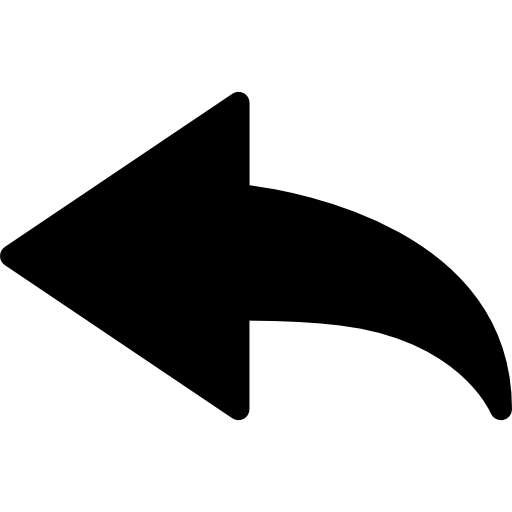
- Vision & Mission
- Organisational Structure
- Network Map
- CSIR Leader
- CSIR Directory
- Mandate & Activities of CPD
- Officials and Staff details
- Mandate of IMD
- Details of Staff of the Directorate
- Information
- NMITLI Advertisement 2022
- NMITLI Proforma
- CSIR-COVID-19 and MLP Projects
- Mission Mode Project
- CSIR-NMITLI Program
- FTT-FTC projects in FY 2023-24
- Fast Track Translation and Fast Track Commercialization Projects
- Innovation Protection Unit (IPU)
- Technology Management Directorate
- CSIR Unit for Research and Development of Information Products (URDIP)
- Vision & Mission ISTAD
- ISTAD Mandate
- ISTAD Activities
- Bilateral and Multilateral Cooperation
- Global S&T Partners
- Human Resource Development through training/fellowship opportunities for CSIR Scientists at centres of excellence abroad (RRF)
- Capacity Building through education and research training for the developing countries’ scholars/researchers(The World Academy of Sciences(TWAS) Fellowship)
- CSIR ISTAD Forms
- Information ISTAD
- International R and D Updates
- News/Call for proposals/Announcements
- Contact Us ISTAD
- CSIR Outreach
- Science Communication and Dissemination Directorate (SCDD)
- DG’s Executive Directorate
- CSIR Annual Accounts
- Annual Report
- CSIR Annual Grants/Budget
- Former Director Generals
- Rules & Regulations & Bye Laws
- CSIR theme directorates
- Research Publication
- R&D Projects of CSIR
- Technology Transfer
- Compendium of Technologies
- Outcome Review of CSIR Schemes
- Appreciation Letters
- Latest Achievements
- CSIR Success Stories
- CSIR Milestones
- MOUs Signed
- About NMITLI
- Approved Projects under Covid-19
- News Bulletin
- Press Release
- CSIR Samachar
- CSIR India YouTube
- Photo Gallery
- New India Samachar
- CSIR Events
- CSIR Science Stories
- CSIR SciArt
- About SEC-CSIR
- Declaration Form
- External Resources
- Conflict of Interest Statement Formats
- C-DIS Template
- CSIR Ethics Guidelines
- List of CSIR Ethics and Safety Officers
- Recruitments

Recruitment to the posts of Scientist
Website Content Owned and Managed by Council of Scientific & Industrial Research, Copyright© 2023 All Rights Reserved: Designed by CSIR and Hosted by National Informatics Centre
Last Updated : 30/Aug/2024
- Total Visitors: 24287994

How to Become a Biomedical Researcher: Salary, Exams & More
Discover more about what the practice of biomedical research entails, the variety of job opportunities available, and how you can kickstart your career to become a biomedical researcher today.
1. Role of a Biomedical Researcher
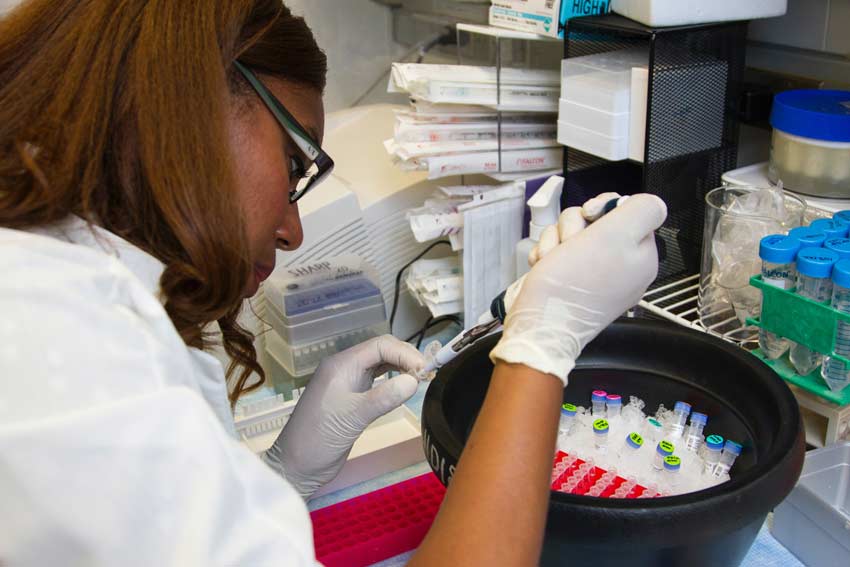
Biomedical researchers employ scientific research to help people live healthier lives. Likewise, they plan experiments to test and develop novel treatment approaches, evaluate medical data to look into infections and chronic diseases, and create social programs to improve population health outcomes.
The benefits of biomedical research have helped everyone in one way or another. Scientists try to better understand the origins and treatments of diseases through the development of new drugs, vaccines, and procedures to prevent or treat diseases, as well as the safety testing of items we use every day.
Contents: Jump to Section
1.1 difference between biomedical researcher and biomedical engineer.
While professionals in both fields require medical knowledge, there is a stark difference between the work they practise. In simple words, biomedical researchers focus on diagnosing, treating and preventing human diseases. To further explain, they are more likely to work with clinical drug trials, which test medications or drug combinations against specific diseases.
Biomedical engineers, on the other hand, develop devices to help those seeking different medical treatments. For instance, a biomedical engineer may design and test an artificial limb, then observe how it performs on actual patients and revise the design as needed.
2. How to Become a Biomedical Researcher in India
This article is a must-read for those curious to know how to become a biomedical researcher in India. To pursue a career as a biomedical researcher, you must take up the science stream (PCMB) in 11th and 12th grade and qualify for the appropriate competitive exam to get admission to a biotechnology or biomedical college. Furthermore, the field requires a significant amount of ideation and research, making it a compelling and well-respected career path.
2.1.1 Courses Taken at School
Physics, chemistry, biology, math.

If you are aspiring to become a biomedical researcher, you must take up the science stream in 11 th and 12 th grade. Physics, chemistry, biology (PCB) is ideal as this career path demands a lot of scientific knowledge. Additionally, taking up mathematics as one of your subjects (PCMB) is also essential to clear JEE entrance exams in India.
Apart from that, mathematics might also be useful in college as some subjects such as genetics, biostatistics, and epidemiology requires calculations.
2.1.2 Courses Taken at College: Biomedical Engineer Course Requirements
Cancer biology, Biostatistics, Human psychology, and more.

It’s always a good idea to know what classes you’ll be studying in college if you’re wondering how to become a biomedical researcher. Therefore, below are some of the subjects I studied and would recommend to students:
- Cancer biology
- Biostatistics
- Human physiology
- Pathophysiology
- Animal tissue culture
- Lab techniques
These topics are certainly beneficial and closely related to the field. Apart from that, depending on the institute where you will be studying, you may be able to take a few other courses.
2.2 Entrance Exams
JEE- Advanced (Joint Entrance Examination – Advanced) and private college entrance exams in India; GRE and TOEFL for international universities.
To study Biomedical Sciences in top Indian colleges like IIT’s that are solely on the basis of merit, you will have to take the Joint Entrance Exam (JEE) after 12 th grade. Also, a lot of other private Indian colleges conduct their own entrance exam to shortlist students. To keep the options open it is always better to give multiple exams and apply to colleges accordingly.
For most international programs you need to take GRE and TOEFL. However, the course tuition is comparatively quite high, although many universities offer financial aid even to international students. Therefore, your willingness to pay the tuition fee, your GRE and TOEFL scores in comparison to other applicants, your academic and professional profile, all play a part in deciding the ultimate college to enroll in.
2.3 Biomedical Researchers Qualifications/ Degree Required

A bachelor’s degree is the initial requirement, especially for pursuing a master’s in biomedical sciences. Specifically, a degree in pharmacology, molecular biology, genetics, biochemistry, or chemistry is recommended for those who want to focus on their desired field from the start. A majority of biomedical researchers have Ph.D. or master’s degrees, as well as extra specialized training.
2.4 License Required
If you’re considering how to become a biomedical researcher, you might be wondering if you need a license to do so. This occupation, however, does not require a professional license to practise. As a result, once a student has completed his degree, they can begin working as a fresher.
2.5 Internship/ Work Experience Required
Highly recommended.
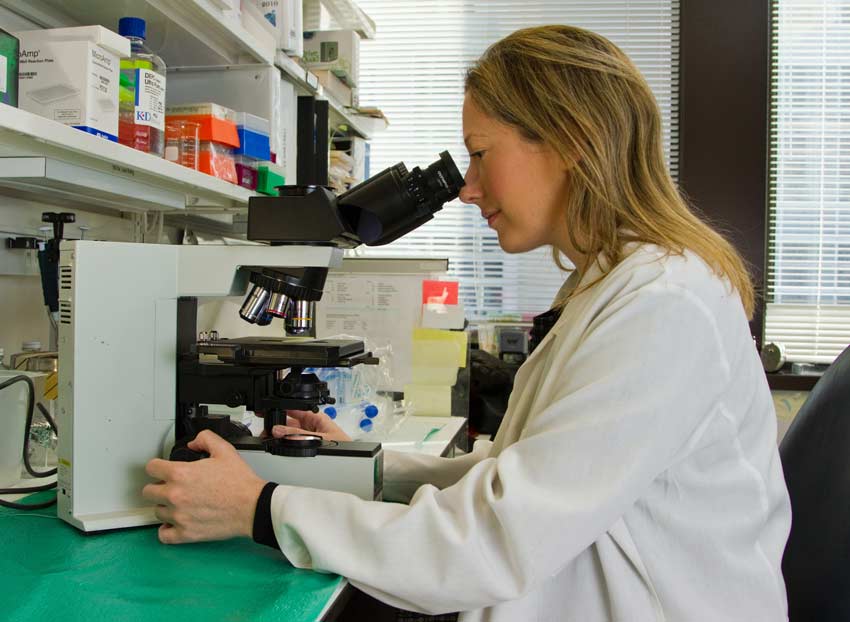
In most universities, it is mandatory to do a six months final dissertation project towards the end of the course in order to successfully graduate. Besides, it is preferable to have internship experience as it provides students with hands-on experience in the field. Also, it improves their chances of being hired by large organizations.
2.6 Cost of Tuition and Training: How Much Does It Cost to Become a Biomedical Researcher?
The tuition fee for an undergraduate degree in biotechnology or biomedical sciences is usually around ₹40,000 for the entire course of 3 years. Of course, depending on the college, it could be more or less.
However, for a postgraduate degree in biomedical sciences, the tuition and training cost in this field is quite high. In the United States, the typical tuition rate for a master’s in biomedical sciences in a reputable university might range from $40,000 to $60,000 per academic year.
Aspirants can also pursue their masters and Ph.D. together. Although, it is advised to complete the Master’s degree first as it can help the student get more research experience, industry exposure, and more time to explore their interests in this field.

2.7 Competition: How Hard is It to Become a Biomedical Researcher?
Very competitive.

This career is exciting with lots of possibilities for lab work, administration, research, education, and consulting. In India, the competition for entrance exams is mid-level. But, due to limited job opportunities, it is highly competitive in this field if you want to become a biomedical researcher.
Whereas in the US, the competition for college applications and for jobs is both of high level as thousands of people, from all around the world apply for the same position.
2.8 General Age to Start Professional Career for Biomedical Researchers
22-25, depending on your education.
Generally, students can start a professional career in this field after graduation. Thereby, having a minimum graduation qualification is necessary to become a biomedical researcher. For the most part, students also pursue their master’s degree as it gives them an edge over other applicants and provides several opportunities to start their career.
2.9 Governing Bodies
No. There is no governing body for biomedical in India.
3. Professional Opportunities/ Career Growth for Biomedical Researchers
3.1 specialisations/ sub-professions.
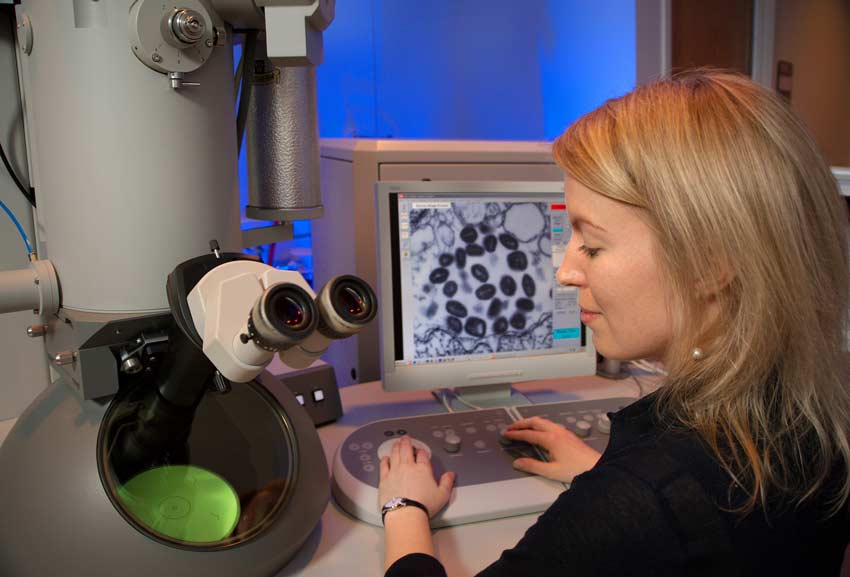
There are several subfields in biomedical sciences. Listed below are some specializations under it.
- Pharmacology
- Molecular biology
- Genome sciences
- Neuroscience
- Infectious diseases
Once again, I would like to stress the importance of internships and co-ops; gaining experience through them will help you understand and discover your research focus.
3.2 Companies & Institutions that Employ Biomedical Researchers
Professionals in biomedical science have the unique opportunity to work in both the private and public sectors, allowing them to tailor their career paths to their own interests. Generally, research scientists are hired by universities for academic research. They may also be hired by pharmaceutical, and biotech companies.
Besides, some of the top international companies that hire biomedical researchers are Merck, Pfizer, GSK, and Novartis.
3.3 Growth Prospects
Immense growth prospects.
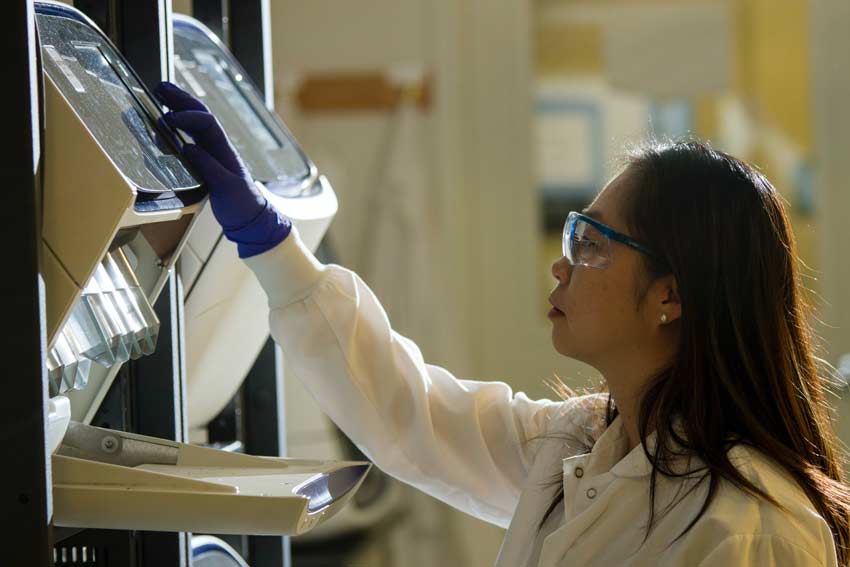
There are many pressing medical problems today that demand the knowledge of biomedical science specialists, from unforeseen conditions like the COVID-19 pandemic to the ongoing aging of the global population.
Therefore, there are tremendous growth prospects in this field. Interesting opportunities have arisen for people with the precise knowledge and skills set pertaining to technical expertise, consistency, networking, and leadership qualities.
Research scientists who portray these skills are promoted to managers, directors, or even vice presidents. Also, they are hired by universities for academic research which is primarily concerned with making new discoveries for the benefit of the scientific community and is funded by the university itself.
3.4 Entrepreneurship Opportunities

There are numerous opportunities for start-ups in this field. The two main subcategories of scope for entrepreneurs are pharmaceuticals and therapeutics.
In pharmaceuticals, clinical trials, pharmacological research, and safety profiles of drugs are all a part of various roles a start-up pharmaceutical company could indulge in.
Whereas in therapeutics, rather than drug development start-up companies can focus on how medications are utilised and administered in the context of disease therapy.
Though both subcategories require a large amount of capital for research and equipment, start-up companies usually raise funds with the help of sponsors and crowdfunding.
3.5 What is the Salary of Biomedical Researchers in India?

4. Further Resources
4.1 top universities in india.
- IITs (Indian Institute of Technology)
- Delhi Technological University
- Vellore Institute of Technology
Generally, graduating from any IIT campus or other esteemed colleges mentioned above will provide students with the opportunity to work in a reputable industry.
4.2 Top Universities in World
- MIT (Massachusetts Institute of Technology)
- Stanford University
- The Johns Hopkins University School of Medicine
- Harvard University
For the most part, graduating from one of these universities will provide students with great job opportunities.
4.3 Famous Personalities
Jennifer Doudna, Feng Zhang, Craig Venter.
Jennifer Anne Doudna is an American biochemist who has contributed significantly to biochemistry and genetics, including pioneering work in CRISPR gene editing. Also, for the creation of a technology for genome editing, she and Emmanuelle Charpentier shared the Nobel Prize in Chemistry in 2020.
Additionally, other amazing women who inspire me are Marie Skłodowska Curie, Jane Goodall, and Kalpana Chawla.
4.4 Useful Links and Resources
Biomed Careers by Glassdoor
Research Paper Writing Service
Curated & Edited by Akarshi Srivastava (CareerNuts Staff)
Biomedical Research Career Path: Is Biomedical Research Good Career?
Is biomedical research career path the right profession for you? Do you think you’ve got what it takes to work in this industry? From challenges to daily tasks, Boston-based biomedical researcher Aishwarya Srivastava discusses everything you need to know about the profession.

Aishwarya Srivastava is a biomedical research associate working in the T-cell process development department at TCR² Therapeutics in Cambridge, Massachusetts. She has a Master of Science in Biomedical Science (MS) degree from Northeastern University. She also has a Master’s in Technology degree in biotechnology (M.Tech) from Padmashree Dr. D.Y Patil Vidyapeeth. She works in the field of immuno-oncology and is passionate about supporting the development of novel therapeutics to help cancer patients through cell therapy. Originally from Mumbai, she currently resides in Boston, Massachusetts. In her free time, she enjoys biking, baking and exploring nature.
Leave a Comment
- connect with us
- 1800-572-9877
- [email protected]
- We’re on your favourite socials!

Frequently Search
Couldn’t find the answer? Post your query here
- Career in Scientist
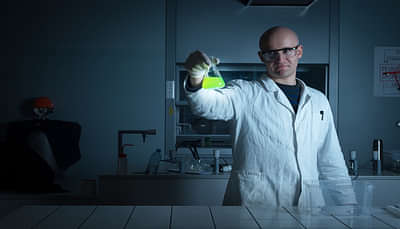
Updated By Sakunth Kumar on 28 Sep, 2021 11:20 A.M
Last Updated By Ankita Jha on 21 Aug, 2023
How to Become a Scientist
About scientist.
If you have a curious mind and enjoy preparing and carrying out experiments, you could be a good match for a career as a scientist. If Science is the subject that has fascinated you since childhood then you can definitely think about how to become a scientist. It is a job profile that includes a vast arena of Science as a subject in detail. If you have an interest in Biology then you can think about how to become a forensic scientist. Similarly, you can opt for different options of how to become a scientist in the field of Physics or Chemistry as per your interest and also get an answer to how to become a space scientist, or particularly any types of scientist you have interest in.
Let’s talk more about who actually a scientist is and what is the work profile and responsibilities of a scientist. A scientist is the one who has involvement in scientific activities focusing mainly on acquiring knowledge to predict and describe the world around us. Right from finding out the origin to existence and extinction, the work of a scientist includes all. The role of a scientist can be identified in all possible spheres of biological and non-biological, celestial and non-celestial bodies, communicational and non-communicational activities. Therefore, if you want to know how to become a scientist then you can explore all the fields present around you here.
Who is a Scientist?
Scientists are highly trained experts who engage in research and experimentation to advance understanding in a specific field. Aspiring students who wish to pursue a career as scientists and want to know how to become a scientist should be mentally prepared for the multitude of challenges they may encounter, as it is considered one of the most demanding and time-consuming career paths. It typically requires 7-10 years or even longer to establish oneself as a respected scientist in a particular area of expertise. The candidates who wish to become scientists must know how to become a scientist and what all courses are suitable to become a scientist. Aspiring candidates who choose career as scientists need to be familiar with how to become a scientist and the appropriate courses that lead to this profession.

How to Become a Scientist in India?
For those aspirants who choose career as scientist, it is advisable to begin their preparations right after completing school. They should select their field of interest in science and then focus on a specific niche within that field. The initial step in this journey is to decide between PCM or PCB immediately after their 10th board exams. Proficiency in mathematics is crucial for aspiring scientists, as research often involves dealing with statistics and data analysis. Therefore, a specialization in mathematics is highly recommended.
Candidates think how to become a forensic scientist, you typically need a bachelor's degree in forensic science, chemistry, biology, or a related field. Gain practical experience through internships or lab work. Pursue specialization through a master's degree for advanced roles. Obtain necessary certifications and licenses. Strong attention to detail, analytical skills, and scientific knowledge are crucial for success in this field.
Focus on your area of expertise
Know precisely which niche you wish to pursue. Choose your bachelor's degree with the various options available, such as Physics, Mathematics, Biology, Astronomy, Geology, Social Sciences, and more. You can also opt for specialized professional courses like BTech, BSc, BPharma, etc., related to your field of interest.
Pursue Higher Education
Merely obtaining a bachelor's degree is not sufficient to become a scientist. Although a bachelor's degree offers a solid foundation to expand your knowledge, pursuing a master's and a Ph.D. may be necessary for further career advancement in this field.
Exams Required to Become Scientist in India
BSc Admission Entrance Exams
To secure admission into BSc programs, various entrance tests are conducted at the national, state, and institutional levels across India. The table below provides the list of different entrance examinations at graduate level for which online application forms are available for taking admission in different graduate level courses through major BSc entrance examinations in 2023. Some of the popular exams are:
|
|
|---|---|
|
|
Master's Entrance Exams
Multiple entrance exams are available for admission into Master of Science (MSc) programs. There are certain colleges that take direct admission while most of the prestigious colleges conduct entrance tests to grant admission to different courses offered by them. The table below highlights some significant university-level entrance tests that are essential for securing admission to MSc programs.
|
|
|---|---|
TISS NET |
|
PhD Entrance Exams
The admission to PhD programmes has become very difficult in the current scenario because of excessive demand of teachers. Many entrance level examinations are conducted to grant admission at PhD level. The table provided below comprises some national-level entrance exams along with their application deadlines, conducting authorities, examination dates, and other relevant details
Skills Required to Become Scientist in India
The following are the essential skills that a scientist must possess.
- Thirst for Knowledge and Research
- Critical Thinking and Problem Solving Skills
- Research Skills
- Technical Skills
- Team- Player
- Adaptability
- Highly level of Dedication
- Time Management
- Public Speaking
- Interpersonal Skills
- Observation Skills
- Strong Communication Skills
How to Become a Scientist in Abroad?
Embarking on a career path to become a scientist abroad can be tedious and challenging. Students with aspirations to know how to become a scientists in abroad have to pursue their undergraduate, postgraduate, and doctoral degrees from foreign universities. The scientist qualification is very important to be part of the scientist fraternity anywhere across the globe. They must have a doctorate in a specialized area of science.
To pursue a degree abroad, students must engage in advance planning. They need to determine the appropriate timing and the field of specialization for their foreign degree. In order to gain admission to prestigious universities abroad and fulfill their dream of becoming a scientist, students must meet specific eligibility requirements, which are provided below.
- Students need to maintain a consistent academic record throughout their educational journey. Several universities abroad look for students with an aggregate of 70% or higher marks, or an equivalent CGPA, for admission to various courses.
- Additionally, clearing an English language proficiency test such as TOEFL or IELTS is typically required for studying in a foreign country.
- Students should explore sponsorship or scholarship programs they are eligible for. Moreover, to secure admission to a university, writing a well-crafted research proposal or essay is crucial.
Exams Required to Become Scientist in Abroad
To become a scientist abroad, there are typically no specific exams that universally apply to all countries or universities. However, the educational path usually involves completing a bachelor's degree in a relevant scientific field, followed by a master's and/or doctoral degree with a focus on research. Some universities may require standardized tests like GRE (Graduate Record Examination) for admission to graduate programs. One of the most common prerequisites is to qualify English language proficiency exams such as
- IELTS (International English Language Testing System)
- TOEFL (Test of English as a Foreign Language), and
- PTE (Pearson Test of English)
Skills Required to Become Scientist in Abroad
In this article so far, we got to know how to become a scientist and what is the role of a scientist? There are many important skills that scientists must possess in order to become a good and reputed scientist. Some of the common and important skills to become a scientist are mentioned here for your reference:
Self-Motivation | Critical Thinking | Team Work |
|---|---|---|
Adaptability | Problem Solving | Experimental Skills |
Management Skills | Business Acumen | Hard working |
How to Become a Scientist after 12th?
The most common question that arises for the students who have interest in science is how to become a scientist after 12th? Becoming a scientist requires a passion for scientific inquiry, a strong educational foundation, and a commitment to continuous learning and research. If you aspire to become a scientist after completing your 12th grade, here are the general steps you can follow:
- Choose the right stream in 12th grade
- Pursue a bachelor's degree in science
- Excel in your studies
- Engage in research and internships
- Pursue higher education- masters and PhD
- Attend scientific conferences and workshops
- Collaborate with researchers
- Apply for research positions
How to Become a Scientist after Graduation?
To become a scientist after graduation, one must pursue post graduate courses from a recognised and famous university. The candidates must score a minimum of 60% marks in graduation to get admission in good colleges. It should be noted that they must score 60% marks in science subjects as well as pass in each subject separately. To get admission in top colleges for postgraduate courses they might have to give entrance exams like CUET PG, JET, etc.
Exam required to become Scientist after Graduation
The famous exams required to become scientist after graduation are-
GATE | CAT | CUET PG |
|---|
Skills Required to Become Scientist after Graduation
To know how to become a scientist after graduation, several key skills are essential for success in the field. Some of the prominent skills are mentioned below:
Strong Analytical Skills | Research Skills | Ethical Awareness |
|---|---|---|
Communication Skills | Curiosity and Creativity | Adaptability |
Eligibility to become Scientist
The candidates who want to choose career as scientist must know how to become scientist eligibility criteria. They must meet the minimum educational scientist qualification. In meeting forensic scientist qualifications or any other specific field scientist one must meet these requirements first.
Educational Qualification of Scientist
- Must have completed their 10+2 education from a state or nationally recognized board with PCM or PCMB as their subject combination, achieving at least 70% aggregate marks or a comparable CGPA.
- Aspiring scientists need to obtain a bachelor's degree from a recognized institution, with a major in science and a relevant subject combination depending on their chosen field, such as chemistry, physics, biological science, or mathematics.
- Must achieve a minimum aggregate grade point average of 60% and pass each course independently.
- After completing the undergraduate degrees, students should pursue a postgraduate degree in a related field from a recognized university or college, securing at least 60% aggregate marks and passing each course separately.
- To further progress in their career as scientists, students should obtain a doctorate or PhD in their respective area of specialization, along with substantial research and laboratory experience.
Types of Scientists
There is a wide variety of scientists to choose from, but some of the most prevalent categories of scientists include:
Type of Scientist | Role of Scientist |
Space Scientist | An individual who specializes in astronomy is dedicated to the study of celestial objects both within and beyond Earth. Astronomy encompasses various subfields, such as planetary science, solar astronomy, and more. |
Bioinformatics Scientist | A person who focuses on the study of life and its biological aspects is known as a biologist. Within the field of biological science, there are diverse subfields, including genetics, ecology, toxicology, biochemistry, and others. |
Atmospheric Scientist | An atmospheric scientist is someone who explores the various facets and analyses data to get a clear vision of weather, climate, and atmospheric conditions. |
Forensic Scientist | A forensic scientist is an individual who examines different chemical compounds, their formation, and functions. forensic scientist specialize in organic and inorganic aspects of chemistry, physical evidence identification,Physics, detection, etc |
Salary of Scientist
Salaries for scientists can vary significantly depending on factors such as education level, experience, specialization, location, and the type of organization they work for. The figures provided below are approximate and should be used as a general guideline.
The average salary of a scientist in India can range from ₹300,000 to ₹1,000,000 or more per year. Entry-level scientists may earn around ₹300,000 to ₹500,000 annually, while experienced and senior-level scientists in reputed organizations or research institutions may earn ₹800,000 to ₹1,000,000 or higher.
Salary of Forensic Scientist
Salary of Forensic Scientist can vary based on their specialization and the employing organization. On average, Salary of a Forensic Scientist can earn around ₹300,000 to ₹700,000 per year. Experienced and senior forensic scientists may earn up to ₹1,000,000 or more annually.
Salary of Research Scientist
Salary of Research Scientists can differ significantly based on the area of research and the organization they are associated with. On average, the salary of Research Scientists can earn around ₹400,000 to ₹800,000 per year.
Courses to Become Scientist
Becoming a scientist, whether in India or abroad, can be achieved through various qualification pathways. Aspiring students are required to successfully complete multiple courses on their journey to becoming a scientist. The details of important courses are mentioned here to become a scientist.
Bachelor’s Course
After completing Class XII, many science students opt for BSc as their preferred course of study. BSc offers comprehensive theoretical and practical knowledge in diverse scientific fields such as physical science, applied science, chemistry, mathematics, economics, biology, agriculture, horticulture, animation, and more.
Those with a keen interest in exploring interdisciplinary subjects involving science and mathematics can choose to pursue this course.
- The course is well-suited for students aspiring to enter research industries such as pharmaceuticals, healthcare, manufacturing, IT, and more.
- There are two types of BSc degrees: BSc Honours and BSc General, both having a duration of three years and carrying the same qualifications.
- Through this program, students gain fundamental skills and knowledge necessary for careers as researchers, teachers, lecturers, consultants, counselors, and more. The abundance of opportunities in these fields makes BSc a popular choice among students.
- Additionally, various scholarship opportunities, including INSPIRE Scholarships, HDFC Educational Crisis Scholarship Support (ECSS), Promotion of Science Education (POSE) Scholarship, Kishore Vaigyanik Protsahan Yojana (KVPY), etc., are available to support students financially.
- After completing BSc, students can opt for higher studies, such as pursuing a Master of Science (MSc) degree.
Master’s Course
MSc, which stands for Master of Science, is a postgraduate course spanning two years. It provides comprehensive theoretical and practical expertise in various scientific disciplines like Chemistry, Physics, Biology, Mathematics, Botany, Zoology, Pharmacy, and Nursing.
Several prestigious universities and colleges in India offer the Master of Science degree through both regular and distance learning modes. For those aspiring to pursue a Ph.D., obtaining an MSc degree is a prerequisite.
Candidates planning to enroll in an MSc program should possess essential skills such as problem-solving, analytical abilities, and research aptitude. The MSc syllabus varies based on the chosen specialization.
PhD Courses
- The PhD in Science is an investigative program where students engage in experiments and utilize observation, questioning, modeling, and investigation to explore novel concepts that they incorporate into their thesis.
- A primary objective of the PhD Science course is to equip students with the skills to conduct research in Science education across various scientific disciplines.
- The subjects covered in this course encompass physics, chemistry, biology, computer science, life sciences, and more, all taught with a strong emphasis on research. Topics may range from geophysics to material science and beyond.
- At the commencement of the course, students undergo coursework that comprehensively covers the essential theories and principles related to their chosen subject.
- After completing the coursework, students embark on independent research and compile their findings into a thesis, which is then submitted upon completion of the course.
List of Colleges which provides Courses to Become Scientist
There are many colleges that provide courses to become scientists. Some of the prominent colleges along with their average fee are mentioned below for quick reference:
|
|
| Rs 61380 |
| Rs 59400 |
| Rs 73545 |
| Rs 129000 |
| Rs 243000 |
| Rs 44685 |
Sri Venkateswara | Rs 43665 |
| Rs 68685 |
List of Universities which provides Courses to Become Scientist
The basic courses are required to proceed in the journey to become a scientist. Almost all universities provide courses to become a scientist. Some of the prominent universities are mentioned below:
|
|
| Rs 131111 |
| Rs 20000 |
| Rs 46835 |
| Rs 6245 |
| Rs 109800 |
| Rs 21000 |
| Rs 9255 |
| Rs 76000 |
| Rs 102500 |
| Rs 100000 |
Types of Job Roles Scientist
As discussed above, there are a number of distinctive fields that can help in choosing career as scientist. The different types of Scientists are based on the classification and specification studied and expertized in. Read in detail about these scientist job profiles and know about the type of work they perform and then choose the one that suits your interest.
Astronomer: An Astronomer is the one who studies about stars, galaxies and planets. Studying about the universe and the movement of the objects within it is the focus area of the Astronomers. These are specialists who read about the planetary movements and tracks celestial and non-celestial objects of the outer space.
Agronomist: Agronomy is the field of Science that deals with the study of agriculture and its technological growth. The person involved in carrying out the process of research and development giving rise to agricultural advancement is an Agronomist. Commonly referred as Plant Scientists, they are ones who read about the type and genetic existence of a plant, agricultural land and soil in order to produce the best out it.
Cytologist or Cytotechnologist: These scientists are the ones who work to describe the cell and the cellular movements and variations. Cytotechnology is a sub-stream of Biology focusing mainly on the cells. Study of DNA (deoxyribonucleic acid), cell structure, cell multiplication, cell functioning and life history and pathology of cells, are addressed by a Cytologist.
Ethologist: An Ethologist specializes in the study of animal behavior. Their main focus is to understand the behavior of animals under natural conditions and under man-made conditions. They also check the adaptive traits of the animals in an unnatural or evolutionary condition.
Botanist: An expert of the Plant Science or Botany is termed as a Botanist. They study about the flowering and non-flowering plants present in the environment. The structure, growth, evolution and uses of the plants are studied in detail by the Botanists. There are certain classified areas of Botany that structures and divides the task of a Botanist. These include – Plant Ecology, Plant Taxonomy and Chemical Biology. A Botanist can choose any one area of expertise among these and work as per the requirement of the subject-matter.
Epidemiologist: Spread of diseases in the human body is studied by the Epidemiologist. Epidemiology is that branch of Science that aims to extract the source origin of a disease and works on it to find a solution or remedies to cure the spreading or underdeveloped disease. They also study the behavior and habits of the individual before and after inducing a suitable drug for the spreading disease.
Microbiologists: Study of Fungi, Algae and Bacteria is done by a Microbiologist. Dealing with the evolution, structure and growth of the microscopic animals and plants is the role of the Microbiologists. Their role also comprises of the study of disease-causing organisms and organisms responsible for environmental damages. Study of the organisms that are of agricultural and industrial interest also falls under the study circle of a Microbiologist.
Geologist: They are the ones who study the three states of matters ie. Solid, Liquid and Gaseous substance, constituting the Earth and other terrestrial planets. A Geologist studies in detail about the Earth Processes, Earth History and Earth Materials. From tectonic movements leading to earthquake, volcanic eruption, floods and landslides to ecological sustainability of plants and soil materials are catered by these experts.
Meteorologist: These scientists are the ones who study about climate and weather. Checking on the climatic condition and the changes that have been or might take place are recorded by the Meteorologists. They may indulge in forecasting weather or may stick to the research area of the weather. These scientists predict the climatic disaster that may take place and help people to evacuate from the surrounding area.
Marine Biologist: Marine Biologist is the one who studies the marine organisms constituting of the animals and plants. The study reveals the interaction and behavior of these organisms with the environment. A close research on aquatic plants and animals are done by the Marine Biologists after mastering on biological oceanography and geological oceanography. These two streams enhance the research work and help in depicting a clear picture of the research conducted by the Marine Biologist.
Paleontologist: These scientists are the investigators of the fossils. They study the history of life on Earth based on the collected fossils. These remains are studied for the purpose of calculation of the existence of the fossils found. Paleontologists also dig out the reason of the extinction of the remains and preserve them to understand the primitive environment in a more clearer way. These scientists work in close contact with the archaeologists to discover more related findings.
Seismologist: Seismologist studies the details about an earthquake. The reason behind an earthquake and related after-effects above and beneath the Earth are studied by these scientists. Their researches reveal the expected disaster that can be caused due to the tectonic movements and also find out the areas that are more prone to such activities.
Employment Opportunities for Scientists
With a keen interest in Science and Research, candidates can opt for a career like Scientist. For the ones who aspire to know how to become a Scientist must know the different employment opportunities available for them as a Scientist. To help candidates we have prepared a list of industries were the employment opportunities for scientists are easily available. The list includes the following:
- Indian Ministries – Mining, Ore, Archeology, Geology, etc.
- Food and Beverage Industry
- Research Centers/Institutions
- Aeronautical Associations
- Mining Industry
- Medical Centers/Institutions
- Manufacturing and Warehouse Units
- Animal Care Centers
- Wildlife Sanctuaries
- Healthcare Centers/Institutions
Top Recruiting Companies for Scientists
In order to choose career as Scientist, it is important that the candidates acquire relevant degrees and certificates along with approved journals. Considering these qualifying documents, companies will hire these budding, talented and enthusiastic scientists with a good pay scale and desirable posts. There are a number of top recruiting companies for scientists that the aspirants can opt for. Let’s take a look at these companies or top organisations hiring scientists.
- Indian Airforce
- Ministry of Mines
- National Aeronautics and Space Administration (NASA)
- Indian Space Research Organization (ISRO)
- Archaeological Survey of India (ASI)
- Indian Institute of Science Education and Research (IISER)
- International Flavors & Fragrances India Ltd
- National Centre For Cell Science (NCCS)
- Institute for Stem Cell Biology and Regenerative Medicine (InStem)
- Aeronautical Development Agency (ADA)
- Aero Control
- ASRC Aerospace Corporation
- Council of Scientific & Industrial Research (CSIR)
- Defence Research and Development Organization (DRDO)
- Tata Institute of Fundamental Research (TIFR)
- Bhabha Atomic Research Centre (BARC)
- Indian Council of Agricultural Research (ICAR)
- Indian Institute of Tropical Meteorology (IITM)
- Indian Association for Cultivation of Science (IACS)
- Aryabhatta Research Institute of Observational Sciences (ARIES)
Employment Sector/Industry for Scientist
What does a scientist do.
Scientists conduct laboratory-based experiments and trials. Scientists can find jobs in a variety of fields, including medicine, physics, biology, chemistry, computer science, and environmental science. Some of the primary responsibilities include
- Designing and carrying out experiments
- Writing research reports and papers
- Taking samples and performing other types of field research
- Observing experiments, as well as recording and analyzing data
- Training and supervising junior employees
- Keeping up with the latest advances in scientific research
Roles and Responsibilities of a Scientist
- The majority of the activity is carried out in the laboratory, with some responsibilities requiring fieldwork.
- It may also be necessary to travel to and from different places to do the research, particularly for some of the projects that need collaboration.
- Many researchers work on fixed-term contracts with limited funding for specific projects.
- The majority of contracts are for several years.
- Permanent positions are in high demand and are more common in industry than in academia.
- A lot of opportunities are there in most of organisations to become a scientist.
- Working with toxic and dangerous substances may be required for experimental work. Experiments involving animals or animal-derived products may also be included in the scientific research
- Travelling internationally to attend conferences and seminars is sometimes necessary. Environmental science and ecology, for example, may require international fieldwork.
- Long hours of work and less time for the other activities
- Decent Salary with a number of benefits
- Professional growth and Personal Growth
- Name and Fame
- Global Recognition
Planning to choose Scientist as your career?
Pay scale/salary of scientist.
Different types of Scientist get paid on a different pay-scale. The salary also depends on the kind of industry they are associated with. You can have a look of the approximated salary scale of the different types of scientists given below.
|
|
|
|
Astronomer | 6,00,000 – 8,00,000 | 8,00,000 – 10,00,000 | 10,00,000 – 15,00,000 |
Agronomist | 1,00,773 | 5,81,660 | 7,97,430 |
Botanist | 2,47,301 | 5,89,581 | 11,63,496 |
Epidemiologist | 1,52,051 | 6,16,736 | 12,22,370 |
Microbiologists | 1,32,819 | 2,93,865 | 9,38,883 |
Geologist | 2,31,402 | 5,09,972 | 13,68,460 |
Meteorologist | 1,20,000 | 3,00,00 | 6,00,00 |
Marine Biologist | 99,550 | 4,50,000 | 10,45,437 |
Paleontologist | 2,00,000 | 5,00,000 | 10,00,000 |
Seismologist | 7,39,000 | 7,80,000 | 8,10,000 |
Note: The figures mentioned above are an approximate estimate and may vary from one organisation to the other organisation.
Professional Development
The scientific and research skills one gains while studying PhD are perceived as satisfactory basic training for moving to the next positions. To grow in any career, especially in this career one must keep himself or herself up to date with all the new techniques, skills, and innovations. Professional growth does not knock on the door of an individual but hard work, determination, and commitment do. It is very important to attend as well as participate in national level conferences to know and proclaim the recent advanced technological development in the field of Science. By putting up years of experience, one will achieve a senior scientist position.
Books & Study Material to Become Scientist
Knowing how to become a scientist can be difficult if your educational qualification and preparation lack behind. All you need to do is to acquire professional degrees from a reputed institution. To do so you will need to appear for related entrance exams. Hence, there are no specific books that can prepare you for this career. Being agile and ready to grab every learning opportunity that comes your way combined with hard work is the trick to become a successful Scientist. It is also important for you to experience the on-the-job learning exposure to become more familiar with the experiments and research activities. The more you learn & implement your gained experience, the chances of you becoming an expert in this field will also increase, which will subsequently reflect in your pay package.
To help you through with the learning experience of becoming a successful Scientist, we are providing you with the list of few of the top searched and read books of renowned authors that will not only help you in understanding your subject-matter but will also help you in developing your skills and knowledge.
- Encyclopedia of Space Science and Technology by Maureen Salkin, Hans Mark Publication.
- Cell Biology, Genetics, Molecular Biology, Evolution and Ecology by P S Verma.
- The Mammoth Book of Unexplained Phenomena: From bizarre biology to inexplicable astronomy by Roy Bainton.
- When Life Never Died by Michael J. Benton
- The Story of Earth by Robert M. Hazen
- Microbiology: Principles and Explorations by Jacquelyn G Black
- Modern Epidemiology by Kenneth Rothman
- Measuring Behaviour by Patrick Bateson and Paul Martin
Pros of becoming a Scientist
- By becoming a Scientist, you are about to create a history out of your research materials.
- You are indulged in a lot of exciting experiments and research works that will retain your interest throughout the work.
- A good package is intact with your reputed post.
- At a number times, you will be involved in saving the lives of many around you which will give a sense of pride and esteem to work harder.
- You will learn a new thing with every research or experiment that you start with. This will help you in answering your curiosities.
- You will have a great role in developing technology and innovations.
Cons of becoming a Scientist
- A lot of responsibilities might lead you to make small mistakes which could risk the lives of many around you.
- Extra attention and precision is required with no room of mistakes.
- Long working hours may lead to less amount of family interactions.
- Scientists often stick to one project for their entire life with no scope of development and professional growth.
- At times your experiments can be too costly to handle, as science is expensive and costly business to deal with.
Top Colleges to pursue career as Scientist
Paths for being scientist, do you think this is the right career choice for you.
Take our test and find out if it suits your strengths.
FAQs about Scientist
To become a scientist it takes around 7-10 years. Career as a scientist usually requires a PhD. and a lot of lab experience.
The career prospects for scientists are diverse and promising. Depending on their specialization, scientists can work on cutting-edge research, develop new technologies, contribute to medical advancements, address environmental challenges, work in data analysis and artificial intelligence, and more. Advancement opportunities include becoming a research team leader, principal investigator, or even a department head.
Important skills for scientists include critical thinking, problem-solving, analytical abilities, strong research skills, data analysis, communication skills (both written and oral), teamwork, adaptability, and a passion for learning.
There are numerous fields of science to specialize in, including Physics, Chemistry, Biology, Mathematics, Computer Science, Environmental Science, Astronomy, Psychology, Geology, Neuroscience, Genetics, and many more. Each field offers various research and career opportunities.
The qualifications that are required to become a scientist need a bachelor's degree in a relevant scientific field, followed by a master's or doctoral degree in a specialized area of science. Additional qualifications, such as research experience, publications, and networking within the scientific community, can enhance your prospects as a scientist.
The 11th President of India Dr APJ Abdul Kalam was an Indian Aerospace Scientist as well.
Yes, Galileo Galilei is considered as the “Father of Science”.
C V Raman was the first Indian scientist to have been awarded the prestigious Nobel prize. He was awarded the Nobel prize in 1930.
You can become a scientist without a valid degree but your work and theories might not be well-received by the academic community.
A scientist can earn between INR 1 LPA and INR 15 LPA depending on the job profile that he/she has been offered.
A scientist can find job opportunities in various organisations like ISRO, Aeronautical Development Agency (ADA), InStem, Archaeological Survey of India (ASI) etc.
Sectors like healthcare, wildlife, mining, aeronautics, food & beverage etc employ scientists.
Yes, astronomers fall under the broad category of scientists.
Candidates who have a PhD degree in any science subject is qualified to become a scientist.
A scientist is an individual who who describes and predicts the world surrounding us by gaining knowledge through scientific activities.
Explore Similar Careers
- Microbiologist
- Meteorologist
- Fishery Officer
Explore Popular Career Options
- IAS Officer
- Documentary Filmmaker
- Paediatrician
- Flight Engineer
- Electronics and Computer Engineer
- Data Entry Operator
- Foreign Exchange Dealer
- Army Officer
- Indian Forest Service (IFS) Officer
- Company Secretary (CS)
- Chartered Financial Analyst (CFA)
- Sports Person / Sports Manager
Science Colleges in Cities
- Science Colleges in Hyderabad
- Science Colleges in Bangalore
- Science Colleges in Mumbai
- Science Colleges in Chennai
- Science Colleges in Kolkata
Popular Specializations
- Physics Colleges in India
- Biology Colleges in India
- Geology Colleges in India
- Bioinformatics Colleges in India
- Food Technology / Processing Colleges in India
Popular Degrees
- B.Sc Colleges in India
- MSc Colleges in India
- M.Phil Colleges in India
- BA Colleges in India
- MS Colleges in India
Confused on what to choose as your career?
Details Saved
Step by Step guide to become a Scientist at NASA
- Published on February 3, 2022
- No Comments
NASA scientists get opportunities to conduct research and unique experiments on anything and everything related to space, and that too at the International Space Station.
That’s pretty cool, right? Who wouldn’t want to be a part of such a project where you actually get to unravel the mysteries of our universe and maybe even work from space, conducting experiments floating around in zero gravity!
Table of Contents
Who is a Scientist?
Before knowing what steps you need to take to become a scientist, it’s important for you to understand who is a scientist and what they do.
In simple terms, a scientist is a skilled professional who conducts research and experiments to either invent or discover something new or update existing research findings using advanced scientific knowledge and skills.
The best part about becoming a scientist is that you can decide your own field of research. From soil science to space science – there are multiple options to choose from. So choose the field that interests you the most!
But before choosing a field to become a scientist, you should ask yourself this indispensable question.
Clever Harvey Insights : Your main goal of becoming a scientist will act as your driving force. So even if you feel stuck at any point along the way, you can always remind yourself why you chose to become a scientist to get a boost of confidence!
How to become a NASA Scientist from India?
“Can I become a scientist at NASA if I am from India?”
Yes, you can.
Although NASA only recruits scientists and other professionals who are citizens of the United States of America, it does not mean that all doors are closed for Indian students to become NASA scientists.
There is a way in which you can become a NASA scientist from India .
To become an Indian scientist at NASA, you will have to become a permanent resident of the U.S and for that, there are certain requirements and procedures that you will have to follow to get your U.S citizenship.
You can opt for the process of Naturalization to seek permanent residence in any of the states of the U.S. For this, you either have to:
- Be a permanent resident in the U.S for a minimum of 5 years , or
- Be a permanent resident in the U.S for a minimum of 3 years if you are married to a U.S citizen .
If you are at least 18 years old and meet the above requirements, then you can fill out Form N-400 and complete all further formalities as per the U.S government policies. If you want more information on becoming a U.S citizen by naturalization to become a NASA scientist, this USCIS brochure will provide you with all the information you need.
Qualifications required to become a Scientist at NASA
Be it NASA or ISRO, to become a scientist you need to have certain degrees in the field of science, technology, engineering or mathematics . These fields are commonly referred to as STEM.
“So, what should I study after the 12th standard to learn space science?”
Whether you are interested in space science, space biology or conducting research on subatomic particles, you will have to follow these 3 steps to become a scientist at NASA after class 12.
Step 1 – Graduation in a STEM field
Be it engineering, biology or technology, you have to choose a course for graduation in one of the STEM fields from a recognized university in India or abroad. ‘STEM’ stands for science, technology, engineering and mathematics .
Step 2 – Pursue Master’s in the STEM field
While pursuing your graduation, you will gradually understand the basics of almost all fields of science. This will help you evaluate your abilities and recognize your inclination towards any one particular field. Go ahead and pursue your post-graduate studies in the field of your choice and give it your best.
Remember that your passion for science should match the subject you choose for specialization to make the most out of your experience.
Step 3 – Enrol in a Doctoral program or Get Relevant Work experience
If you want to conduct in-depth research in your field of study then it will probably be best for you to pursue your Ph.D. in that area to gain maximum experience and expertise to become a scientist at NASA.
Another option would be to gain relevant practical experience in your field of study in a research facility or institute to not only advance your knowledge but also gain work experience in an organized scientific environment. This learning experience can also add immense value to your journey of becoming a scientist at NASA.
Harvey insight : Apart from having relevant academic qualifications to become a scientist at NASA, you should also work on your personal project to build your portfolio as a teenager .
You can conduct your own research as a budding space scientist and present your work on an international platform.
Opportunities for Indian Students to be a NASA scientist
NASA offers a wide range of summer camps and internship programs to students as young as 10 years old to get an early idea of working on space-related missions. But these programs are limited to only U.S citizens .
“So, are there no opportunities for Indian students to explore their passion and skills to become a scientist at NASA?”
Yes, there are!
As an Indian teenager, you can participate in two of the most exciting international space contests to try your hand at building projects for space as a budding scientist.
International Competitions for Indian Students in Space Science
| Students from 5th – 12th grade | INR 500 | ||
| Students from 7th – 12th grade | $5000 cash prize +Get a chance to give a talk at the ISDC* | $15 |
*ISDC stands for International Space Development Conference
Don’t miss out on this chance to show the world that you have what it takes to become a NASA scientist. Go enroll now and take the first step towards living your dream!
Top Courses and Colleges to become a NASA Scientist
If you are looking for some good colleges to help you start your educational journey of becoming a scientist at NASA, this table is all you need. It contains a list of the best colleges worldwide for 3 of the best scientific research fields at NASA.
List of Colleges to Become a Scientist at NASA
| Astronomy & Physics | Cornell University (USA)University of Edinburgh (UK) |
| Geology | California Institute of Technology or CalTech (USA)University of Colorado (USA) |
| Space or Astro Biology | Indian Astrobiology Research Centre (India)California Institute of Technology or CalTech (USA) |
There is no one university or college from where NASA recruits its batch of scientists. In fact, you do not necessarily have to study from Ivy League schools to become a scientist at NASA.
NASA looks for scientists who are not afraid to follow their passion in the field of science and apply their knowledge and skills to contribute to the greater good of humanity. Start the journey of self-exploration with Clever Harvey’s JuniorMBA program in Technology to develop and apply your skills and learning to a real-world project. Gain industry insight directly from expert professionals in the field of technology and take your first step in the real world of applied science.
So, whatever course or college you choose, make sure to pour your heart and soul into your work and never stop learning!
Type of Scientist role at NASA
“NASA also employs scientists who play a critical role in science management. Program, project and discipline scientists work together to carry out science investigations, monitor program execution and ensure the scientific success of the mission.” – NASA
An organization that big is sure to have a variety of roles to offer its scientists. NASA offers as many as 15 distinct scientist roles to new-age scientists. These are the top 10 roles you can choose from when you become a scientist at NASA.
- Astrobiologist
- Earth scientist
- Heliophysics scientist
- Scientist in the Planetary Science division
- Astrophysicist
- Space scientist
- Space biologist
- Climate scientist
Which scientist do you plan to become at NASA?
Life of a Scientist at NASA
As a scientist at NASA, the only thing that remains constant is their philosophy of living “everyday extraordinary” . This means that no two days remain consistent. Each day at NASA as a scientist brings a new discovery and challenge which makes a scientist’s career all the more exciting!
Why become a Scientist?
If you are thinking about becoming a scientist then you must already have a keen interest in the field of science. However, simply being interested in the field is not going to make you a scientist. You must have strong dedication and a rough goal in mind (at least at this stage) as to what you would achieve or discover when you do become a scientist at NASA.
So, why you want to be a scientist is a question only you can answer. Before you start looking for courses and programs to help you become a scientist, you must get clarity on what’s driving you to become a scientist at NASA in the first place. Once you have a clear-cut answer, the following steps of becoming a scientist will become much more achievable.
“Our scientists are always up for a challenge and our innovative culture ensures that no two days are the same.“ – NASA
Hope you found everything you needed to know about being a scientist at NASA in our article. If you have further questions, you can visit our FAQ section below.
All the best!
FAQs to Become a Scientist at NASA
How long does it take to become a scientist at nasa.
There is no definite number of years that will make you a scientist at NASA. However, to complete your education as a scientist, it can take anywhere from 6 to 8 years to start working as a scientist at NASA.
What is the salary of a NASA scientist?
The annual average salary of a scientist at NASA sums up to $65,000. However, depending on your experience and job role, it can go as high as $120,000 annually.
Which degree is best for NASA?
No single degree or course is “best” for NASA. You must have a relevant degree and work experience in the field of science, technology, engineering or mathematics to join NASA as a scientist.
How to become a space scientist?
A Btech course in aerospace engineering, aeronautics or astronomy can be chosen after the 12th standard to become a space scientist. Later on, you must pursue at least a master’s degree in the same discipline and a post-doctoral program if possible.
Can an Indian join NASA?
NASA recruits only U.S citizens. So if you want to join NASA as an Indian, you should first get U.S citizenship through the naturalization process.
What is the highest position offered to a scientist at NASA?
Chief Scientist’ is the highest position at NASA for a scientist.
What is the full form of NASA?
NASA stands for National Aeronautics and Space Administration.
- Career Clarity (333)
- Career Options (317)
- Career Tips (28)
- Colleges & Universities (56)
- Early Entrepreneurship (9)
- Harvey Talks (1)
- Parents Corner (15)
- Skill Development (10)
- Student Blogs (1)
- Study Abroad (79)
Recent Blogs
How to become a content writer – a complete guide.
Embarking on a journey as a content writer requires passion, persistence, and continuous learning. With the increasing digitalization of businesses, the demand for skilled content writers is on the rise. Dive in, keep writing, and you’ll carve your niche in no time!
How to become a Marine Biologist in 2023- Dream Job Guide
Delve deep into the mysteries of the oceans and uncover the secrets of its inhabitants. If the world beneath the waves intrigues you, a career as a marine biologist awaits. Discover the path to explore and study marine organisms and their fascinating world.
How to become an Event Planner 2023- Complete Guide
Dive into the world of event planning with our comprehensive guide. From understanding the role to building skills and networking, discover how to start your journey in creating memorable events.
Leave a Reply Cancel reply
Your email address will not be published. Required fields are marked *
Save my name, email, and website in this browser for the next time I comment.
Extraordinary Achievements from Ordinary Students
Speak to our counsellors & get a free profile roadmap, clever harvey.
Clever Harvey’s JuniorMBA programs are designed for teenagers to explore different career options, and build creativity, confidence and business acumen.
- Phone: +918657763002
- Head Office: Mumbai, India
- For sales: [email protected]
- For support: [email protected]
- Click Here to Download Our App
- Study Abroad
- University Affiliations
- CH Tribe Events
- Student Outcomes
- Web Stories
- Privacy Policy
- Terms & Conditions
© Callido Learning Private Limited All rights reserved 2021
WhatsApp us

- Study Abroad Get upto 50% discount on Visa Fees
- Top Universities & Colleges
- Abroad Exams
- Top Courses
- Read College Reviews
- Admission Alerts 2024
- Education Loan
- Institute (Counselling, Coaching and More)
- Ask a Question
- College Predictor
- Test Series
- Practice Questions
- Course Finder
- Scholarship
- All Courses
- B.Sc (Nursing)
How To Become a Scientist After 12th: Careers, Courses, Eligibility, Entrance Exams, Top Colleges, Skills, Benefits, Salary

Bhaskar Nandi
Science and technology are one of the growing fields not just in the country, but worldwide. For the overall development in almost every industry, Science and technology play a vital role. This is the reason why a lot of students aspire to become a scientist. They are professionals responsible for innovation and creativity in different industries.
To become a scientist , students need to have Physics, Chemistry, Mathematics, and Biology as their core subjects. After this, candidates are required to pursue B.Tech. followed by an M.Tech. and then a Ph.D. degree in relevant subjects to become a Scientist. The average salary of a Scientist usually ranges from INR 12 LPA - 17 LPA. However, after gaining substantial years of experience candidates can expect a salary of INR 47 LPA - 60 LPA and in certain cases can go up to as much as INR 1 Crore and above.
Read: Job of a Scientist
Table of Content
- How to Become a Scientist after 12 th : Quick Facts
Eligibility to Become a Scientist after 12 th
- Steps to Become a Scientist after 12 th
Courses to Become a Scientist after 12 th
4.1 Entrance Exams
- Top Colleges to Become a Scientist after 12 th
- Skills Required to Become a Scientist after 12 th
- Benefits of Becoming a Scientist after 12 th
- Salary of a Scientist after 12 th
How to Become a Scientist after 12 th : FAQs
How to become a scientist after 12th: quick facts.
| Eligibility Criteria | Ph.D. in any Science stream |
| Starting Salary (INR) | 6.50 LPA |
| Average Salary (INR) | 12 LPA |
| Highest Salary (INR) | 50 LPA |
A scientist is a professional needed to bring about innovation in every field and industry. A candidate needs to be passionate about the subject from the very start.
However, there are some basic requirements in terms of academics that determine the eligibility of a candidate wanting to pursue a career as a scientist.
To pursue your career as a scientist, a student needs to keep in mind the following eligibility criteria:
- First, the candidate needs to complete his/her 10th and 12th in Physics, Chemistry, Maths, and/or Biology from any recognized central or state board in India. Furthermore, the candidate needs the required aggregate marks.
- Secondly, the candidate then needs to complete their undergraduate degree with 60% aggregate marks from any recognized university or college with either Physics, Chemistry, Mathematics, or Biology as the main subjects.
- After this, the candidate must pursue a postgraduate degree from any recognised university/college in the relevant subject with a minimum of 60% of the score.
- At last, the candidate needs to have a PhD in the subject of their interest.
Steps To Become A Scientist after 12 th
To pursue your career as a scientist, you need to clear your 10th and 12th with Physics, Chemistry, Mathematics, and Biology.
- After the 12th, this course will help you further narrow down your niche and interest. You can explore various subjects like Physics, Chemistry, Mathematics, and Biology. Furthermore, you can take up any specialization during your bachelor’s as well.
- After completing the bachelor’s degree, the candidate can go for the master’s degree in Science. This course is a two-year course where the students will be taught more about practical and field knowledge.
- Ph.D. is the next step that a candidate may pursue after their master’s in science. It is basically a research program, where the students research topics of their choice of interest.
If you are someone who wishes to become a scientist after 12th, there are many courses that you may choose. Depending on a candidate’s preference and interest there are a number of courses.
Firstly, the candidate needs to have had Physics, Chemistry, Mathematics, and Biology in their 10th and 12th examinations. Only then will the candidate be eligible to pursue the undergraduate and postgraduate degrees.
| COURSE LEVEL | BACHELOR'S | MASTER’S | PH.D. |
|---|---|---|---|
| Eligibility | After the completion of their Bachelor’s and Master’s with the relevant subjects | ||
| Duration | 3 years | 2 years | 3 years |
| Top Colleges | Miranda House, Hindu College, St. Xavier’s College, Christ University, Jain University | Banaras Hindu University, Jadavpur University, Jawaharlal Nehra University, Savitribai Phule Pune University | St. Xavier’s College, Loyola College, Christ University, Jai Hind College |
| Entrance Exams | JEE, GATE | JEE, GATE | - |
| Average Course Fees (INR) | Rs. 1,00,000 | Rs. 75,000 | Rs. 30,000 |
| Average Salary (INR) | Rs. 33,000 | RS. 56,000 | Rs. 90,000 |
Entrance Exam
To become a scientist, a candidate needs to complete their undergraduate and postgraduate with either Physics, Chemistry, Mathematics, and/or Biology as their main subjects. For this, there are various entrance exams that the candidates need to appear in. The candidate needs to appear for exams like the NET and GATE.
| EXAM | REGISTRATION | EXAM DATES | RESULTS |
|---|---|---|---|
| JEE (Mains) | December 2024 | January 24 – February 1, 2024 | March 2024 |
| JEE Advanced | April 28, 2024 (Tentative) | June 25, 2024 | June 29, 2024 |
| GATE | August 31 – September 29, 2023 | February 3,4, 10 & 11, 2024 | February 21, 2024 |
Top Colleges To Become A Scientist after 12 th
| NAME OF THE COLLEGE | Average Fees (INR) |
|---|---|
| Miranda House | 60,000 |
| Hindu College | 62,000 |
| St. Stephen’s | 1,30,000 |
| Hansraj College | 75,000 |
| St. Xavier’s College | 2,50,000 |
| Christ University | 1,00,000 |
| Banaras Hindu University | 6,500 |
| Jawaharlal Nehra University | 1,500 |
| Jain University | 1,00,000 |
| Savitribai Phule Pune University | 25,000 |
Skills Required To Become A Scientist After 12 th
To become a scientist there are some skills that a candidate needs to develop and inculcate. This is because the field of science and technology requires not just academic knowledge from the students but also practical experience and thinking.
Therefore, the skills needed by a candidate pursuing a career as a scientist are:
- Managerial skills
- Critical thinking
- Self-motivated
- Time management
- Problem-solving
- Analytical
- Communication skills
Benefits of Becoming A Scientist after 12 th
Apart from being a part of the latest technological growth and innovation, there are many benefits of becoming a scientist as well. Science and technology is a field of innovation, creativity, and technology, this helps in bringing about various changes like
- Becoming creative
- Increase communication skills
- Self-confident
- Intellectual
- Have managerial skills
- Time management
Salary Of A Scientist after 12 th
The salary of a scientist will increase according to the years of experience the person gains.
| Years Of Experience | Average Annual Salary |
|---|---|
| 0-1 years | 3 L |
| 2-3 years | 4.5 L |
| 3-4 years | 6 L |
| 4-5 years | 7 L |
| 5-6 years | 9 L |
| 8-10 years | 12 L -13 L |
Ques. What are the subjects that are needed to become a scientist after 12th?
Ans. To become a scientist, the main subjects that a student needs in their academics are Physics, Mathematics, Chemistry, and Biology.
Ques. What are the eligibility criteria to become a scientist?
Ans. To become a scientist, the candidate should first have completed his/her 10th and 12th from a recognized board with PCM or PCMB as their core subjects. After that, he/she needs to have an undergraduate degree and a postgraduate degree.
Ques. What are the skills required to become a scientist?
Ans. To become a scientist some of the basic skills that a person needs are creativity, innovation, problem-solving skill, time management, self-motivation, critical thinking, and many more.
Ques. What are some of the top colleges in India to pursue a B.Sc?
Ans. Some top colleges where a candidate may study B.Sc in India are Jain University, Miranda House, St. Xavier’s College, Christ University, Hansraj College, and many more.
What are some of the top colleges in India for M.Sc?
Ans. Some of the top colleges in India for M.SC are Jawaharlal Nehra University, Banaras Hindu University, Jadavpur University, Jain University, Christ University, and many more.
What is the average salary that a scientist can expect?
Ans. The average salary that a candidate can expect is Rs. 9 lakhs per annum. On the other hand, the highest salary that a scientist may get is around Rs. 18 lakhs per annum.
What are the entrance exams that a candidate needs to appear for?
Ans. Any candidate who wishes to pursue a career as a scientist needs to appear for the JEE or GATE entrance exams. And according to the score of these entrance exams, their admissions are made to the colleges.
Master of Science [M.Sc] (Mathematics)
Master of science [m.sc] (chemistry), master of science [m.sc] (physics), master of science [m.sc] (computer science), master of science [m.sc] (zoology), master of science [m.sc] (nursing), bachelor of science [b.sc] (psychology), master of science [ms] colleges in india.
![how to become a research scientist in india P.S.G College of Technology - [PSGCT]](https://images.collegedunia.com/public/college_data/images/appImage/1507718984cvr.png?h=150&w=320&mode=stretch)
P.S.G College of Technology - [PSGCT]
![how to become a research scientist in india Indian Institute of Science - [IISc]](https://images.collegedunia.com/public/college_data/images/appImage/1562240371cover.jpg?h=150&w=320&mode=stretch)
Indian Institute of Science - [IISc]
![how to become a research scientist in india Khaja Bandanawaz University - [KBNU]](https://images.collegedunia.com/public/college_data/images/appImage/?h=150&w=320&mode=stretch)
Khaja Bandanawaz University - [KBNU]
![how to become a research scientist in india Madhya Pradesh Medical Science University - [MPMSU]](https://images.collegedunia.com/public/college_data/images/appImage/148947606844.jpg?h=150&w=320&mode=stretch)
Madhya Pradesh Medical Science University - [MPMSU]
![how to become a research scientist in india Indian Institute of Science Education and Research - [IISER]](https://images.collegedunia.com/public/college_data/images/appImage/1589178126Cover.jpg?h=150&w=320&mode=stretch)
Indian Institute of Science Education and Research - [IISER]
![how to become a research scientist in india Midnapore Medical College & Hospital - [MMC]](https://images.collegedunia.com/public/college_data/images/appImage/10738_app.jpg?h=150&w=320&mode=stretch)
Midnapore Medical College & Hospital - [MMC]
![how to become a research scientist in india Binod Bihar Mahto Koylanchal University - [BBMKU]](https://images.collegedunia.com/public/college_data/images/appImage/1584445535image9f3cc6d1017244e8ad8b744bc582976d.jpg?h=150&w=320&mode=stretch)
Binod Bihar Mahto Koylanchal University - [BBMKU]
![how to become a research scientist in india Moti Lal Nehru Medical College - [MLNMC]](https://images.collegedunia.com/public/college_data/images/appImage/10748_MNDC_NEW.jpg?h=150&w=320&mode=stretch)
Moti Lal Nehru Medical College - [MLNMC]
Subscribe to our news letter.

Get the Reddit app
The Official Subreddit for India
[CAREER ADVICE] Is it wise to become a scientist in India ?
Hello r/india
About me: Completed my XII grade this year and now taking a drop year for medical entrance because my family said so. It's quite common to assume that a biology student = doctor. I told them that I want to become a researcher but they said that it has no scope in India and that I can do research if I want AFTER completing my MBBS.
I know MBBS has its own perks along with loads of money, but I'm not interested in the riches. It was my childhood dream of achieving immortality and I'm going to pursue it. Thus I plan on becoming a Biogerontologist.
Anyway I considered doing MBBS in india and doing my Phd abroad in a decent university. But unexpectedly, this scary news appeared out of nowhere :
MBBS doctors will not be given the NORI certificate
Now there are only two options left for me :
Do mbbs and my Phd here and become a researcher in india (since I cannot go abroad)
Do my BSc Biochemistry here and my masters and Phd abroad.
The second option is quite risky for me since I'll be stuck with a huge debt if I fail to get a job abroad. The first option will guarantee financial security but I will have to compromise as biogerontology has virtually no scope in India.
By continuing, you agree to our User Agreement and acknowledge that you understand the Privacy Policy .
Enter the 6-digit code from your authenticator app
You’ve set up two-factor authentication for this account.
Enter a 6-digit backup code
Create your username and password.
Reddit is anonymous, so your username is what you’ll go by here. Choose wisely—because once you get a name, you can’t change it.
Reset your password
Enter your email address or username and we’ll send you a link to reset your password
Check your inbox
An email with a link to reset your password was sent to the email address associated with your account
Choose a Reddit account to continue

45,000+ students realised their study abroad dream with us. Take the first step today
Here’s your new year gift, one app for all your, study abroad needs, start your journey, track your progress, grow with the community and so much more.

Verification Code
An OTP has been sent to your registered mobile no. Please verify

Thanks for your comment !
Our team will review it before it's shown to our readers.

How to Become a Rocket Scientist?

- Updated on
- Jul 31, 2021

While getting stuck in accomplishing a certain task, you might have heard someone tell you that “it’s not rocket science!”. Well, Rocket Science is a challenging field of study as it focuses on the design and development of rockets. In simple terms, Rocket Scientists are specialised aerospace engineers who work on building rockets for space missions. As a lesser-known career field, Rocket Science nevertheless attracts scores of passionate students aspiring to be a part of space missions and possessing the brilliant acumen to design rockets and spacecraft. If you aim to pursue this fascinating career, here is a comprehensive guide on how to become a Rocket Scientist comprising the educational qualifications, skills and experience required in this arena!
This Blog Includes:
Who is a rocket scientist, education requirements, necessary skills, 1. gaining the fundamental knowledge of physics and mathematics, 2. pursue a bachelor’s degree in aerospace engineering, 3. explore training opportunities, 4. getting a master’s degree in space/aeronautical/aerospace engineering, 5. find job opportunities at space research institutions or pursue a phd, how to become a rocket scientist in india, salary and scope.
Aerospace Engineers with special expertise in building rockets and spacecraft are commonly referred to as Rocket Scientists. It is one of the prominent Engineering branches which deals with the design and development of spacecraft and aircraft. As a rocket scientist, you will be heading the whole process of conceptualising, designing, constructing and testing of rockets, space crafts, satellites, aircraft and systems of defence. They require to undertake extensive research focussing on several aspects of the design including safety, costs, fuel efficiency and the impact on the environment.
If you’ve decided to take up a career in space or rocket science, it is recommended that you start to start early after the 10th. Students who wish to pursue a career in Rocket Science must check the following requirements.
- Candidates should choose PCM (Physics, Chemistry, and Mathematics) at Class 12.
- Candidates must have a bachelor’s degree in Aeronautical Engineering (B.Tech/B.E.).
- The major subjects of focus must be physics, aerodynamics, and related subjects like rocket design, such as aerodynamics, propulsion, structures, navigation/guidance/control.
- Further education like a PhD in Physics or Mathematics can be beneficial and is required for carrying out independent research in the field of Rocket Science.
To gain mastery in such a technical field, it is necessary that students build and hone on a set of skills that can help them excel as rocket scientists.
- Systems Analysis and Evaluation
- Negotiation and Coordination
- Good Judgement
- Decision Making
- Critical Thinking and Logical Reasioning
- Active Listening and comprehending
- Attention to detail
- Stress tolerance
- Self-control
Along with these skills, aspirants must constantly learn and be updated with the advancements in Rocket science as it is a growing domain in India. Rocket scientists can have many opportunities in the near future and having the requisite skills can give you an edge in the industry.
Now that you are familiar with the job description and quintessential responsibilities of a Rocket Scientist, the next step is to explore the educational qualifications, skills and experience you need to become one. Here is a step-by-step guide on how to become a Rocket Scientist.
To become a rocket scientist, it is essential to have a stronghold over the basic and fundamental concepts of Physics and Mathematics which are two integral disciplines utilised in every area of space science. You need to opt for Science Stream after 10th in order to explore the basic and advanced concepts imperatively included in only this stream. Studying these two subjects in 11th and 12th will help you understand the mechanics of how mathematics and physics are applied to aerospace engineering and space science in order to build sturdy aircraft and spacecraft thus forming a quintessential foundation to embark on your quest towards becoming a Rocket Scientist.
A Bachelor’s degree in Aerospace Engineering or a related field is the minimum requirement you need to steer towards a career in rocket science. You can either opt for a specialised degree in Aerospace Engineering or for a general bachelor’s degree in this field. Some of the core topics you will get to learn in your bachelor’s degree are Aerodynamics, Space Navigation, Dynamics of Aerospace Systems, Space Systems Design etc. Here are some popular Aerospace Engineering courses at the bachelor’s level:
| USA | BS Aerospace Engineering | 8 Semesters | |
| Warsaw University of Technology | Poland | BSc Aerospace Engineering | 8 Semesters |
| Canada | Bachelor of Aerospace Engineering | 4 Years | |
| USA | BS in Aerospace Engineering | 8 Semesters | |
| Malaysia | Bachelor’s Degree in Aeronautics and Astronautics | 4 Years | |
| USA | Bachelor’s in Aeronautical Engineering | 4 Years | |
| Spain | Bachelor’s in Aerospace Engineering | 4 Years | |
| Lewis University | US | BS Aviation and Aerospace Technology | 4 Years |
One of the best ways to gear up for a successful career as a rocket scientist is to explore research and training opportunities during or after your bachelor’s degree. An internship gives you practical working experience along with increasing the possibility of joining the concerned institution after graduation. After completing your graduation, you can either start apply for space research organisations or find research opportunities working with scholars at top universities around the world. Having research or training experience in Aerospace Engineering or Aeronautical Engineering can be extremely rewarding as you will get a real-world exposure, discover network opportunities and augment your resume altogether.
In a challenging field like Rocket Science, higher studies encompass a quintessential step for aspirants to understand the rigorous design and development of spacecraft. It is a great way of improving and polishing your skills and knowledge to become one of the best experts in your field. For a master’s degree, you can focus on a specialised area to work on your expertise. Some specialised master’s degrees in aerospace engineering are mentioned below for those aiming to become a Rocket Scientist:
| Germany | MSc in Space Engineering | 2 Years | |
| USA | Master of Science in Aerospace Systems Engineering | 2 years | |
| Denmark | Master of Science in Earth and Space Physics Engineering | 2-4 Years | |
| IPSA | France | Master in Aeronautical Engineering | 2 Years |
| The Skolkovo Institute of Science and Technology (Skoltech) | Russia | Master of Science in Space and Engineering Systems | 2 Years |
| Sweden | Master’s in Electromagnetics, Fusion and Space Engineering | 2 Years | |
| Ireland | MSc in Aeronautical Engineering | 1 Year | |
| Beijing Institute of Technology | China | Master’s in Aeronautics, Space Science and Technology | 2 Years |
| Australia | Master of Space Engineering | 1 Year | |
| The Skolkovo Institute of Science and Technology (Skoltech) | Russia | Master’s in Space and Engineering Systems | 2 Years |
After completing a master’s degree, you can fulfil your dream of becoming a rocket scientist by directly applying for positions with the organisations of your choice. You would have a higher chance of getting your dream job if you have a history of internships with the organisation, although that’s not an essential criterion. You can also opt to pursue research in the field by joining a Doctorate program and contribute to the field. Below are some doctorate programs in the field:
| University of Manchester | United Kingdom | Aerospace Engineering ( ) | 3 Years |
| Japan | Aeronautics and Astronautics (PhD) | 3 Years | |
| USA | Aerospace Engineering (PhD) | 3 Years | |
| United Kingdom | Aerospace Sciences (PhD) | 4 Years | |
| Italy | Aerospace Engineering (PhD) | 3 Years |
Check out How to Become a Space Scientist in ISRO?
To become a rockets scientist in India you must complete your degree in Aerospace Engineering Colleges. Here are the top colleges for Aerospace Engineering in India.
- IIT Bombay – Indian Institute of Technology.
- MIT Manipal – Manipal Institute of Technology.
- SRM University Chennai – SRM Institute of Science and Technology.
- IIST Thiruvananthapuram – Indian Institute of Space Science and Technology.
- Lovely Professional University
- Amity University
- RVCE Bangalore – RV College of Engineering.
Choose subjects that focus on rocket design, such as aerodynamics, propulsion, structures, navigation/guidance/control. Pass your degree within 4 years with 65% and give your ISRO entrance exam.
Read in detail about How To Become A Scientist In ISRO?
Since Rocket science is a growing industry in India, the Indian Space Research Organization is yet to release the official information for various posts in ISRO. The industry is expected to have a Job Growth of 3% for all aerospace engineers. However, aspirants who get the job will be receiving a monthly payment of at least INR 15600 – 39100/- for the posts of Scientists or Engineer. It is more beneficial to have all the detailed information related to the allowances that you will be receiving prior to applying for the posts. Although the search for other employment is high, bagging a job at ISRO gives a good reputation and good financial benefits. The monthly salary of different positions of ISRO scientists is tabulated below based on their levels (H, G, SD, SE, SF and SG)
| Scientist/ Engineer – H & G | INR 37,400 – INR 67,000 |
| Scientist/ Engineer – SG | INR 37,400 – INR 67,000 |
| Scientist/ Engineer- SF | INR 37,400 – INR 67,000 |
| Scientist/ Engineer- SE & SD | INR 15,600 – INR 39,100 |
Hope you found this step by step guide on how to become a rocket scientist useful. If you aspire to pursue rocket science but are apprehensive about which course or university to opt for, worry not! Reach out to our experts at Leverage Edu and we will guide you in choosing a suitable program and university and helping you sort out the admission process to ensure that you send a winning application! Sign up for a free e-meeting with us today!
Team Leverage Edu
Leave a Reply Cancel reply
Save my name, email, and website in this browser for the next time I comment.
Contact no. *
Please have talk on How to be Inventor
Hi, Kalpana! Sure we are happy to help you. Reach us at 1800 57 2000!
very good app all details about becoming a rocket scientist and safe for kids
Thanks for reading. Also, check: How to Become a Space Scientist? Skyrocket your Career in Sports How to Become an Aerospace Engineer?

Leaving already?

8 Universities with higher ROI than IITs and IIMs
Grab this one-time opportunity to download this ebook
Connect With Us
45,000+ students realised their study abroad dream with us. take the first step today..

Resend OTP in

Need help with?
Study abroad.
UK, Canada, US & More
IELTS, GRE, GMAT & More
Scholarship, Loans & Forex
Country Preference
New Zealand
Which English test are you planning to take?
Which academic test are you planning to take.
Not Sure yet
When are you planning to take the exam?
Already booked my exam slot
Within 2 Months
Want to learn about the test
Which Degree do you wish to pursue?
When do you want to start studying abroad.
September 2024
January 2025
What is your budget to study abroad?

How would you describe this article ?
Please rate this article
We would like to hear more.
Agricultural Research Scientist - How to become an Agricultural Research Scientist
Agriculture Research Scientist is the professional responsible for raising the production of the agricultural good by finding various methods to increase the production with the existing resources and finding ways to maximize the agricultural produce. With the ever-increasing population of the earth, demand for food, medicines, and other consumables is increasing at an exorbitant rate whereas resources of the earth are depleting with every passing. Thus to keep pace with the demand within the limited recourses there is a great need to improve the quality and quantity of the existing resources so that they could be used up to an optimum level to fill the gap between demand and supply of the consumable biological resources on the earth. For making this a reality a lot of research work is needed. The Indian agricultural sector plays a crucial role in the economic development of the country. It contributes nearly 30% of the GDP and employs about 65% of the workforce.
Agriculture is science-based, and high-tech and offers an array of career opportunities in research work. Agricultural Research scientist is one such profession. These professionals play an important role in maintaining and increasing the Nation’s agricultural productivity. They study farm crops and animals and are responsible for developing ways of improving their quality and quantity. These professionals use the principles of Biology, Physics, Chemistry, and other applied sciences in tandem to solve problems in agriculture. Depending upon the area of Specialization, the Agricultural Research Scientist’s nature of work varies. Considering the importance and need for Agricultural Research the Job of an Agriculture Research Scientist has become one of the hottest career options available to today’s Indian Agricultural science graduates. It is the right career for those who have a passion for improvement in the existing agricultural products. Although it demands a lot of hard work and effort at the same time offers enormous scope for the building of one’s career. But on the other hand, this profession is such a profession that demands hard work and a high level of patience along with many years of study. To discharge his duties with efficiency an Agricultural Research Scientist should have good interpretation skills, be confident in accepting challenges, and have the ability to understand things as they come before him. They have to look into every minute detail of the facts to conclude as precisely as possible. Young people with the desire and capacity for hard work can get both money and satisfaction in this profession.
Eligibility to Become an Agricultural Research Scientist
Aspiring Agricultural Research Scientist has to undergo one or more of the following given courses to become Agricultural Research Scientist.
Graduate Courses
- BE/ BTech in Agricultural Engineering .
- Diploma in Agricultural Engineering.
Eligibility Conditions Educational Qualification
Candidates who wish to apply for above given Under Graduate degree/Diploma courses should have passed 10+2 or equivalent examination, with physics, chemistry, and mathematics/Biology with a minimum of 50% marks in the aggregate in the subjects concerned. More advanced courses such as Ph.D. and Post-Doctoral Research in Agriculture can also be pursued. Eligibility Conditions
Educational Qualification
Graduates in relative fields are eligible for the postgraduate and Doctorate courses.
How to become an Agricultural Research Scientist?
One has to follow the following given steps to become an Agricultural Research Scientist.
Interested candidates have to apply for the entrance tests conducted by the various Universities and independent institutions like IIT, etc. providing above given graduate and undergraduate courses of varying duration (usually 3 to 4 years for the graduates, 2-3 years for the Post Graduate and 5 years of the integrated M.Tech Programmes) Step 2
Selection to the graduate courses (BE/BTech ) is based on merit i.e the marks secured in the final exams of 10+2 and through the entrance test. Entrance to the IITs is through JEE (Joint Entrance Exam) and for other institutions through their own separate entrance exams and other state-level and national-level exams. Apart from the IITs, some other famous institutes also recognize JEE scores for selection. Selection to the postgraduate courses in different universities is through an Entrance exam conducted by respective educational institutions providing these courses, Step 3
After completion of his studies, the aspiring candidate has to sit in the combined entrance conducted by various state and center recruitment agencies from time to time to join as an Agricultural Research Scientist in the various concerned departments of the state and Centre Governments.
Aspiring candidates can also take Agricultural Research Scientist Exam which is known as ARS/NET (Agricultural Research Service / National Eligibility Test) exam to work as Lecturers in various agricultural universities and their affiliated colleges.
Agricultural Research Scientist Job Description
Agricultural research scientists' job includes studying farm crops and animals and developing ways of improving their quality and quantity. These professionals use the principles of Biology, Physics, Chemistry, and other applied sciences in tandem to solve problems in agriculture. Depending upon the area of Specialization, the Agricultural Research Scientist’s nature of work varies.
Agricultural Research Scientist Career Options
As there is increasing popularity and explosive growth, there is plenty of opportunities available in the Agricultural field. You can be an Agricultural Research Scientist or a lecturer or Production in-charge in the processing Food and allied industry. Enormous employment opportunities are available for Agricultural Research Scientists in private as well as public sector organizations. Agriculture Research scientists can find employment in the International organization working in this field, the public sector, government agencies, and private organizations’ R & D agencies.
Agriculture Research Scientist Salary
Agriculture Research Scientist Salary depends largely upon their academic qualification, the institute or university from which the degree is attained and the level of work experience they have achieved.
To start with fresh Graduates from prestigious institutes like IIT etc, can get anything between Rs. 50,000/- to Rs. 60,000/- as monthly income in the corporate sector with rapid growth with a little experience.
Whereas a BTech graduate from other universities can get anywhere near Rs. 35,000/- to Rs. 40,000/- with a lot of increments in the future to come.
Courses for Agricultural Research Scientist
Other career options.
Page Views: 36783
Updated On: 16-Dec-2022
Education India, Colleges, Universities, Courses, Exams, Schools
Don't have an account? Sign Up .
New to Target Study? Sign Up to get started.
Already have an account? Sign In .
Forgot password? Submit your email address and we'll send you a link to reset your password.
Already registered? Sign In
Modal title
- Low- and middle-income countries
This is a list of countries with low-income or middle-income economies. The Organisation for Economic Co-operation and Development (OECD) compiles this information and revises it every three years.
- Share with Facebook
- Share with X
- Share with LinkedIn
- Share with Email
Afghanistan Albania Algeria Angola Argentina Armenia Azerbaijan Bangladesh Belarus Belize Benin Bhutan Bolivia Bosnia and Herzegovina Botswana Brazil Burkina Faso Burundi Cabo Verde Cambodia Cameroon Central African Republic Chad China (People's Republic of) Colombia Comoros Democratic Republic of Congo Congo Costa Rica Côte d'Ivoire Cuba Djibouti Dominica Dominican Republic Ecuador Egypt El Salvador Equatorial Guinea Eritrea Eswatini Ethiopia Fiji Gabon Gambia Georgia Ghana Grenada Guatemala Guinea Guinea-Bissau Guyana Haiti Honduras India Indonesia Iran Iraq Jamaica Jordan Kazakhstan Kenya Kiribati Democratic People's Republic of Korea Kosovo Kyrgyzstan Lao People's Democratic Republic Lebanon Lesotho Liberia Libya North Macedonia Madagascar Malawi Malaysia Maldives Mali Marshall Islands Mauritania Mauritius Mexico Micronesia Moldova Mongolia Montenegro Montserrat Morocco Mozambique Myanmar Namibia Nauru Nepal Nicaragua Niger Nigeria Niue Pakistan Panama Papua New Guinea Paraguay Peru Philippines Rwanda Saint Helena Samoa São Tomé and Príncipe Senegal Serbia Sierra Leone Solomon Islands Somalia South Africa South Sudan Sri Lanka Saint Lucia Saint Vincent and the Grenadines Sudan Suriname Syrian Arab Republic Tajikistan Tanzania Thailand Timor-Leste Togo Tokelau Tonga Tunisia Turkey Turkmenistan Tuvalu Uganda Ukraine Uzbekistan Vanuatu Venezuela Vietnam Wallis and Futuna West Bank and Gaza Strip Yemen Zambia Zimbabwe
Contact us
Contact our Funding Information Team if you have a question about funding.
Send us a message
Phone us on (0)20 7611 5757
Related content
- Discovery research schemes – Q&As for health professionals
- Eligibility information for grant applicants
- Flexible research careers
- Funded people and projects
- Grant conditions
- International sanctions: how they can affect grants
- Why we can't fund activities in mainland China
Confused about Career Options?
Our free counselling session is designed to help you discover your strengths and find your dream career path.*/.
- Interact with top research students and scientists in India on live video meetings.
- Mentors from University of Oxford, Cambridge, Harvard, IISc, IISERs, NISER, IITs, etc.
PS: Sharing is caring ❤️ Do share it with your loved ones. See you in the meeting 😊

How to Become a Scientist?
Does watching and reading about scientists excite you? Do you love knowing about the lifestyle and hardships of great scientists? Do you feel motivated after knowing the various difficulties they overcame to become scientists? Do you want to see yourself as one of them? And, most importantly, do you actually want to do research with passion and enthusiasm rather than simply be called a “scientist”? If your answer is yes to all of these questions, then this blog is for you.
In this blog, we will talk about:
What is a scientist?
What are the types of scientists, what path to follow.
- What are the future opportunities?
According to the Cambridge Dictionary, a scientist is an expert who studies or works in one of the sciences. Different sources use different combinations of words to define what a scientist is. A scientist is like a detective who uncovers nature’s mysteries, including physics, medicine, chemistry, forensics, politics, et cetera. A scientist works on various domains, teaches in universities, conducts research in laboratories, constructs complex models to predict future possibilities, theorizes to develop an understanding of various mysteries, solves various real-world problems and does many other things.
A scientist is generally a researcher with great scientific knowledge and a PhD. But this definition isn’t general because some engineers with great skills work as scientists in many research organizations (e.g., ISRO). There is no perfect and accurate definition of a scientist. But a scientist definitely has higher education, a scientific problem-solving approach, and a passion and enthusiasm for learning. Albert Einstein once said,” A scientist is someone whose inner child is still alive”.
The term scientist has a very broad representation. Various kinds of scientists study different fields and are named according to their fields. For example, a scientist studying Physics is a physicist, while a scientist studying geology is a geologist. Well, these terminologies don’t stop here. There are various sub-fields within a single discipline, hence more nomenclatures. A few types of scientists are discussed below:
Physicists are scientists who study the laws of physics and apply their knowledge and skills to solve various real-world problems and mysteries. There are many sub-fields in physics, and scientists specialising in those fields are given corresponding names. Here are some examples of them:
- Astrophysicists study astrophysics.
- Quantum Physicists study quantum mechanics.
- Nuclear Physicists study nuclear physics.
- Theoretical Physicists work on the theoretical aspect of physics.
- Experimental Physicists work on experimentation.
- Astronomers observe space using various methodologies.
- Space Scientists study space.
Some of the most popular Physicists are Albert Einstein, Sir Isaac Newton, CV Raman, Chandrashekhar, Stephen Hawking, Richard Feynman, Marie Curie, J. Robert Oppenheimer, and many others. Check out our other blogs to learn in-depth about types of physicists.
The scientists involved in the study of chemistry are chemical scientists, or chemists. Their work involves discovering the chemical structure of any compound, either from nature or obtained by synthesis, among many other things. There are various sub-fields of chemistry, and the scientists are named accordingly. A few examples are given below:
- Organic Chemists study pure organic compounds and their synthesis.
- Biochemists study the play of chemistry in biological systems.
- Medicinal/Drug Chemists work on the production of effective drugs and medicines.
- Inorganic chemists study inorganic compounds.
- Analytical chemists work on the analysis of substances.
Some of the most popular chemists are Linus Pauling, Marie Curie, Alfred Nobel, C.N.R. Rao, etc.
Geoscientists
Geoscience is the study of Earth and its environment, exploring how various phenomena occur and studying their impacts. Geoscientists study the composition, structure, and movements of the earth. They contribute to discovering mines, petroleum deposits, minerals, and other aspects of the earth. Earth science (geoscience) is a relatively new field with much to explore. There are many sub-fields, and the scientists are named accordingly, such as
- Seismologists study earthquakes.
- Geophysicists study the dynamics of the earth and its interior.
- Volcanologists study volcanoes.
- Sedimentologists study sediments and sedimentary rocks.
- Palaeontologists study fossils.
- Hydrologists study water, its flow, and its availability.
- Meteorologists study weather.
- Some scientists work on Disaster Management. They study causes and prevention/precaution of disasters.
- Environmental Scientists study climate change and various damages to the environment.
Let us know in the comment section if you want to know more about these topics.
Medical Scientists
These scientists are closely associated with Doctors and help in understanding various diseases. They study the cause, effect and treatment of various diseases, thus improving human health. They played a significant role during the Covid-19 pandemic by thoroughly studying the viral structure to check for possible vaccines. They design drugs, vaccines, antidotes, diagnostic kits, nutrition supplements, and other essential health requirements. There are many sub-fields, and the scientists are named accordingly, such as
- Pharmacologists develop drugs/medicines.
- Nutritional Scientists/dietitians study the nutrition contribution of various foods.
- Pathologists examine laboratory samples of body tissue for diagnostic or forensic purposes.
- Toxicologists investigate the adverse effects of chemicals on the health of humans, animals, and the environment.
Some popular medical scientists include Albert Hofman and Ronald Kessler. If you want to know how the medical field differs from the research field, check out this blog .
These scientists study living beings such as animals, plants, fungi, bacteria, and viruses and their characteristics. Biologists can work in various settings, such as laboratories, field stations, universities, hospitals, and industries. Here are some types of biologists named after the work they do:
- Zoologists study animals.
- Botanists study plants.
- Microbiologists study microbes such as – Bacteria (bacteriologists), Viruses (virologists), etc.
- Ornithologists study birds, Entomologists study insects, and Ichthyologists study fishes.
- Marine biologists study life in oceans.
- Astrobiologists study life in space.
Some of the most popular biologists are Charles Darwin, Richard Fleming, William Harvey, Salim Ali, Gregor Mendel, etc. If you are interested in biology and want to become a biologist, don’t forget to check out this blog .
Agricultural Scientist
These scientists study agricultural practices and solve issues related to them. They are concerned with the methods and improvement of agriculture. They study crop varieties, soil characteristics, crop diseases, etc. and aim to enhance crop yield, prevent diseases, and survive drought and other conditions. Here are some types of agricultural scientists:
- Animal scientists study how domestic farm animals are used for food.
- Soil scientists study soil and its characteristics.
- Horticulturists study flowers, fruits, and vegetables.
Social Scientists
These scientists are like detectives who study how people interact with each other and how societies work. They use various methodologies like surveying, interviewing, and observing to gather information. They are divided into various kinds depending on the work they do. Some of them are listed below:
- Sociologists study human society, social structures, and interactions.
- Psychologists study human behaviour and mental processes.
- Anthropologists study human cultures, societies, and their development throughout history.
- Economists study economic systems, market behaviour, and factors influencing economic growth.
- Political scientists examine political systems, institutions, and processes.
- Geographers study the spatial distribution of human activities, landscapes, and the relationships between people and their environment.
- Linguistic anthropologists focus on studying language and its relationship to culture and society.
Karl Marx, Benjamin Franklin and Sigmund Freud are some of the most influential social scientists.
Forensic Scientists
Forensic scientists are experts who apply scientific methods to analyze evidence and assist in legal investigations. Forensic science is an interdisciplinary science in which scientists deduce or conclude crime scenes using knowledge of physics, chemistry, anatomy, etc.
As you can see, the term scientist has a very broad representation. There is a lot of information around us and we need different people with different understandings and skills but with the same scientific approach to absorb that knowledge and solve real-world issues using that. That would give a meaningful description of what a scientist is.
The most important thing is to reflect on whether you really want to devote your life to science or just enjoy knowing stuff. If you enjoy the later part, then you may not need to become a scientist, because to become a scientist, you also need to be ready to accept all mental and financial challenges. You may not enjoy the same attractive salary as your engineer or businessman friends, but the level of satisfaction can’t be compared to any other thing. You need to be ready to accept your flaws and failures. You may work on a project for two straight years only to start from scratch.
What path you should follow depends heavily on your field of interest. You should not completely decide on your field before joining your college. Try to keep your mind open while learning various new things. Try joining a college that provides a BSc, BS, or integrated BS-MS degree after your 12th. You can also choose BTech and then MTech to complete your post-graduation. IISc, IISERs, NISER, IITs, Delhi University, etc., provide such programs and are well-recognized worldwide. In the first year, all subjects are usually taught, and sometimes students from PCB backgrounds end up loving Maths or vice versa. Whatever you choose for your 12th grade doesn’t matter.
After your first or second year, you will get to choose a major. This major subject will determine what field you will do your research in. Still, there are a few exceptions to this. Due to the increased popularity of interdisciplinary research, few students from one department do their thesis or research in another department. For example, a student from the Chemistry Department of IISER-Kolkata is doing his PhD at Cambridge in Astrophysics. Hence, you must focus on learning new things while keeping your heart and mind open.
Try to do a few internships to gain more research experience. Talk to your seniors and professors to stay updated on the latest developments. Involve yourself in healthy and scientific discussions and try to learn from everyone. Attend seminars or webinars being hosted at your college. Join labs if you are interested in experimental works. If you want to know more about internships, check out this blog .
After your graduation, apply abroad for PhDs. PhD from one of the top universities in the world will let you explore that field extensively. You can also join PhD programs in India by taking exams like GATE and NET, among others. Completing a PhD is believed to be the hardest part of one’s journey to become a scientist. You must choose your guide carefully because it directly affects your work environment. And if you continue to accept all the challenges and failures, gradually, you will find yourself as a scientist doing research.
Future Opportunities
Becoming a scientist may not seem like a financially attractive career, but that’s not how it actually is. You will be earning enough money to sustain yourself and enjoy your life. But that will take a long time before becoming a reality. You can get various scholarships and grants. Research scholars are given a stipend of around Rs. 37,000 to Rs. 63,000 in India depending on your fellowship stage for example, Junior Research Fellow (JRF), Senior Research Fellow(SRF), etc. The salary structure in academia (like Assistant Professor, Associate Professor, etc) and salary in industry also differ based on your area of expertise, experience & seniority level.
After completing your degrees, you can join research firms, organisations, etc. The need for scientific knowledge and research is increasing day by day. There are a variety of careers depending on the field you choose. A few examples are given below;
- You can work on climate change problems. Your work will comprise field-works, collecting samples, analysing satellite images, attending conferences, and meeting with government officials regarding various schemes that need to be implemented.
- You can join space organisations like ISRO, where you can use your expertise on different projects. Check out this blog if you want to know more about ISRO.
- You can research diseases and healthcare improvements. The Covid-19 pandemic showed us the importance of biologists and medicinal scientists.
- You can work in firms like ONGC (Oil and Natural Gas Corporation), pharmaceutical firms, or defence organizations like DRDO. Check out this blog to learn more about DRDO.
- You can join an institute as a researcher and teach students along the way. You will be free to research while the institute funds it.
- You can also become an advisor on various socio-political matters to the government.
These are only a few examples of the diverse career options that open up after becoming a scientist. What opportunities open up for you depends heavily on your field, so if you want to know more about a particular field and the career opportunities it offers, comment below.
Becoming a scientist is difficult, but if you enjoy science and are ready to devote yourself to it, you will successfully achieve your goal. The number of career opportunities is increasing day by day. As Albert Einstein rightly said, ‘‘The more we know, the more is left to be known.’’ And to know what is yet to be known, we need Scientists.
About us – At SciAstra, we guide students who want to become scientists and pursue research by helping them secure admissions in the top colleges for the same like IISER, NISER, CEBS , ICAR , CMI, etc.
Our mentors are from the top research institutes like IISER , NISER , IACS , CMI , ISI , IISC Bangalore , and so on. If you are looking to prepare for IAT / NEST 2024, you can check out our courses and get access to live classes, recorded lectures, study material, mock tests, doubt-clearing classes, and much more!
To know more about us, click here OR download the SciAstra App from Play Store!
Leave a Comment Cancel Reply
Your email address will not be published. Required fields are marked *
Save my name, email, and website in this browser for the next time I comment.
- Address : SciAstra Education Pvt Ltd, Bhubaneswar, Odisha
- [email protected]
- Copyright © 2023 SciAstra
- Web Stories
Our app SciAstra

Copyright © 2023, SciAstra. All rights reserved | Developed by Techsaga Corporations.
- Latest News
.png)
- Cryptocurrencies
- White Papers
Step-by-Step Guide to Becoming a SEBI Registered Research Analyst

A Security and Exchange Board (SEBI) registered research analyst is an important element in the financial markets as he/she is entrusted with the task of providing research-based genuine analysis of securities and financial products. These experts provide valuable information on issues such as trends in the markets, the performance of companies, and economic trends in the market for investors to make the right decisions. Their work is based on the findings of properly designed methods of research that are important in explaining the transparency and efficiency of the financial markets.
SEBI registration is mandatory for ensuring the professional standards and thereby the ethical standards of the research analysts. The possible registration process implies high demands for the education and certification of analysts, that guarantee the high quality of the financial analysis.
It should also be noted that according to SEBI’s regulations and requirements, registered analysts also work strictly under the code of conduct, and conflicts of interest and provide actual, and clear information to the investors. It also increases the reliability of financial analysis and guards investors from sources of possibly misleading or biased information. Before we proceed any further let us understand the role of a SEBI-registered research analyst.
It is always a huge honor for one to be accredited as a SEBI-registered research analyst in the financial market. It also helps you gain higher status in your profession while guaranteeing that you will stick to high standards in terms of education, experience, and ethical behavior. It should be noted that SEBI has prescribed rules and regulations in maintaining the integrity of financial markets wherein giving research analysts the undertaking of giving accurate, reliable, and unbiased financial analysis.
This article contains on how to become a SEBI research analyst, the procedure, qualification criteria, and the day-to-day activities that one has to undertake to become a registered research analyst with SEBI.
The Role, Duties, and Functions of a SEBI Research Analyst
A research analyst is a financial expert who analyzes and reports on financial information useful in making investment decisions. Their core responsibilities include:
Conducting Research: Using accounting data and balance sheets, trends in the financial markets for evaluation of the securities and their viability.
Preparing Reports: Preparation of comprehensive research papers that contain both the findings of the research and investment prospects.
Monitoring Markets: Monitoring market changes, events, and news that may affect the market value of the securities or assets.
Communicating Insights: Communicating the research results through reports, PowerPoint presentations, and meetings with the clients, and investors among others.
Advising Clients: Advising Investors based on proper research so that investors may invest in those Companies which shall give them better returns.
Importance of SEBI Research Analyst in the Financial Markets
Research analysts play a crucial role in the financial markets by:
Enhancing Market Efficiency: Both of them are essential in providing relevant and timely information in such a way that securities are priced fairly thus boosting the efficiency of the market.
Supporting Investment Decisions: Since investors want to avoid making wrong decisions with their investments for them to avoid facing losses conduct research by acquiring information from research analysts.
Promoting Transparency: Research analysts play the role of providing the market with information that otherwise may not be easily accessible by the public who invest in the market.
Facilitating Capital Allocation: Through pinpointing securities that are either under or overpriced, research analysts assist in the deployment of capital within the economy for the most productivity, hence boosting the economy.
Skills and Characteristics Required for a SEBI Research Analyst
Success as a research analyst requires a blend of technical skills, analytical capabilities, and personal attributes:
Analytical Skills: This requires an ability to analyze data, comprehend quantitative information, and find trends and patterns in it.
Attention to Detail: Accuracy in manipulating data as well as in preparing reports to provide accurate and reliable results.
Strong Communication Skills: The efficiency in communicating the results of carried out research and potential investment offers to clients and other interested parties.
Financial Acumen: Knowledge of the financial markets, floating tools, and economic theory.
Ethical Conduct: High ethical standards on the part of an analyst who should offer objective and clear reportage.
Problem-Solving Skills: This involves the capacity to reason and create to solve various financial problems.
Time Management: Time management is a key issue in meeting project deadlines and when undertaking two or more research projects concurrently.
Continuous Learning: Be updated with the current and accurate market trends, and the current and regulating policies and acts.
Through developing these skills as well as the attributes, research analysts can provide decision-making information that is relevant to investments and play a significant part in the stability and soundness of the financial markets.
Eligibility Criteria for SEBI Research Analyst
The eligibility criteria needed to apply for the SEBI research analyst registration are as stated below: Such criteria help to filter all those who do not have adequate knowledge in finance and related disciplines in case they are providing research services.
1. Educational Qualifications
A professional qualification like Chartered Financial Analyst (CFA); or a postgraduate degree/diploma in any of the fields like Finance, Accountancy, Business Management, Commerce, economics, Capital Markets, Banking, Insurance, or Actuarial Science or an advanced degree in any field along with minimum five years of experience in activities connected to financial products or securities markets or financial analysis.
2. Certification
You must pass the NISM-Series-XV: National Common Admission Test for Research Analysts also known as NISM Research Analyst Certification Examination. This certification ensures that the candidate is well-equipped with the information that will enable him or her to work as a research analyst.
Application Process for SEBI Research Analyst
The process of registering as an SEBI research analyst is long and elaborate and comprises very sensitive steps and hence, must be undertaken with a lot of care.
1. Preparation
One should make sure they qualify in terms of education and certification.
Ensure you assemble all certificates including educational level, working experience, and the NISM certification.
2. Filing the Application
Fill out an application form which is available at the SEBI website.
Central application form together with other documents that are demanded and a non-refundable application fee. In the process of completing this paper, it is critical to ensure that all information is correct and all the necessary information has been included to prevent any delay.
3. Review and Approval
SEBI will then scrutinize your application which it may consider forwarding for further elaboration or clarification.
If your application complies with all the above laid down conditions, then SEBI will issue the registration and a certificate of registration will be issued to you. This certificate is your official document showing that you are a registered research analyst with SEBI.
Compliance and Ethical Conduct
SEBI imposes very strict rules and regulations once you register and as a financial researcher, you are expected to operate within the set standards in providing your research.
1. Code of Conduct
Some of the measures to uphold are high levels of integrity, fairness, and professionalism in every transaction one is engaged in.
Several times in your work it suggested avoiding conflict of interest in your findings and reports. If you have any of these, there is a conflict of interest and you are obliged to inform your clients.
2. Record Keeping
Ensure that you keep your research reports and communication with your clients among other vital documents for not less than five years. This means that there is accountability together with the provision of an audit trail.
3. Periodic Reporting
Prepare and submit reports to SEBI by its policies at least once every three months and in the reports you shall highlight its activities and compliance with the regulations set by SEBI. These reports assist SEBI in the evaluation process of their compliance with the existing rules and regulations as well as the overall efficiency in the overall market.
Continuing Education
To retain the registration, the practitioners are supposed to practice continuing education. The financial markets especially the bond markets are very dynamic and it is very crucial to continue to update oneself on developments in that industry and changes in the financial laws.
Workshops and Seminars
Patrol the industry conventions occasionally to have insights into the recent trends regarding financial analysis.
Additional Certification Courses
Obtain more specialized certification programs that would allow you to have further understanding and make your stand as a research analyst stronger.
Some Possible Difficulties Encountered by students who aspire to be Research Analysts and some guiding strategies.
Some of the main problems that candidates are bound to encounter when seeking a SEBI research analyst position include:
1. Satisfying Educational and Certification Qualification
Challenge: It is also challenging for young and aspiring research analysts to cope with the set educational and certification requirements by SEBI that consist of necessary degrees and certifications.
Solution: It is recommended to start as early as possible by opting for the necessary academic programs and engaging in constant training and improvement of skills in compliance with the industry demands and trends.
2. Navigating the Application Process
Challenge: The SEBI registration is quite a process and it can take a lot of time to register depending on the level of detail that one wants to provide.
Solution: Try to be informed of the application process and possible guidelines regarding it as well as use the advice of those who have already been through the application process.
Challenge: SEBI checks the application and might ask for more data or clarification.
Solution: When the registration is approved SEBI issues the registration with a certificate.
Best Practices for Success
1. Continuous Learning
Maintain abreast with current issues concerning the market and the regulatory environment as well as new trends in the industry.
Listen to additional certification courses, seminars, and workshops.
2. Networking
Partnership with professionals in the same working field as well as developing acquaintance with successful mentors and other professionals.
Get involved with professional organizations in the industry and attend conferences.
3. Ethical Conduct
Ensure that they display and encourage ethical practices in all the business practices.
Disclose any other conflict that might be there to the clients and do not engage in any business that might lead to a conflict of interest.
Here are the tips for passing the NISM Certification Exam
1. Understand the Exam Structure
Get acquainted with the exam syllabi, its format, and the kind of questions that you are going to encounter.
Study properly the concept and contents of the NISM.
2. Create a Study Plan
Increase the number of topics understood and comprehended for practical application by one’s self It is useful to devise a framework that ensures all the topics in the syllabus are adequately covered.
Ensure that there is enough time spent on reviewing the material as well as taking practice tests.
3. Practice Regularly
You need to consult tests and practice questions to review your knowledge and spacing of the tests as well as time conceptions.
Ensure that your strengths are appropriately utilized and where you are weak focus there.
4. Stay Calm and Confident
Lastly, it is important to ensure that the student maintains a positive attitude as well as positivity when taking the exam.
Always read questions on the paper or screen and plan how much time you shall spend on each question.
Keeping Compliance & Legal Standards: What You Need to Know
1. Adhere to SEBI Regulations
Make acquaintances with the rules and regulations of SEBI and guidelines for Research Analysts.
Comply with all current regulations.
2. Maintain Accurate Records
Maintain records of the research reports, and other related documents like the communications that have been made to the clients.
Records should be preserved for at least five years concerning its requirements as laid down by SEBI.
To the SEBI you are required to present whatever activity that you have taken, including reports on your compliance with the laws now and then.
Facilitate that the reports are corrected and made within the set time.
4. Ethical Conduct
Maintain and respond to high levels of ethical behavior, equity, and professionalism.
Avoid situations that create a conflict of interest and if such a situation arises, inform the client.
These challenges can however be surmounted and the best practices mentioned above followed to ensure SEBI registration of the aspiring research analysts and thus play a monumental role in the enhancement of the financial markets credibility.
The process of getting registered with SEBI as a research analyst is a very competitive one, but very fulfilling as one can get a certification on the level of proficiency in the field of financial analysis and the conduct. That’s why, following the rules provided in this guide, you will be able to get the prestigious registration and become a financially verified expert. SEBI Registered Research Analyst will not only help in the proper functioning of the financial markets by bringing more clarity and fairness to it but also will add value to your career in this tough field of competition.
Related Stories

Unfortunately we don't fully support your browser. If you have the option to, please upgrade to a newer version or use Mozilla Firefox , Microsoft Edge , Google Chrome , or Safari 14 or newer. If you are unable to, and need support, please send us your feedback .
We'd appreciate your feedback. Tell us what you think! opens in new tab/window
Welcome to Elsevier Connect
News, information and features for the research, health and technology communities

In the spotlight
Not alone: leaders in focus.
Uncover unfiltered perspectives on global issues by research and academic leaders.
Featured articles:
Evidence-based assessment, equity and opportunity
Universities must be catalysts for sustainable development
Turning the supertanker: How do we steer research universities (even more) towards impact?
Leadership diversity: Living your values at the highest levels

Partnering for an open future: Sharing successes and lessons learned
Hear from library leaders on the institutional impact of transformative agreements and discover more about achieving sustainable open access.

Latest articles

Sustainable development in the age of AI

Future-proofing the workforce in engineering R&D

Encouraging innovation and commercialization as an academic leader

If you want your research to have impact, don’t underestimate the power of communication
Elsevier connect communities and topics.

Sustainability

Open science

Gender & Diversity

Healthcare & Medicine

Library Connect

Editors' Update

Reviewers' Update

Authors' Update

Research leadership

Researchers

Data & Analytics

Five great reasons to showcase your societal impact
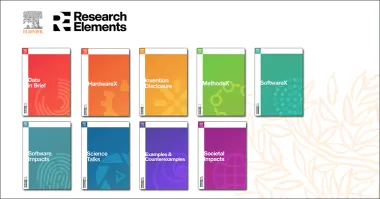
Meet the journals breaking the traditional research article mold

Manuscript rejected? Five insider tips to see you to success

Seven top tips on stopping APC scams
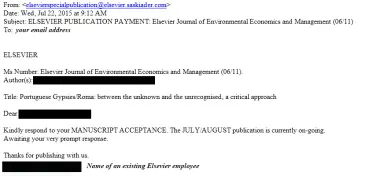
Beware of fraudulent emails requesting payment

Breaking down barriers: perspectives on why good research communication is a must

Five things every researcher should know about image manipulation
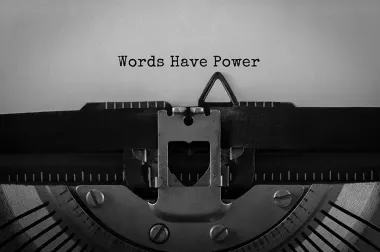
How two insure your on track four publication: the importance of good manuscript language

In the eye of the beholder

The importance of remaining accountable

Location, location, location - where to get published

CRediT where credit's due

Never miss out on a special issue again

Finding the best journal for a paper

The lasting language of publication? - Part II

The lasting language of publication?

Eight lessons from the webinar "article to art: creating visual abstracts"

Ten essential tips to ensure the integrity of your research

Announcing the new “Evaluate Manuscript”

Top tips on identifying citation misconduct

Journal editors and reviewers need to evaluate papers on scientific merit, not language

Four ways you can use the Elsevier Privacy Center: How Elsevier provides transparency for your personal data

Meet the woman who’s tracking down systematic research fraud
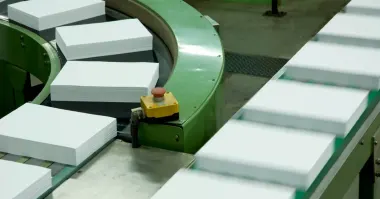
Paper mills: see the wood for the trees (Part 1)
Paper mills: see the wood for the trees (part 2), paper mills: see the wood for the trees (part 3).
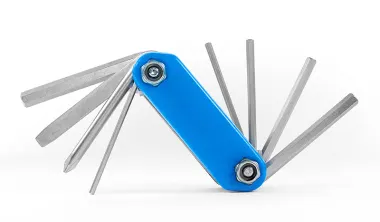
101 ways to use Scopus – part one
101 ways to use scopus – part two, clarification of our policy on prior publication.
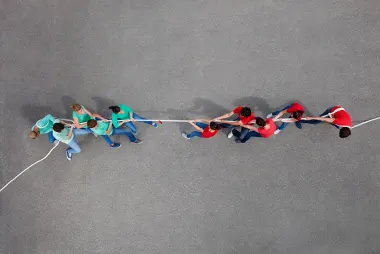
It’s a tie! How to deal with conflicting recommendations from reviewers

Tips & tricks for managing the peer review process with Editorial Manager - Part 2
Tips & tricks for managing the peer review process with editorial manager - part 3.
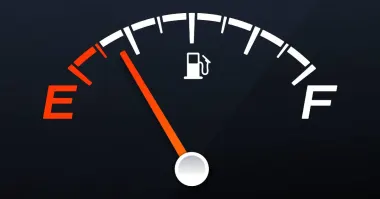
Running on empty? How to deal with an article shortage

Paving the way to increase diversity in journals – and research

Something to declare?

Editor in a (60-second) spotlight – Stelvia Matos

Perspectives on peer review: insights from industry experts

Recap and recent enhancements to Find Reviewers

Peer review: how exactly do I do that?

Ten reasons to accept your (next) invitation to review

Two heads are better than one: working with a co-reviewer

How to tackle your first review

Recognition innovation: enabling peer review activity integration with ORCID

Want to become a certified peer reviewer?

Introducing Reviewer Hub

Our reviewer volunteer journey
Societies' update.

Societies and their journals walking the talk on the road to equity

3 ways professional societies can boost impact through collaboration

Data-driven journal feedback is a gift

Lights, cameras, action — and more! Tips for improving your author and editor videos

How IBRO revamped its journals to better serve the global neuroscience community

Creative ways to celebrate journal and society anniversaries
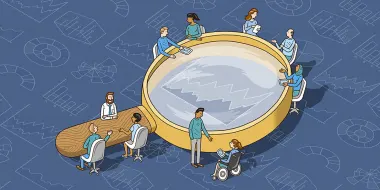
Three steps to implementing DEI across your professional society
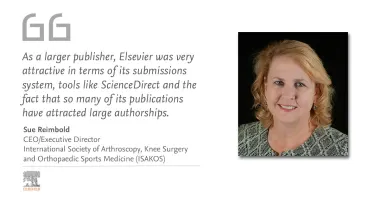
Flipping to open access: How a future-focused society switched publishers and business models
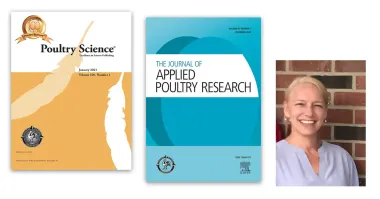
Why open access can offer different possibilities for societies
Societies’ update, learn how elsevier is supporting open science.
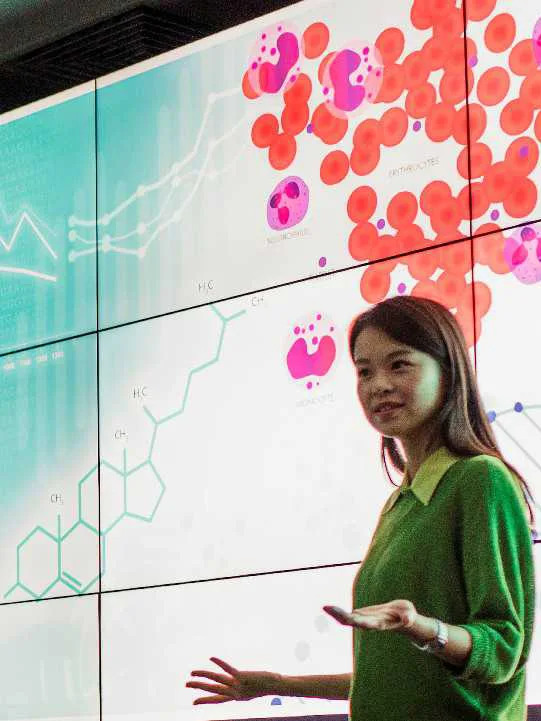
- Ground Reports
- 50-Word Edit
- National Interest
- Campus Voice
- Security Code
- Off The Cuff
- Democracy Wall
- Around Town
- PastForward
- In Pictures
- Last Laughs
- ThePrint Essential

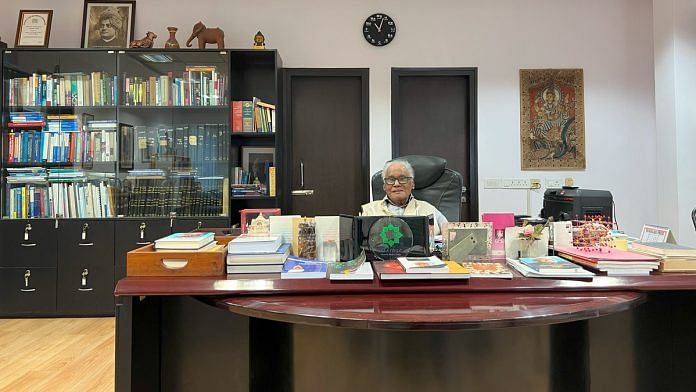
Bengaluru: Hundreds of students, science teachers, researchers, and professors gathered at Bengaluru’s Jawaharlal Nehru Centre for Advanced Scientific Research campus to celebrate CNR Rao’s 90th birthday on 30 June. It’s the institute’s very own ‘Teacher’s Day,’ celebrated for 17 years in honour of the famed Indian scientist and co-founder of JNCASR. But this year is special—the institute has opened a large gallery dedicated to honouring his life’s work and achievements.
“My birthday was alright,” said a modest Rao, whose work has been foundational to many advances in materials science over the last few decades, including carbon nanotubes .
A stroke a couple of years ago has left the structural chemist with a severe speech impediment, but his academic tenacity is undiminished. At 90, Rao shows no inclination to ‘slow down’. When he’s not immersed in institute work, he’s busy publishing papers and collaborating with his wife, author and Kannada science communicator Indumati Rao.
The new gallery is covered from top to bottom with his numerous awards from multiple countries, along with photographs with legendary scientists like CV Raman and Vikram Sarabhai, Indian prime ministers he worked with as a scientific advisor, and heads of states of Russia, Japan, UK, France, as well as Pope John Paul 2 and the late Queen Elizabeth II of England.
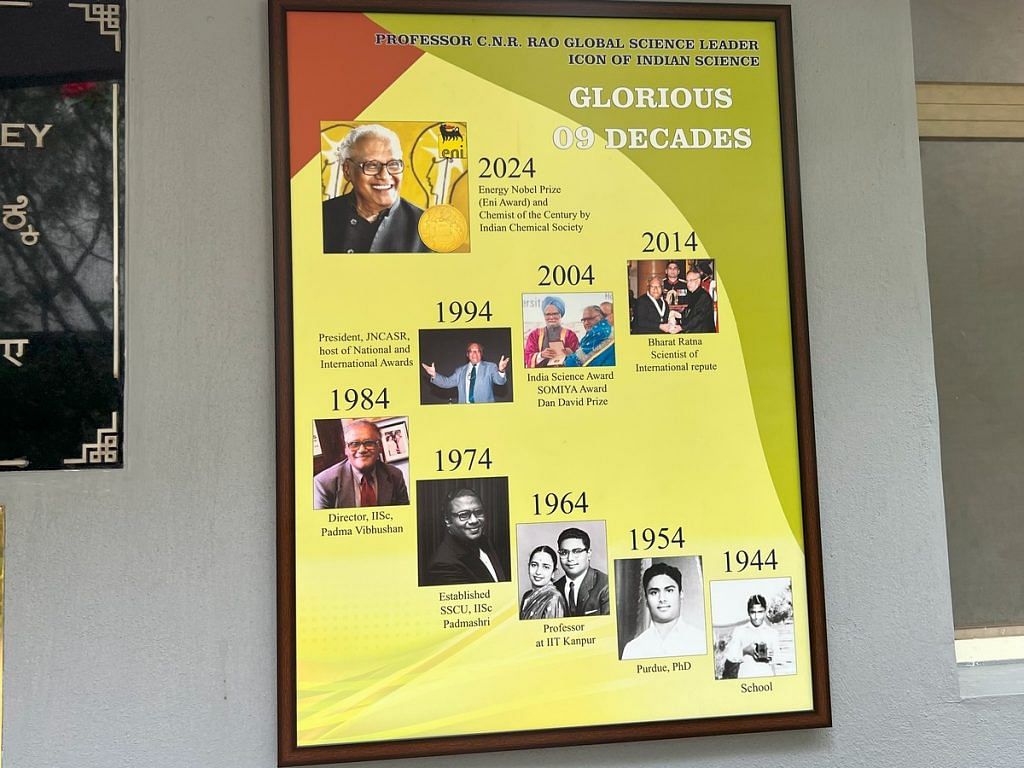
It’s a testament to the dazzling career of one of India’s most prolific scientists. Rao has received the Shanti Swarup Bhatnagar Prize, the Hughes Medal, the Royal Medal, the National Order of Scientific Merit, the Padma Vibhushan, and the Padma Bhushan. He is only the third scientist after CV Raman and APJ Abdul Kalam to be awarded the Bharat Ratna.
But Rao, who has authored over 1,500 papers and more than 50 books, is more interested in the next big breakthroughs and the institute’s research processes . He sits in his office behind a large desk full of papers and files arranged by his staff. His aide and special projects coordinator, AN Jayachandra, translates his responses by his side.
“He has been publishing papers. That hasn’t stopped. We come here every day at 9.30 am and work here for two hours. He works with students closely and meets people daily,” said his wife Indumati.
The two have offices near each other. Indumati works on science exposure projects for children, while the professor remains immersed in institute work, as he has been for decades. Together, they want to make science more accessible in rural Karnataka.
Prof Rao is firm that young researchers should focus on their science without being bogged down by administrative tasks like securing financial grants.
Also Read: Ahmedabad lab is now predicting India’s climate future. It’s using ‘atomic time machines’
Spreading the word
The couple have a shared passion— spreading scientific awareness among rural children. To further this cause, they established the CNR Rao Education Foundation in 2005.
“He decided a few years ago that he wants to communicate science to young people,” said Indumati. “And my dream was to do something for rural children. So, we started this foundation for that purpose, and to also give back to the scientific community.”
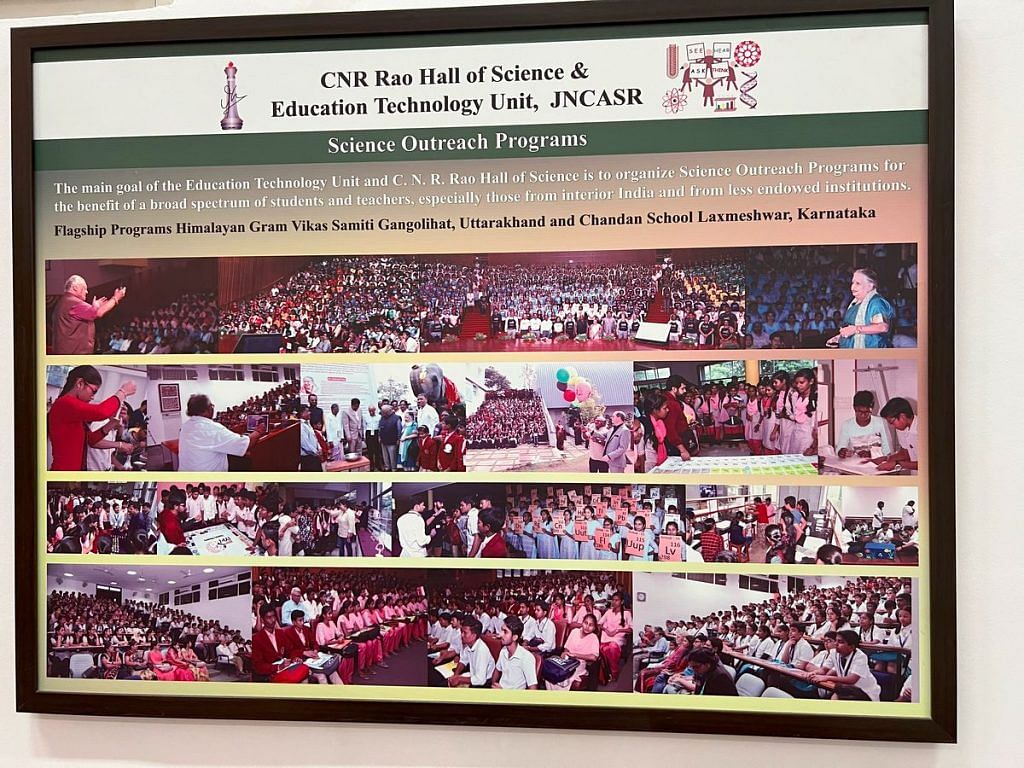
Indumati is currently busy translating a piece of science writing from English to Kannada, which will be distributed across rural schools.
The Foundation also built new gallery dedicated to Rao’s work. Alongside this building, there is an interactive science museum, envisioned by the scientist himself
Visitors can take part in table-top science experiments, view large-scale models of atomic structures, and learn about the lives of famous chemists through history.
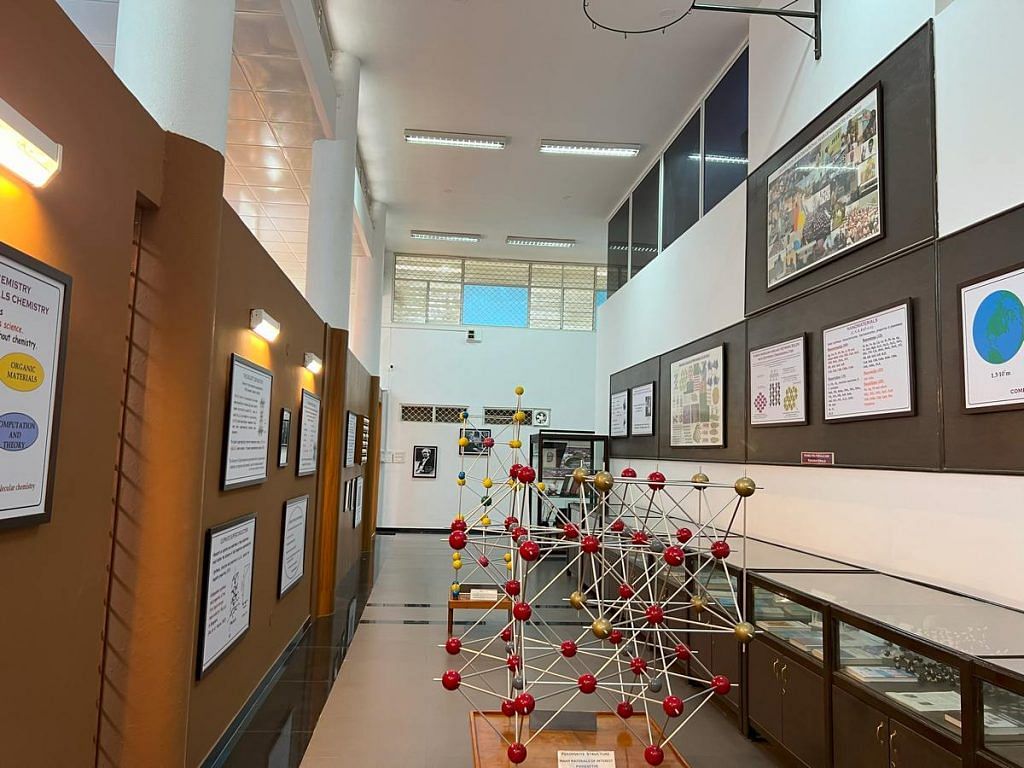
Madam Rao and Professor Rao, as they’re affectionately known, are also believers in integrating culture with science, particularly through music. Rao is deeply interested in the context in which science is understood in the world, as well as the intricate connections between science, the laws of nature, arts, and creativity. His idea of interdisciplinary learning extends beyond scientific research to include experiences like music.
Faculty don’t have to conform to any structure. They are free to choose the area of their work, and aid is facilitated to them on par with international standards. They can pursue their science at their free will, and that is a signature of this institute -AN Jayachandra, special projects coordinator
“To be a complete person, it is not enough to do science only. There must also be exposure to culture, like music,” said Indumati, speaking for the two of them. “Every year, we invite a well-known artist who performs a concert at the institute for students and researchers, and musicians talk about their theory.”
The Raos are patrons of Hindustani classical music, and have followed a dinnertime tradition every day for decades— after their evening meal, they play a music recording or a playlist for 1.5 hours. No one talks during the “concert”.
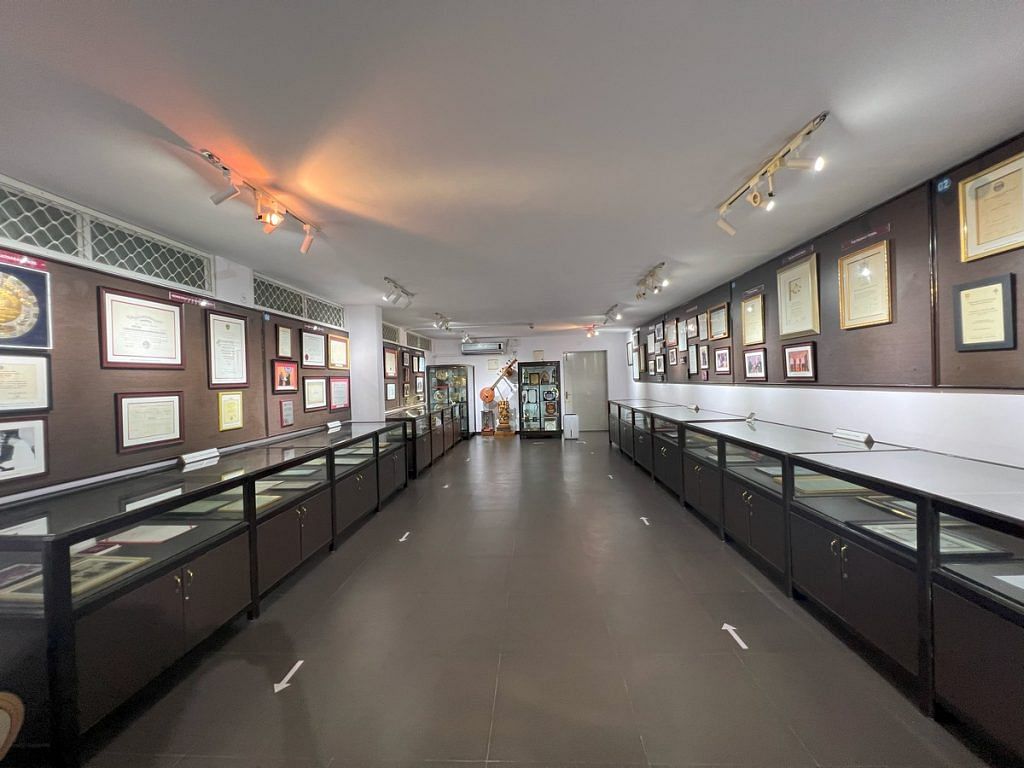
A culture of academic freedom
Within academia, Prof Rao is known for his clear vision as the head of JNCASR. He is firm that young researchers should focus on their science without being bogged down by administrative tasks like securing financial grants and other procedural necessities.
“Funding is always a challenge, but his problem-solving mentality has been a boon for everyone here. No matter the project, when we tell Professor Rao that there is a problem, there’s a solution a few days later,” said Jaishri Sanwal, a geoscientist at the institute.
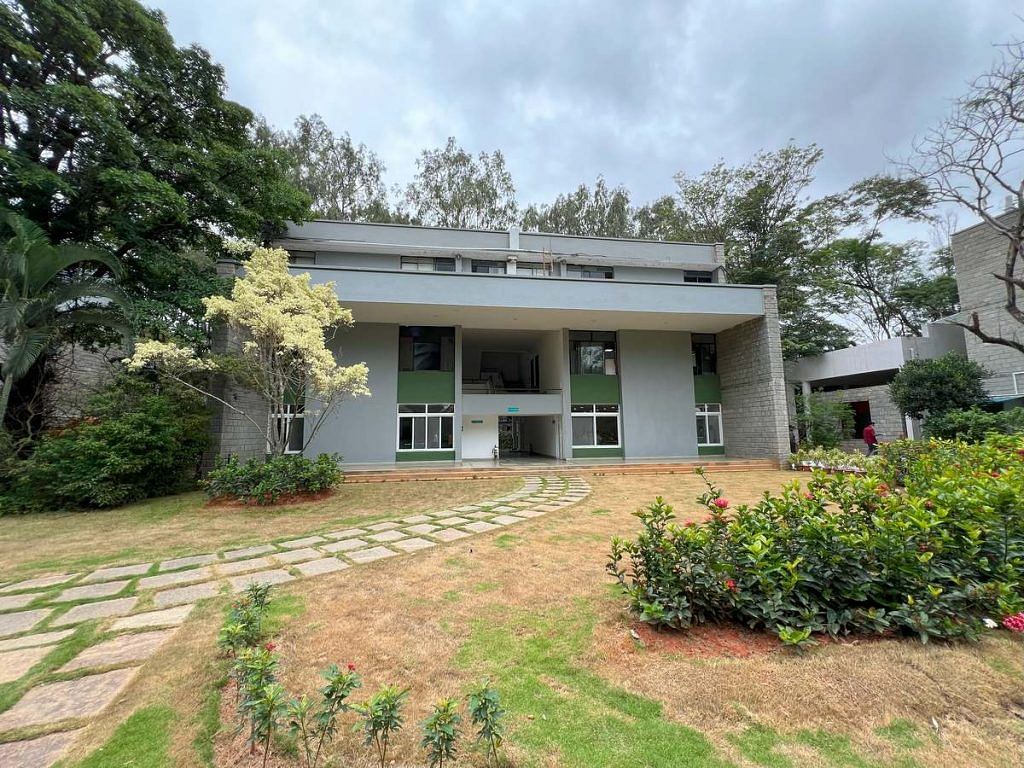
Sanwal, who works in an office full of rocks and fossils, explained that she doesn’t hold a teaching position, nor does she have a permanent one, but she has been working as a research scientist at JNCASR for just over a decade. Her research centres on studying paleo-earthquakes in the Himalayas for risk assessment and recreating ancient environments across India to help prepare for the future.
“The geodyamics unit here (now called geosciences unit), is very active here and we can feel Professor Rao’s legacy,” she said.
As an administrator Rao’s ability to identify impactful science and back it up with resources is widely recognised by faculty and researchers.
One can achieve when one contributes without self-interest. Once in a way, bright research ideas come in. Then we have made it -CNR Rao
“The researchers here work on frontier areas of science,” said Rao’s aide Jayachandra. “Faculty don’t have to conform to any structure. They are free to choose the area of their work, and aid is facilitated to them on par with international standards. They can pursue their science at their free will, and that is a signature of this institute.”
The green JNCASR campus, which covers about 27 acres in the suburb of Jakkur, is not as expansive as many other leading scientific institutes, but it packs a punch. It’s research units cover a range of specialities, including materials, engineering mechanics, evolutionary biology, theoretical physics, and new chemistry, all bound together through interdisciplinary research.
Unlike other major research institutes with countless departments, work here is structured into a mere seven to nine major departments, with less than 30 researchers. But within these departments, researchers, scientists, and engineers have been working on everything from nanodevices and degenerative diseases to virology and ancient Indian climate.
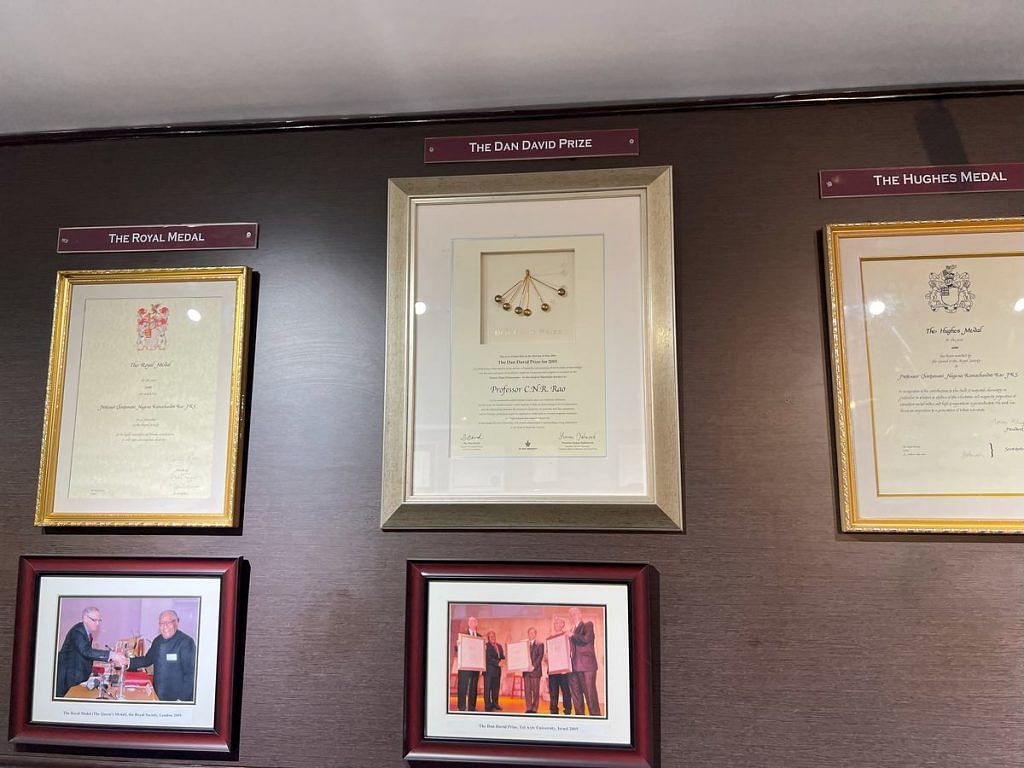
The close-knit campus environment facilitates spontaneous research ideas due to the way researchers get to interact with each other, including over casual chats, according to Ravi Manjithaya, head of neurosciences.
“Prof Rao has always been ahead of his time, and still is,” he said. “We do cutting-edge research at par with the rest of the world, even though we are surprisingly one of the smallest research institutes in the world. We consistently rank high, sometimes to our own surprise, and one of the main reasons is how so many departments are pushed to work together so closely.”
Last year, just like every other year, JNCASR was ranked in the top 30 of India’s National Institutional Ranking Framework (NIRF), the only autonomous institute under the Department of Science and Technology to achieve this. In international research rankings too, the small research institute consistently punches above its weight, with a high point being a global ranking of 7 by scientific publisher Nature in 2019.
The research at the institute is often innovative. Biotechnologist Dr. Sheeba Vasu, for example, works on biological clocks and what determines human sleep patterns.
“We live on earth, we have 24-hour clocks. However different organisms fit into various temporal niches beyond just mere response to sunlight. We ask in our labs, using flies , how clocks evolve biologically,” summed up Vasu, whose lab works at the intersection of neuroscience, biotechnology, and genetics.
On the administrative side, JNCASR’s faculty and staff hold a deep respect for Rao’s leadership, especially his policy of unburdening scientists from bureaucracy and paperwork.
“At what institute will a senior registrar and administrator be sitting like this, helping with interviews and arranging appointments,” Manjithaya laughed, pointing at Jayachandra seated across from him.
Also Read: ‘We are scientists, not beggars’. Indian Science Congress is in a war against govt
Legacy and future
Rao’s seminal work on solid state chemistry, materials, metal oxides and conductivity has led to advances in the fields of superconductivity, hybrid materials, nanomaterials, insulators, and more.
He is passionate about fostering stronger interdisciplinary research, both within India and internationally. His seven-decade-long experience in the Indian scientific community has only made him more optimistic.
As the Raos and the institute plan for their future, the next batch of PhD students has already arrived. Each department is hosting orientation sessions where the faculty introduce the students to the campus and their to-be colleagues. Around 30 young scholars, from all over the country, fresh from universities, introduce themselves to the people they will spend the next five years with, walking around campus, and looking inside laboratories with stars in their eyes.
“I am not disappointed by academia,” Rao said. We must work hard. One can achieve when one contributes without self-interest. Once in a way, bright research ideas come in. Then we have made it.”
Subscribe to our channels on YouTube , Telegram & WhatsApp
Support Our Journalism
India needs fair, non-hyphenated and questioning journalism, packed with on-ground reporting. ThePrint – with exceptional reporters, columnists and editors – is doing just that.
Sustaining this needs support from wonderful readers like you.
Whether you live in India or overseas, you can take a paid subscription by clicking here .
- Jawaharlal Nehru Centre for Advanced Scientific Research (JNCASR)
- Scientific research
LEAVE A REPLY Cancel
Save my name, email, and website in this browser for the next time I comment.
Most Popular
Unable to take oath & facing threats, dalit woman president of a tn panchayat & her fight for justice, ev lifespan is getting shorter. they are becoming like smartphones, how a collision with nasa spacecraft may have knocked an asteroid moon off course & out of shape.
Required fields are marked *
Copyright © 2024 Printline Media Pvt. Ltd. All rights reserved.
- Terms of Use
- Privacy Policy

On-Campus Summer Programs
Be a scientist.
- Science and Engineering
What can astronomers learn from black holes? How do engineers decide on the best bridge designs? How do marine biologists know that dolphins are smart? Learn how scientists answer big questions and solve world problems by designing and conducting your own hands-on investigations in biology, chemistry, physics, engineering, and more. As ecologists, you and your classmates may experiment with ways to stop soil erosion. As chemists, you might work in teams to learn how fireworks use metals to produce different colors when they burn. You’ll question and hypothesize; identify and manipulate variables; observe, measure, and record data; analyze and interpret results—and you’ll leave this course thinking like a scientist.
Typical Class Size: 12
Course Overview
Learning Objectives:
- Construct plans for an original experiment using the scientific method, including statement of the question or problem, variables, controls, hypothesis, procedures including sketches/diagrams, data collection methods, and tools that would be used
- Generate criteria for a successful lab experiment that considers potential limitations and solutions
- Collect, organize, and analyze lab data in tables and graphs, looking for patterns and trends that defend a conclusion using evidence to support or refute the hypothesis
- Research and discuss three major branches of science, and describe their similarities and differences
This course is
Summer Dates & Locations
After May 31, 2024 , registration is available upon request pending eligibility and seat availability. To request placement, email [email protected] after submitting a program application.
Session One
Session Two
Testing and prerequisites.
| Math | Verbal | |
|---|---|---|
| Required Level | CTY-Level | Not required |
Students must achieve qualifying scores on an advanced assessment to be eligible for CTY programs. If you don’t have qualifying scores, you have several different testing options. We’ll help you find the right option for your situation.
Cost and Financial Aid
Application fee.
- Nonrefundable Application Fee - $50 (Waived for financial aid applicants)
- Nonrefundable International Fee - $250 (outside US only)
Financial Aid
We have concluded our financial aid application review process for 2024 On-Campus Programs. We encourage those who may need assistance in the future to apply for aid as early as possible.
Course Materials
Students should bring basic school supplies like pens, notebooks, and folders to their summer program. You will be notified of any additional items needed before the course begins. All other materials will be provided by CTY.
Course Extras (Lab fee info, etc): Lab fee: $145
About Science and Engineering at CTY
Explore space and our planet.
In our Introduction to Astronomy course, we’ll visit a nearby observatory or planetarium, see what the cosmos looks like through various spectra, and immerse ourselves in the science and technology that bring the universe closer to home. In Marine Ecology , we’ll visit local wetlands and tidepools, observe flora and fauna, collect water samples and analyze them for clues about their health and humans’ impact. And in The Global Environment , we will explore the human impact on our environment and generate proposals for addressing climate change.
Bond over chemistry
Our chemistry courses help you see the world differently, starting at the atomic level. The Edible World gives budding chefs and science lovers a glimpse into the chemical reactions that happen when we make food, and the chemical makeup of meals and treats we eat every day. In our Crystals and Polymers course, we’ll synthesize slime, grow rock candy, and isolate strawberry DNA to learn about the molecular structure of naturally occurring gems and human-produced plastics. In Chemistry in Society , we'll consider how the chemicals in products can both enhance and degrade the world around us; produce biodiesel in a lab to understand alternative fuels; and prepare aspirin to learn about the healing and toxic properties of pharmaceuticals.
Meet our instructors and staff
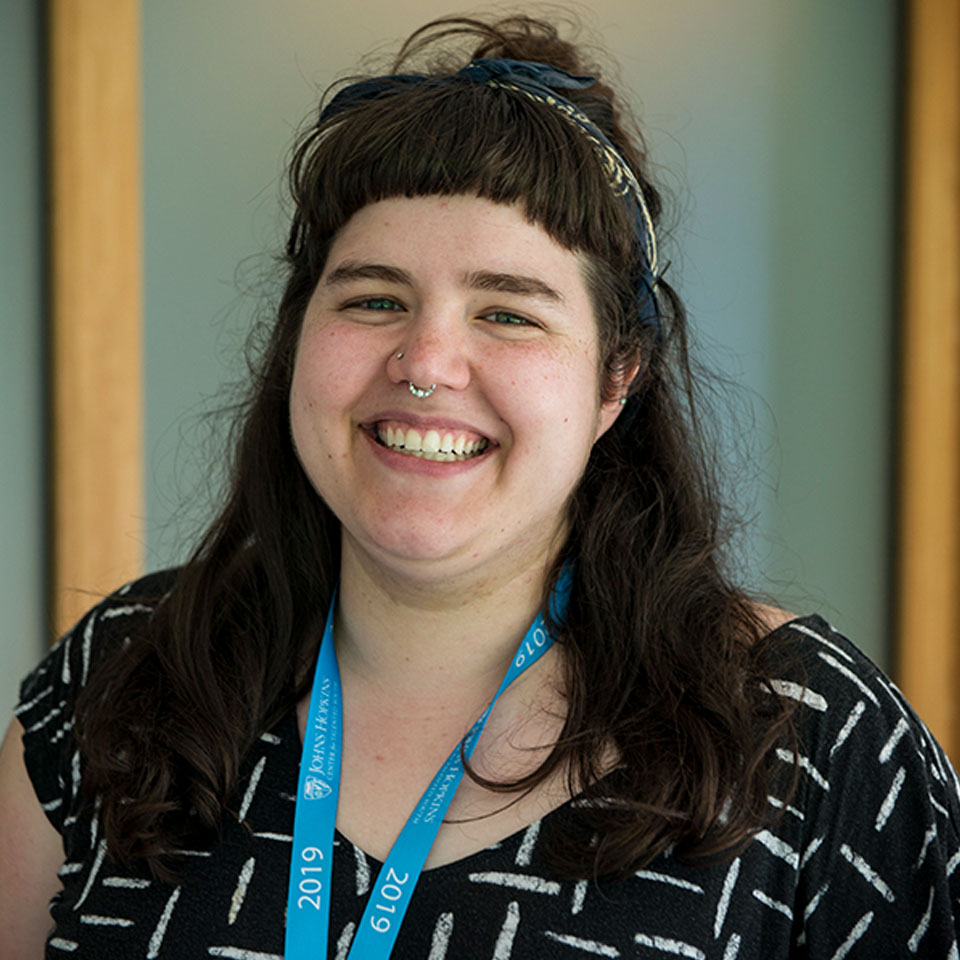
This was my fifth summer working at CTY. I love the culture of CTY. For three weeks, students and staff from all over the world create their own special community unlike anywhere else. I love getting to be a part of that.
Amanda Mastronardi
Dean of Residential Life and CTY Alum

CTY students have a contagious energy combined with a thirst for knowledge that I look forward to each summer. They remind me of why I became a teacher.
Antonia Richards
Chemistry Instructor

CTY is one of the highlights of my year. Even though it’s the summer, the immersive learning in a subject where these students truly excel and shine is invigorating for me as a teacher.
Lauren LaPorta
Writing Instructor
Thank you for visiting nature.com. You are using a browser version with limited support for CSS. To obtain the best experience, we recommend you use a more up to date browser (or turn off compatibility mode in Internet Explorer). In the meantime, to ensure continued support, we are displaying the site without styles and JavaScript.
- View all journals
- Explore content
- About the journal
- Publish with us
- Sign up for alerts
- Open access
- Published: 28 August 2024
Using matrix assisted laser desorption ionisation mass spectrometry combined with machine learning for vaccine authenticity screening
- Rebecca Clarke ORCID: orcid.org/0009-0006-5971-3015 1 ,
- Tehmina Bharucha ORCID: orcid.org/0000-0002-6772-2855 2 , 3 ,
- Benediktus Yohan Arman ORCID: orcid.org/0000-0003-2378-2386 2 , 3 ,
- Bevin Gangadharan ORCID: orcid.org/0000-0002-7466-2977 2 , 3 ,
- Laura Gomez Fernandez 2 , 3 ,
- Sara Mosca ORCID: orcid.org/0000-0001-9479-5614 4 ,
- Qianqi Lin ORCID: orcid.org/0000-0001-7578-838X 4 nAff12 ,
- Kerlijn Van Assche ORCID: orcid.org/0000-0002-9074-7575 5 , 6 , 7 ,
- Robert Stokes 8 ,
- Susanna Dunachie ORCID: orcid.org/0000-0001-5665-6293 6 , 9 , 10 ,
- Michael Deats 5 , 6 , 7 ,
- Hamid A. Merchant ORCID: orcid.org/0000-0002-7668-5013 11 nAff13 ,
- Céline Caillet ORCID: orcid.org/0000-0002-5554-2603 5 , 6 , 7 ,
- John Walsby-Tickle ORCID: orcid.org/0000-0002-1287-9580 1 ,
- Fay Probert ORCID: orcid.org/0000-0002-8580-2023 1 ,
- Pavel Matousek ORCID: orcid.org/0000-0003-0912-5339 4 , 5 ,
- Paul N. Newton ORCID: orcid.org/0000-0003-0734-2022 5 , 6 , 7 ,
- Nicole Zitzmann ORCID: orcid.org/0000-0003-1969-4949 2 , 3 &
- James S. O. McCullagh ORCID: orcid.org/0000-0003-4733-1205 1
npj Vaccines volume 9 , Article number: 155 ( 2024 ) Cite this article
632 Accesses
41 Altmetric
Metrics details
- Drug regulation
- Population screening
- Predictive markers
The global population is increasingly reliant on vaccines to maintain population health with billions of doses used annually in immunisation programmes. Substandard and falsified vaccines are becoming more prevalent, caused by both the degradation of authentic vaccines but also deliberately falsified vaccine products. These threaten public health, and the increase in vaccine falsification is now a major concern. There is currently no coordinated global infrastructure or screening methods to monitor vaccine supply chains. In this study, we developed and validated a matrix-assisted laser desorption/ionisation-mass spectrometry (MALDI-MS) workflow that used open-source machine learning and statistical analysis to distinguish authentic and falsified vaccines. We validated the method on two different MALDI-MS instruments used worldwide for clinical applications. Our results show that multivariate data modelling and diagnostic mass spectra can be used to distinguish authentic and falsified vaccines providing proof-of-concept that MALDI-MS can be used as a screening tool to monitor vaccine supply chains.
Similar content being viewed by others
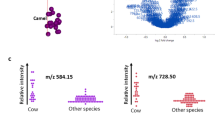
Speciation and milk adulteration analysis by rapid ambient liquid MALDI mass spectrometry profiling using machine learning

An improved simple method for the identification of Mycobacteria by MALDI-TOF MS (Matrix-Assisted Laser Desorption- Ionization mass spectrometry)
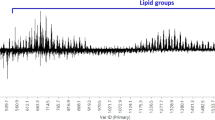
Identification of milk from different animal and plant sources by desorption electrospray ionisation high-resolution mass spectrometry (DESI-MS)
Introduction.
Safe and effective medicines are crucial to people’s health worldwide but an increase in substandard and falsified pharmaceutical products threatens public health on a global scale. The World Health Organisation estimated that over 10% of pharmaceutical products in lower and middle-income countries were substandard or falsified (SF) in 2017 and has identified SF medicines as one of the urgent health challenges for the next decade 1 , 2 .
Reports of SF vaccine products have been increasing in recent years, including rabies, cholera, meningitis, yellow fever, hepatitis B and coronavirus disease 2019 (COVID-19). For example, in the first 15 months of the global COVID-19 vaccination programme, there were over 184 reports, across 48 countries, of diverted and SF COVID-19 vaccines, involving millions of doses 3 . A range of adulteration and falsification incidents have been identified, including replacement of vaccines with saline or other adjuvants such as sugar solutions and antibiotics, and errors in manufacture have led to substandard production 4 , 5 , 6 , 7 , 8 . Before the COVID-19 pandemic, there were multiple examples, including low potency rabies vaccines for dogs in China 9 , contaminated Salk polio vaccine in the USA 10 , falsified rabies vaccines in the Philippines 11 , falsified yellow fever vaccine in Bangladesh 12 and mass administration by health workers of falsified routine childhood vaccines in Indonesia 13 .
Substandard vaccines arise from inadvertent errors in manufacturing and/or degradation in supply chains (e.g. inappropriate cold chain management), and falsified (aka counterfeited) vaccines arise from criminal, fraudulent activities 14 . It is important to distinguish these as the origins and solutions are different, but both are a major health risk for recipients with the potential to lead to increased morbidity and mortality and undermine the reputation of vaccines as safe medical products that play a vital role in maintaining the health of communities worldwide 15 , 16 . With a rise in vaccine use globally, it is becoming increasingly clear that a lack of risk analysis, monitoring and intervention within supply chains is allowing the problem of vaccine falsification, in particular, to develop 17 , 18 . The current lack of testing and monitoring represents a significant vulnerability, and new methods are required to enable risk-based post-market surveillance 2 . Vaccine supply chains are complex and rigorous testing at the proximal end of the supply chain, for example, will not mitigate against incidents downstream of this. Screening at the distal end of the supply chain may necessitate a larger, more differentiated testing network, spanning multiple locations and requiring rapid results. A range of techniques, devices and methods are therefore likely to be needed to effectively monitor supply chains for SF products and differentiate these from authentic vaccines 19 . Many, if not most, countries do not have laboratories able to check the quality of a diverse range of vaccines. Hence, testing methods are needed in central facilities that can rapidly give detailed information to facilitate decisions, ensuring that appropriate samples are sent to reference laboratories. Given the growing need for vaccine authenticity testing and the current lack of suitable methods, we explored matrix-assisted laser desorption/ionisation mass spectrometry (MALDI-MS) as an approach for detecting vaccine falsification.
Mass spectrometry (MS) has emerged as an important platform for molecular-level profiling, providing high sensitivity and high selectivity for the analysis of molecular composition in complex samples 20 . Machine learning and additional statistical approaches are also used to classify samples and identify biomarkers 21 , 22 , 23 , 24 . For example, metabolite profiles are used to differentiate healthy and disease states in biological extracts and blood products, such as serum and plasma, where machine learning is used to explore the large amounts of chemical information inherent in such datasets and implement ' untargeted ' hypothesis-generating approaches to data analysis 25 , 26 , 27 . Liquid chromatography–mass spectrometry (LC-MS) and gas chromatography–mass spectrometry (GC-MS) are commonly used for molecular characterisation but these research-grade instruments are expensive, require high levels of expertise to operate and are not evenly distributed worldwide, and therefore less favourable for screening at a global scale.
MALDI-MS is used in proteomics and, more recently, mass spectrometry imaging and molecular profiling applications such as metabolomics and small molecule pharmaceutical analysis 28 , 29 , 30 , 31 , 32 , 33 , 34 . Low sample volume requirements and the high-throughput nature of the analysis, provide significant benefits 35 , 36 , 37 , 38 , 39 . Recent developments in MALDI-MS applications for routine clinical testing are of specific interest; for example, used in high-throughput microorganism identification where pathogenic bacteria can be rapidly identified at low cost. The speed and effectiveness of this approach has led to worldwide deployment of MALDI-MS instruments; mainly Bruker MALDI Biotyper Sirius and bioMérieux VITEK MS systems in clinical laboratories for routine medical testing 40 . This provides an attractive, low-cost mass spectrometry platform with a global infrastructure that could be used for coordinated vaccine authenticity testing.
Vaccines, depending on their type, can contain a wide range of antigens (as active ingredients), such as messenger RNAs (mRNAs), oligomers, viral vectors, live attenuated or killed organisms, lipids, polymers, proteins and a range of small molecule adjuvants which can include sugars and other biomolecules 41 . The heterogeneity of different vaccines, both in terms of diversity in active constituents, physiochemical properties and concentrations, makes samples challenging to characterise from an analytical perspective. To date, we are not aware of any applications using MALDI-MS for vaccine characterisation and authentication studies but the inherent sensitivity and molecular selectivity of MALDI-MS, and the existing worldwide availability of instrumentation in clinical microbiology laboratories, provides a compelling case to explore its potential as a device for vaccine authentication. The focus of this study was to explore the capabilities of MALDI-MS “ biotyping ” systems for vaccine analysis by developing a method and validating it for the analysis of authentic vaccine samples, falsified vaccines and their categorisation using machine learning approaches. For the data analysis, we explored several data processing software approaches, including SpectralWorks AnalyzerPro XD software which was then successfully used for processing and statistical analysis of the MALDI data. However, we found the open-source packages MALDIquant 42 and MetaboAnalyst 5.0 webtool 43 highly effective in combination and used these for the data analysis reported in this study. We tested the workflow using four different commercially available vaccines and a range of known-falsified vaccine compositions. We used machine learning and additional statistical analysis to model the data and predict m/z features from the experimental data that had the potential to be used in an online database approach for vaccine authenticity screening. Figure 1 provides a conceptual overview of the workflow developed in this study.

Step A: vaccine samples to be analysed are pipetted into a 96-well plate positioned in the INTEGRA Assist Plus. Step B: replicate spots of 1:1 ( V / V ) premixed sample and α-cyano-4-hydroxycinnamic acid (CHCA/HCCA) matrix are pipetted onto the target plates using the Assist Plus robot. Step C: raw spectra are acquired using the MALDI-MS instruments. Step D: data processing of the raw spectra and statistical analysis are performed. MALDI: matrix-assisted laser desorption/ionisation; PLS-DA partial least squares-discriminant analysis. This figure was created using BioRender.com.
Analysis of vaccines and falsified constituents by MALDI-MS
Four different authentic, commercially available, vaccines and eight falsified surrogates previously reported in falsified vaccine products 3 , were used in this study. The authentic vaccines were Nimenrix (Pfizer Ltd, Sandwich, UK), a conjugate vaccine that protects against Neisseria meningitidis groups A, C, W-135 and Y; Engerix B (GlaxoSmithKline, Brentford, UK), which protects against hepatitis B virus infection (HBV); Flucelvax Tetra (Seqirus Ltd., Maidenhead, UK) which protects against influenza (Sept/Oct 2021 to early 2022 season) and Ixiaro (Valneva Ltd., Fleet, UK), for immunisation against Japanese encephalitis virus infection. Information about genuine vaccines and falsified vaccine surrogates is provided in Table 1 3 , 8 , 44 , 45 , 46 , 47 , 48 , 49 .
We performed sample analysis in parallel on two separate MALDI-MS systems, both routinely used for microorganism clinical testing with worldwide deployment. A MALDI Biotyper Sirius (Bruker Daltonics) and a VITEK MS (bioMérieux, Craponne, France). The two instruments provided very similar performance when combined with data modelling but interestingly provided slightly different mass spectral profiles when visually compared. First, we acquired mass spectra using methods adapted from the standard in vitro diagnostic (IVD) parameters provided on both instruments. We made slight adjustments to the laser raster pattern and percentage energy range to accommodate a broader range of sample types. Spectra were acquired over three different overlapping m/z ranges: 0–900; 700–2500 and 2000–20,000. Representative spectra for Engerix B and the eight falsified constituent samples at m/z 700–2500 and m/z 2000–20,000 mass ranges are shown in Supplementary Figs. 1 , 2 for the Biotyper Sirius and VITEK MS instruments, respectively. Visible peaks in the low-mass range included matrix peaks that were common to all samples and could be identified from matrix blanks, as well as analyte peaks related to the individual samples. Given the rich spectral data obtained in the m/z 0–900 range, where vaccine-specific excipients were found, we decided to focus on this m/z range in further analyses. Figure 2 shows representative mass spectra for the Engerix B vaccine and each of the surrogate falsified samples as well as blank CHCA matrix at the m/z 0–900 range (similar comparisons for the other vaccines are provided in Supplementary Figures 3 & 4 ). Non-matrix peaks, that were unique to either individual vaccines or falsified constituents, were identified by manual inspection of the spectra. The spectral peaks in Fig. 3 a, b provide an illustration of the presence and absence of mass spectral peaks which were observed for Engerix B and the falsified vaccine constituents. These analyses established the proof-of-principle that the MALDI-MS systems were capable of measuring mass spectral peaks that can distinguish genuine comparator vaccines from falsified vaccine surrogates.

a Biotyper Sirius mass spectra. b VITEK mass spectrometry (MS) spectra. Through the presence, absence and relative intensity ratios of peaks in the spectra, the genuine vaccine can be distinguished from the falsified constituents by manual inspection of spectra. Common matrix peaks are indicated by shaded bars.

A pooled QC sample was prepared from the vaccines and falsified samples. An Assist Plus robot was used to combine the matrix with each sample in a 1:1 (V/V) ratio and then spot onto the MALDI plate. Only the QC and first three samples are illustrated, but all four authentic vaccines and eight falsified constituent samples were prepared in the same way across multiple MALDI plates which were analysed in a random sequence within the MALDI instruments. CHCA: α-cyano-4-hydroxycinnamic acid; MALDI-MS: matrix-assisted laser desorption/ionisation-mass spectrometry. This figure was created using BioRender.com.
MALDI method development and validation
Having established the feasibility of distinguishing vaccines and falsified constituents by manual inspection, we next developed and validated a method and workflow for data processing and analysis. The reproducibility of MALDI-MS mass spectra is known to be largely affected by matrix type, sample composition and matrix-sample crystallisation conditions, as well as the specific laser ablation parameters 50 , 51 , 52 . We, therefore, investigated analytical reproducibility on both platforms.
In order to determine analytical “ spot-to-spot ” reproducibility and intra-batch (vaccine vial-to-vial) reproducibility, we analysed replicates of the four authentic vaccine samples and eight falsified surrogates. For each sample vial, we created four replicate spots on the MALDI target plate and replicated this three times using three separate vials (same manufacturer batch number/part number), so there were 12 MALDI sample spots for each vaccine and falsified constituent on a MALDI plate. All samples were distributed across three Bruker MALDI plates and six bioMérieux MALDI slides, respectively (due to the different dimensions of the plates for both systems). We also created a pooled quality control sample which comprised an equal volume mixture of each of the four authentic vaccines and eight falsified vaccine samples. The experiment was designed to investigate analytical reproducibility, spot-to-spot variability and vial-to-vial reproducibility. A schematic illustrating how the MALDI plate samples were spotted, and the plates configured is shown in Fig. 3 .
Each MALDI spot was analysed under the same settings for each instrument. A randomised acquisition sequence was used to control for any bias in sample preparation or run order. Table 2 provides the percentage RSD for the total ion intensity for all 12 replicates of each sample and 24 QC replicates prior to intensity calibration from analysis on the Sirius MALDI platform (equivalent data for the VITEK is given in Supplementary Table 1 ). These results show the total variation of the vaccine or falsified constituent samples. The range in RSD values for all samples except Amikacin was from 18 to 44% over all sample replicates for each group. This reproducibility in signal intensity was similar to the RSDs reported in other MALDI-based profiling studies using other sample types 53 . Figure 4a shows the vial-to-vial reproducibility specifically (e.g., inter-vial variability) for each genuine vaccine and falsified constituent, comprising individual percentage RSD calculations for the four sample preparation replicates of each vial. Equivalent data for the VITEK is shown in Supplementary Fig. 5a .

a The percentage relative standard deviation (RSD) values for each vial per sample are plotted showing the range and mean. b The total ion count (TIC) for each quality control (QC) sample replicate plotted in consecutive run order shows no particular bias (replicates spotted on different target plates are alternately shaded/white). c TIC, laser power, and number of shots of the laser for replicates plotted consecutively for each QC sample.
Analysis of Amikacin, Gentamicin, and Nimenrix gave some of the highest RSD values and the total RSD for all 12 replicates of Amikacin was anomalously high at 122% in the Sirius data (see Table 2 ). These higher percentage RSD values correlated with poorer co-crystallisation of the sample with the CHCA matrix on the MALDI plate prior to analysis. For these three samples, all 12 replicates exhibited a shiny appearance on the spot surface as opposed to appearing matte with visible matrix crystals observed for most other samples. For Amikacin, the dried spots maintained a droplet-like three-dimensional structure (unlike all other samples which dried flat) and may have resulted in poor sample ionisation and, subsequently, greater intensity variation reflected in the percentage RSD values. This demonstrates the importance of ensuring optimal sample-matrix crystallisation conditions.
To investigate whether there was any observable bias in the intensity measurements, we next plotted the relationship between run order and peak intensity across the QC samples. Figure 4b illustrates the result from the Sirius showing no observable bias (similar results were obtained from the VITEK shown in Supplementary Fig. 5b ). This suggested the process of analysing the MALDI plate in the ion source does not lead to bias in intensity measurement over time. Finally, in order to establish whether the variability observed in replicates of intensity measurements (indicated by the RSD values) was influenced by the laser power or the number of times the laser was fired, we plotted the laser power of the last 50 shots acquired (in the analysis of each sample spot) against the corresponding TICs and the total number of accumulated shots for each replicate in run order for the QC samples for the Bruker Sirius analysis (Fig. 4c ). No correlation was observed suggesting total signal intensity was not biased by any variation in the laser power or in the number of laser firings that may occur between the analysis of different spots.
Developing a data processing and analysis workflow using MALDIquant
After establishing that multiple authentic and falsified vaccine constituents could be reproducibly differentiated by the identification of unique mass spectral peaks, and having established reproducibility of peak intensities across replicate samples, we next developed a spectral data processing workflow using the MALDIquant R package. Figure 5a illustrates the main steps in the workflow developed. This includes combining the full spectrum data from all samples into a table for each replicate across all samples, baseline correction, peak intensity normalisation and peak identification. These steps were performed to reduce experimental and analytical variability in the dataset, and to align peaks and their intensities between samples. To do this, we evaluated each step using our vaccine and falsified vaccine sample dataset. The data processing was performed using data from both MALDI platforms. Spectra files were imported into R in mzXML format, with quality control by visual inspection.
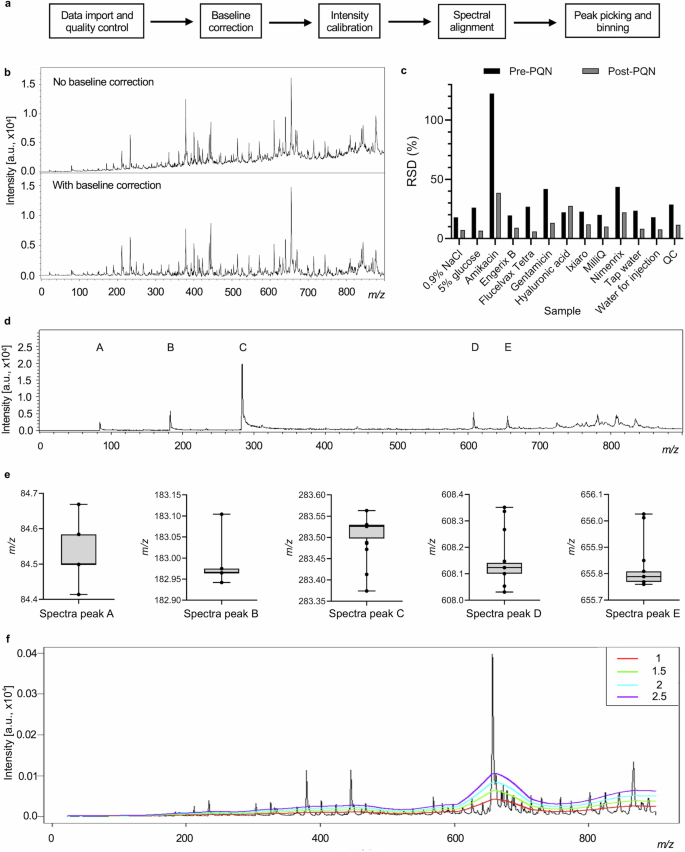
a MALDIquant workflow. b Baseline drift correction using TopHat algorithm, spectra for hyaluronic acid. c Comparing the effect of pre and post probabilistic quotient normalisation (PQN) on the percentage relative standard deviation (RSD) for the vaccine, falsified constituent, and quality control (QC) sample replicates. d QC spectrum showing peaks labelled A–E used to illustrate m/z variation. e Box plots illustrating variation in m/z across 24 QC samples for peaks labelled A–E in part D. The line in the grey box indicates the median value, with the box limits showing the interquartile range. Whiskers extend to max and min values. f Comparing different signal-to-noise ratio (SNR) thresholds using an averaged mass spectrum incorporating authentic and falsified vaccines/constituents. Coloured coded numbering representing SNR thresholds.
Baseline drift across the mass range is a common feature of MALDI-mass spectra, and this can interfere with peak intensity comparisons between samples. For example, in Fig. 5b the upper spectrum without correction shows the baseline drifts with increasing m/z . MALDIquant provides either a statistics-sensitive non-linear iterative peak-clipping (SNIP) algorithm developed by Ryan et al. 54 , a TopHat approach derived from mathematical morphology 55 , ConvexHull or median algorithm to correct for this, based on user selection. We applied the TopHat baseline correction to each acquired spectrum which mimicked the default algorithm set in Bruker flexControl software. The lower mass spectrum in Fig. 5b shows the result of applying the baseline correction with the beneficial effect of lowering the baseline, especially towards the higher end of the mass range.
Intensity shifts from one replicate spectrum to another were identified in the analysis of the vaccine and falsified constituent samples (see sample RSD variation in Fig. 6 a, b and QC sample analysis in Fig. 5c ). Post-acquisition data normalisation can be used to minimise these variations and reduce the influence of experimental or analytical variability. There are various statistical approaches (used extensively in metabolomics, for example) where large datasets are compared, and here a probabilistic quotient normalisation (PQN) was applied 56 . This was found to have a positive effect by lowering the RSD values in almost all cases (Fig. 5c ).

a Biotyper Sirius dendrogram. b VITEK MS dendrogram. Hierarchical clustering dendrogram of all samples sorts almost all sample replicates ( n = 12 for each sample type) into their respective groups.
After data normalisation, variations in m/z were evaluated and corrected to ensure effective comparisons could be made across multiple samples in the experiment. Figure 5d shows a representative mass spectrum of the QC sample with five peaks labelled (A − E). Peaks A to E in Fig. 5d show a variation in m/z across the 24 QC replicates which are illustrated by the box plots in Fig. 5e . The mean average range in m/z value per peak was 0.231 Da with a standard deviation of 0.06 Da. This variability is largely due to differences in peak shape where flat top peaks lead to fluctuation in the centroided m/z value (Exemplar peak shapes shown in Supplementary Fig. 6 ). Peaks were aligned to correct for this using non-linear warping of peaks with the locally weighted scatterplot smoothing (LOWESS) method 57 , 58 with tolerance, SNR and half-window size parameters selected to optimise the spectral alignment of the dataset.
To evaluate how mass spectral peaks are ' picked ' , (e.g. automatically recognised as an individual mass spectral peak) and accurately assigned across samples, we tested various signal-to-noise ratio threshold settings. MALDIquant can identify local maxima and minima across the mass spectrum and then compare which peaks are above a set SNR threshold to identify the signal as a spectral peak for inclusion in the dataset. Figure 5f illustrates the effect of different signal-to-noise ratios using an averaged mass spectrum of all the genuine and falsified vaccine samples. Peak binning (with a user-defined threshold) was also used at this stage to ensure individual m/z features were correctly assigned across all the mass spectra. This increases mass spectral precision to ensure a more effective data comparison. The threshold for peak binning was chosen based on an evaluation of the spectral resolution across the dataset.
Vaccine authentication using machine learning (ML)
Having developed and validated a combined sample analysis and data processing workflow we applied this to analyse and compare authentic and falsified vaccine constituents using both MALDI platforms in parallel. We analysed samples from three replicate vials of each of the four authentic vaccines and eight falsified vaccine surrogates. Four analytical replicates were also analysed for each vial replicate to investigate analytical and vaccine vial-to-vial reproducibility. The samples were spotted and then analysed using the 0–900 m/z range. The resulting data were processed using the MALDIquant workflow developed, and a data table representing all the results was produced (example given in Supplementary Table 2 ). The heatmap in Supplementary Fig. 7 provides a visual overview of the dataset and was used to confirm that no individual or experimental class outliers were present (equivalent figure for the VITEK MS in Supplementary Fig. 8 ). To explore whether the vaccines and falsified constituents could be distinguished from each other using a multivariate statistical machine learning approach, we first performed hierarchical clustering (based on a Euclidean distance measure and a Ward clustering algorithm). We found that each of the samples replicates clustered together (Fig. 6 ) in almost all cases for the data collected on both MALDI platforms, which showed that both datasets contained m/z features that could differentiate authentic and falsified vaccines. To statistically model how well the data could distinguish the different sample groups, we compared each individual authentic vaccine with all the falsified vaccine samples using partial least squares-discriminant analysis (PLS-DA), commonly used in untargeted data modelling 59 , 60 . PLS-DA is a supervised dimensionality reduction method that builds models based on input variables and identifies which of these variables maximise separation between the groups. Validated models can be used to make future predictions on new data presented to the model. We first created a PLS-DA model using the Biotyper Sirius data for the authentic Engerix B vaccine with all the falsified vaccines. To illustrate the results, the PLS-DA scores plot (Fig. 7a ) shows sample replicates cluster by sample type, and the model distinguished the authentic vaccine from the falsified vaccine constituents (and also the falsified constituents from each other) and was shown to create a strong model that was not overfitting the data (Fig. 7 b, c ). We subsequently created models for each authentic vaccine using both the Sirius and VITEK datasets. To demonstrate that the PLS-DA models were reliable and not overfitting the datasets, we performed cross-validation, permutation testing and a modified external validation for each model 61 . For the Engerix B Sirius data model R-squared (R2) and Q-squared (Q2) were between 0.8 and 1 and the permutation test statistic was P < 0.01 (Fig. 7b, c ) 62 . Tabulated values for the PLS-DA cross-validation are displayed in Supplementary Table 3 (and the equivalent PLS-DA plots for the VITEK Engerix B data are shown in Supplementary Fig. 9 ). Similar results were obtained when comparing the other three genuine vaccines with all falsified vaccine surrogates across both MALDI platforms (Supplementary Figs. 10 – 15 ). We also performed an independent external validation where each dataset was randomly split into a training set (80% of the data) and an external test set (20% of the data). The models were created using the training set, and then the classifications were confirmed using the test set (which had not been seen by the model previously). Confusion matrices (see Supplementary Tables 4 – 27 , with the genuine vaccine highlighted in yellow) were created for the external validation datasets, and in each case (for both Sirius and VITEK results), the authentic vaccines were predicted correctly 63 . In some cases, the different types of water and saline falsified constituents were not fully resolved, but this was not unexpected considering their compositional similarity and this did not compromise the identification of the authentic vaccines. In summary, our PLS-DA modelling demonstrated that the MALDI-MS data could be used to reliably predict each genuine vaccine from falsified constituents.

a PLS-DA two-dimensional scores plot shows sample group clustering. b Cross-validation shows a minimum of four components (mass spectral peaks) are required to differentiate the experimental groups for the best Q-squared (Q2) value (shown by *). Supplementary Table 3 gives the numerical values for the performance of accuracy, R-squared (R2) and Q2 in the cross-validation. The performance axis indicates the predictive ability of the model. c Permutation testing showed the model was significant with P < 0.01.
Next, we identified the most discriminatory mass spectral peaks in the models by examining the top 15 m/z features in the Variable Importance in the Projection (VIP) plot. Figure 8a shows the ranking of each of the top 15 m/z values from the Sirius data by way of example. The mass spectral abundance differences for the top 15 VIPs were statistically significant for at least one or more of the falsified constituents individually compared to Engerix B (two-way ANOVA with Dunnett multiple comparison test, Fig. 8b ). Supplementary Figs. 16 – 22 further illustrate Sirius and VITEK MS VIP plots and ANOVA summaries for the falsified surrogates compared to the genuine vaccines. The PLS-DA results demonstrated that the MALDI data modelling, based on the full MALDI-mass spectrum, could be used to discriminate between authentic vaccines and falsified vaccine constituents in addition to the four genuine vaccines themselves (Supplementary Fig. 23 ).

a Variable importance in the projection (VIP) of the peaks at m/z 0–900 for the Engerix B vaccine compared to the eight falsified constituents. The top 15 m/z values are plotted based on their VIP score. The heatmaps to the right of the plot represent the relative intensities of the m/z values for each sample group averaged over the group. b Two-way analysis of variance (ANOVA) with Dunnett multiple comparison test results for the top 15 m/z values from the VIP analysis. m/z values with at least one statistically significant comparison ( P < 0.05) for a falsified constituent compared to Engerix B are marked with a check.
One way to implement the MALDI-MS method as a tool for vaccine supply chain screening, would be to automate matching and scoring multiple spectral peaks identified in experimental samples with an online database containing multiple discriminatory m/z features previously collected and validated using samples of authentic vaccines. For example, a real-time score or percentage match for the mass spectral profile could be used to indicate the likelihood of vaccine authenticity. This approach is analogous to that currently used for bacterial strain identification by MALDI-MS in clinical laboratories worldwide. A complex profile of multiple m/z features would, therefore, be required to make a positive match with a falsified product and creating such a falsified product with the necessary specificity would likely be impractical and uneconomic.
Finally, we manually validated the multivariate model’s ability to predict important biomarker m/z values and identify candidate peaks. To do this, we interrogated the processed dataset independently from the PLS-DA model, comparing each individual m/z value’s peak intensity in the list of all identified peaks measured across all samples to look for statistically significant differences in mean abundance. For example, we compared each mass spectral peak from the Engerix B analysis with each peak from the analysis of the falsified vaccine constituents using ANOVA with the Dunnett multiple comparison test. In total 3699 m/z values were compared statistically, of these 143 showed statistically significant difference between Engerix B and at least one of the falsified vaccine constituents. Of the 143 significant peaks, 63 peaks were present in a falsified vaccine sample and not present at all in the genuine Engerix B, or vice versa. 63 peaks were, therefore, found to be unique differentiators of authenticity or falsification. It was, therefore, straightforward to unambiguously differentiate Engerix B from all other falsified vaccine surrogate samples using these peaks. The result of this analysis showed that there were many mass spectral peaks that could be used to discriminate the falsified from authentic vaccine samples. This provided strong redundancy and, therefore, demonstrated the potential for developing a database of distinguishing mass spectral peaks that could be used for vaccine authenticity testing. We have purposefully, on public health security grounds, not provided the full list of these features so as not to reveal specific features that may be used in any future databases for authenticity testing. However, Fig. 9 summarises the numbers of m/z features and those found to be significant and Fig. 10 presents two peaks from the group of 63 to illustrate. All of the Top 15 VIP m/z values from the PLS-DA modelling in Fig. 8a were also found in the 143 peaks identified by univariate statistical analysis for Engerix B, illustrating the overlap between the machine learning and manual inspection approaches for the identification of potential “ biomarker ” peaks suitable for differentiating genuine from fake vaccine samples.
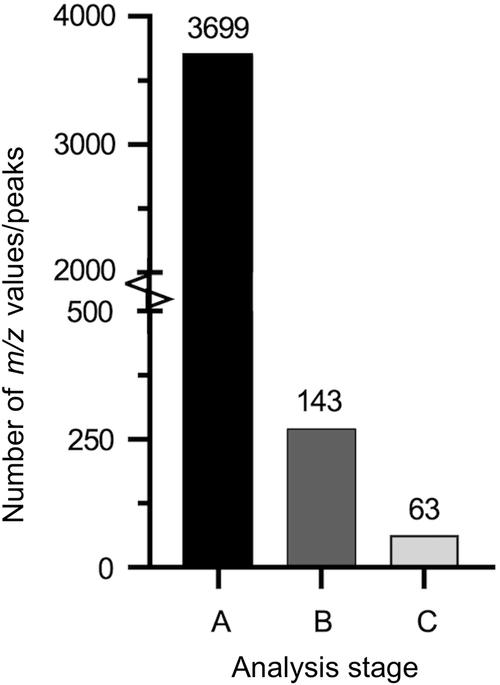
Bar A represents the 3699 total m/z values identified by MALDIquant peak detection and binning. B represents the 143 peaks in the raw spectra that yielded a statistically significant P value (P ≤ 0.05) for at least one falsified constituent compared to Engerix B. Bar C represents the 63 significant peaks in the raw spectra that have a clear presence in Engerix B and absence in at least one falsified constituent (or vice versa).

a Peaks present at m/z 148.661 in 0.9% ( m/V ) sodium chloride, 5% ( m/V ) glucose, tap water, Milli-Q and water for injection but not the genuine vaccine Engerix B. b A peak at m/z 656.246 unique to Engerix B against the falsified vaccine constituents 5% ( m/V ) glucose, Amikacin, Gentamicin, Milli-Q and water for injection.
Reports of substandard and falsified vaccines are increasing worldwide. In response, we have developed and validated a MALDI-MS sample analysis and data processing method and demonstrated its successful implementation in the context of vaccine authentication using four different authentic vaccines and known falsified vaccine surrogates. We chose two different MALDI systems that are distributed globally for the routine identification of pathological microorganisms in clinical laboratories. This pre-existing network of instrumentation, therefore, provides potential as a resource for future global supply chain monitoring. Combined with open-source machine learning and statistical analysis, we demonstrated our workflow could distinguish genuine from falsified vaccine surrogates accurately. To the best of our knowledge, this is the first time MALDI-MS has been used to successfully identify and discriminate vaccines and falsified surrogates using a machine-learning approach to data analysis.
A challenge in using MALDI-MS, compared to the other mass spectrometry platforms such as LC-MS and GC-MS, is its potential variability in the mass spectral peak intensities. We rigorously tested analytical, experimental and vaccine vial reproducibility and demonstrated that post-acquisition data processing was effective at minimising these effects. Our findings are commensurate with other studies in this regard; for example, in metabolomics applications where MALDI-MS has been applied successfully, in conjunction with machine learning, to identify metabolic differences in sera from lung cancer patients compared to healthy controls 53 . PLS-DA analysis demonstrated that a machine learning approach could be used to model MALDI-mass spectral peaks and their intensities for discriminating authentic and falsified vaccines. We also performed multivariate modelling on multiple authentic vaccines and in all cases, we were able to distinguish genuine from falsified vaccines using the validated PLS-DA model. In some cases, the different types of water and saline used in place of authentic vaccines were not fully resolved from each other, presumably due to their compositional similarity, but this did not detract from the PLS-DA model being able to reliably distinguish authentic vaccines from vaccine surrogates. The results of the PLS-DA modelling provided proof of principle that an unbiased, machine learning approach can successfully identify genuine vaccines from falsified constituents using MALDI-MS data and that this could be performed with very similar results using two different analytical instruments (Bruker Biotyper Sirius and bioMérieux VITEK MS) established and run at different laboratories by different people. Using univariate analysis, we also showed that 63 mass spectral peaks could be identified as uniquely present or absent in the Engerix B spectrum when compared to the falsified vaccine constituents. This illustrated strong potential for developing a database approach for vaccine authentication. The principle behind the identification of microorganisms with MALDI ' Biotyping ' instruments is the comparison of the mass spectrum of an unknown organism against a library of reference mass spectra 64 . Our results show this principle can also be applied to vaccine authentication given the large number of potentially diagnostic (discriminatory) peaks identified through data modelling. In summary, the benefit of MALDI analysis for vaccine authentication is two-fold: first, the method involves globally distributed MALDI technology, already deployed in a health context, making it potentially feasible to develop a global vaccine screening system. Second, using open-source machine learning with the full MALDI-mass spectrum would make it very difficult, if not impossible, to falsify vaccine surrogates that could pass through such a screening approach effectively. A careful assessment of how best to deploy the method in a real-world setting is required, and will be context-dependent. One approach could be to do so in combination with hand-held spectroscopic devices (e.g. as described in Mosca et al., 2023), deployed for rapid ‘on-site’ analysis. Suspicious samples could, in this way, be selected for confirmatory analysis using the MALDI-MS method developed here, potentially at a regional centre where MALDI-MS is already established for clinical testing applications.
The m/z values that proved most discriminatory in our study tended to be the compounds in the m/z 0–900 range and this demonstrated that diagnostic spectra were present for low-mass excipients of the vaccines themselves that we studied. This shows that selectivity is found across a wide range of adjuvants, the vaccine-specific profile of which would be more complex to falsify 65 . This molecular multiplexity can be seen as a benefit for vaccine authenticity testing as it does not rely on the presence or absence of a specific, or even a small number of, ' biomarker ' compounds that have the potential to be relatively easily introduced into falsified products. Whilst this study has focussed on developing a validated method and associated workflow using four genuine vaccines and eight vaccine surrogates known to have been used as falsified vaccines in real-world settings, we see no reasons why this approach could not be extended to other vaccines and liquid medicines such as insulin and biologics and associated falsified products.
This research demonstrates that a MALDI-MS method has the potential to be deployed in an international supply chain setting given that the instrumentation used is currently globally distributed for healthcare applications. The next steps the the porcess would be to develop and test a comprehensive online database for automated vaccine testing based on the methodology and workflow outlined here. Our research was aimed at the detection of vaccine falsification, however, evaluating the utility of MALDI-MS to detect a wider range of substandard vaccines, potentially brought about through inadvertent manufacturing errors or chemical degradation within supply chains (excursions in cold chain management, for example), would also be of interest in future work. We have provided a validated MALDI-MS method and proof of principle that it could be used in a range of vaccine quality control scenarios in the future.
Sample information
All samples were stored at 4 °C prior to analyses in accordance with manufacturers' storage recommendations and were in date (following labelled shelf-life) at the time of sample preparation and data acquisition. Table 3 provides details of the genuine vaccines used in this study, and the constituents that have been reported to be found in falsified vaccines, also tested in this study. Hyaluronic acid was obtained from Amazon (London, UK), Milli-Q water from a Milli-Q® Direct 8 water purification system (Merck Millipore, Darmstadt, Germany), and tap water from the Chemistry Research Laboratory, Oxford University. All other samples were procured through a local pharmacy in Oxford, UK.
Sample preparation
Samples were spotted onto MALDI target plates (Bruker, Billerica, MA, USA; part number (P/N) 1840375) and MS-DS target slides (bioMérieux, Basingstoke, UK), and prepared for analysis using an ASSIST PLUS pipetting robot equipped with an eight channel 12.5 μL VOYAGER adjustable tip spacing pipette and 12.5 μL GripTip pipette tips, all by INTEGRA Biosciences (Zizers, Switzerland; P/N 4505, 4721 and 6453 respectively). A dual reservoir adaptor fitted with a 25 mL divided reservoir (INTEGRA Biosciences; P/N 4547 and 4358 respectively) held the prepared α-cyano-4-hydroxycinnamic acid (HCCA/CHCA) matrix (bioMérieux CHCA matrix purchased from bioMérieux, (Basingstoke, UK; P/N 411071), Bruker standard solvent purchased from Sigma-Aldrich (Dorset, UK; P/N 900666), and Bruker portioned HCCA from Bruker (P/N 8255344)) in deck position A of the robot. Samples were pipetted manually into a 96-well plate (Sarstedt, Nümbrecht, Germany; P/N 72.1980.010) and placed in deck position B and the MALDI target plates were placed into a custom-built holder in position C. A pipetting programme was designed and uploaded to the VOYAGER pipette using the INTEGRA VIALAB software (version 2.1.1.0). For all sample preparations, the matrix and samples were mixed in a 1:1 ( V / V ) ratio and four replicates of 2 μL spots of the mixture were pipetted onto the MALDI target plates. The target plates were air-dried prior to MALDI-MS analysis. Although a pipetting robot was used for the preparation of samples, it should be noted that this is not mandatory and was used for efficiency rather than necessity.
MALDI-MS data acquisition
Raw MS spectra were acquired via MALDI-mass spectrometry using a Bruker MALDI Biotyper Sirius (Bruker Daltonics, Bremen, Germany) and a bioMérieux VITEK MS (bioMérieux, Craponne, France). Each sample spot on the MALDI target plate was measured over three overlapping mass ranges: m/z 0–900, m/z 700–2,500 and m/z 2,000–20,000. Prior to sample analysis both MALDI-MS instruments were calibrated with Bruker antibiotic calibration standard (ACS), MBT Star-ACS, and Bruker bacterial test standard (BTS), both acquired from Bruker (product references 1818702 and 8255343, respectively).
For the Bruker MALDI Biotyper Sirius, custom AutoXecute methods were designed in Bruker flexControl software (version 3.4, Bruker Daltonics, Bremen, Germany) for the ' MSP MALDI Biotarget 96 plate ' geometry. Parameters for the three AutoXecute methods were as follows. Laser: MS/parent mode on and weight 2.00; initial laser power of 20% and maximal laser power set to 100%. Evaluation: ' use masses from ' was defined for each of the three specified mass ranges; ' use background list' none; ' ignore the 1 largest peak in the defined mass range ' was not selected; MBT_Process processing method; smoothing and baseline subtraction off; peak resolution must be higher than 400; and digest/peptides with signal intensity ' high ' . Accumulation: MS/parent mode on; sum up 250 satisfactory shots in 50 shot steps; and dynamic termination off. Movement: random walk raster pattern with four shots at raster spot selected and quit sample after 60 subsequently failed judgments. Processing: flexAnalysis and Bio Tools MS methods set to none. Randomised acquisition sequences were generated for each plate of samples (using the 'RAND()' function in Microsoft Excel which generates random numbers), and implemented in the automatic run design within flexControl.
For the bioMérieux VITEK MS, data were acquired using the Shimadzu Biotech Launchpad software version 2.9.5.6 (Kratos Analytical, Manchester, UK). Parameters were as follows: laser power, 48; profiles, 100 per sample; shots, five accumulated per profile; maximum laser rep rate, 50.0. Pulsed extraction was optimised at 450 Da for m/z 0–900, 1600 Da for m/z 700–2500 and 13 kDa for m/z 2000–20,000. The regular circle bioMérieux CHCA raster was used with a diameter of 2 mm, 180 µm spacing and 109 points per target. Parent Data Export in the Method Editor was set as mzXML for the raw data file. SARAMIS Target Manager was used to create a list of samples with corresponding spot locations that was exported to Experiment Genie as a *.txt file. The *.txt file was opened in Microsoft Excel and the acquisition sequence was randomised. In auto experiment, the 4 × 48 Fleximass DS plate configuration was chosen and the *.txt file was set as a standard file in Import Experiment Genie before running the randomised acquisition sequence.
Data processing
Spectra were exported from Bruker flexAnalysis (version 3.4, Bruker Daltonics) and Shimadzu Biotech Launchpad software (version 2.9.5.6). Raw spectra (.fid data files) from the Bruker Biotyper® Sirius were converted to .mzXML format with the CompassXport data export tool (Bruker Daltonics; version 4.0.0.8). The mzXML files from both Sirius and VITEK were imported into R studio and processed in R v4.1.2 using the MALDI Quant package. Baseline correction was performed using a ' TopHat ' algorithm and intensity calibration was performed with probabilistic quotient normalisation (PQN). Spectral alignment was performed using a half window size, signal-to-noise ratio (SNR) and tolerance of 7, 1 and 0.2, respectively. A locally weighted scatterplot smoothing (LOWESS) warping method was used. Peak detection used the same SNR, and half-window size parameters as previously defined and peak binning used a tolerance of 0.1. The resulting peak intensity matrices were exported as a .csv file for further analysis.
Data analysis
Manual inspection of the raw mass spectra was performed by uploading the data files into Bruker flexAnalysis software (version 3.4) and Shimadzu Biotech Launchpad software (version 2.9.5.6) from the Sirius and VITEK instruments, respectively.
Statistical analysis and data visualisation
Statistical analysis of the processed peak intensity matrices and visualisation of the data were performed using MetaboAnalyst (version 5.0, https://metaboanalyst.ca ) and Workflow4metabolomics ( https://workflow4metabolomics.org/ ). No data filtering was performed. Metaboanalyst was used to generate ' heatmaps ' , ' hierarchical clustering dendrogram ' , ' principal component analysis (PCA)' and ' partial least squares-discriminant analysis (PLS-DA) ' . MetaboAnalyst data normalisation was performed by ' sum' and Pareto scaled. Workflow4metabolomics was used for external validation of the multivariate models and the generation of confusion matrices. Two-way analysis of variance (ANOVA) with Dunnett multiple comparison test was performed in GraphPad Prism (GraphPad Software, Boston, MA, USA; version 9.4.1). Statistical analysis figures and graphical representations were created using both MetaboAnalyst and GraphPad Prism.
Method validation
To ensure the MALDI-MS workflow was reproducible and reliable, having developed the method, both MALDI instruments were systematically validated for: (1) intra- and inter-day precision; repeatability and stability. Quality control (QC) samples were prepared as equimolar mixtures of all samples and spotted onto multiple positions on the MALDI plate in the same way as for experimental samples. With each spot representing a QC sample, 24 QC samples were each analysed on two different days, and the intra-day and inter-day precision was calculated as the percentage relative standard deviation (RSD) of the total ion count (TIC) across the mass range for each instrument. Intra-day reproducibility ranged from 28.75% to 41.96% and the combined inter-day precision was 34.85% and 39.89% for the Sirius and VITEK instruments, respectively. QC samples were measured under the same conditions for each instrument to estimate repeatability.
Data availability
The datasets from this study are available from the corresponding author on reasonable request.
Code availability
The code used in this study is available from the corresponding author on reasonable request.
WHO. Substandard and falsified medical products. https://www.who.int/news-room/fact-sheets/detail/substandard-and-falsified-medical-products (2018).
Yoshida, N. Research on the development of methods for detection of substandard and falsified medicines by clarifying their pharmaceutical characteristics using modern technology. Biol. Pharm. Bull. 47 , 878–885 (2024).
Article CAS PubMed Google Scholar
Medicine Quality Research Group University of Oxford. Medical product quality reports. https://www.iddo.org/mq/research/medical-product-quality-reports (2022).
People may have got antibiotics at fake jab camp in Kolkata: cops. Hindustan Times (25 January 2021).
Hashmi, F. Over 58,000 fake COVID-19 vaccine doses busted In China, 600 doses sent overseas, https://www.urdupoint.com/en/world/over-58000-fake-covid-19-vaccine-doses-buste-1164592.html (2021).
Rajaram, P. Kolkata cops seize ‘dust and liquid’ vials from fake vaccination site where TMC MP Mimi Chakraborty took jab. India Today (25 June 2021).
Fabi, R. & Costa, A. B. D. Indonesia begins re-vaccinating victims of fake drug ring. Reuters (18 July 2016).
Rita, J. Locsin hints reported COVID-19 vaccine in Binondo could be fake, just ‘dextrose’. GMA News (21 December 2020).
Hu, R. L., Fooks, A. R., Zhang, S. F., Liu, Y. & Zhang, F. Inferior rabies vaccine quality and low immunization coverage in dogs (Canis familiaris) in China. Epidemiol. Infect. 136 , 1556–1563 (2008).
Article CAS PubMed PubMed Central Google Scholar
Offit, P. A. The Cutter Incident: How America’s First Polio Vaccine Led to the Growing Vaccine Crisis (Yale Univ. Press, 2007).
Henson, K. E. R., Santiago, A. A. C. & Namqui, S. S. Counterfeit rabies vaccines: the Philippine experience. Open Forum Infect. Dis. 7 , ofaa313 (2020).
Article PubMed PubMed Central Google Scholar
WHO. Full list of WHO medical product alerts, https://www.who.int/teams/regulation-prequalification/incidents-and-SF/full-list-of-who-medical-product-alerts (2024) and https://www.nda.or.ug/wp-content/uploads/2022/02/Alert-1-2016_Fev_Falsified-AMARIL-yellow-fever-vaccine-SEARO_EN.pdf (2016).
Nurlaela Arief, N., Karlinah, S., Setianti, Y. & Susilawati, S. Counterfeit vaccines in Indonesia: managing the issue through media. J. Commun. Manag. 22 (2018).
WHO. WHO global surveillance and monitoring system for substandard and falsified medical products. https://apps.who.int/iris/handle/10665/326708 (2017).
Mosca, S. et al. Innovative method for rapid detection of falsified COVID-19 vaccines through unopened vials using handheld spatially offset Raman spectroscopy (SORS). Vaccine 41 , 6960–6968 (2023).
Article PubMed Google Scholar
Pisani, E. et al. Substandard and falsified medicines: proposed methods for case finding and sentinel surveillance. JMIR Public Health Surveill. 7 , e29309 (2021).
Bharucha, T. et al. Repurposing rapid diagnostic tests to detect falsified vaccines in supply chains. Vaccine 42 , 1506–1511 (2024).
Zuber, P. L. F. et al. Evolving pharmacovigilance requirements with novel vaccines and vaccine components. BMJ Glob. Health 6 , e003403 (2021).
Caillet, C. et al. Evaluation of portable devices for medicine quality screening: lessons learnt, recommendations for implementation, and future priorities. PLos Med. 18 , e1003747 (2021).
McCullagh, J. S. O. & Oldham, N. J. Mass Spectrometry (Oxford Univ. Press, 2019).
Blaise, B. J. et al. Statistical analysis in metabolic phenotyping. Nat. Protoc. 16 , 4299–4326 (2021).
Galal, A., Talal, M. & Moustafa, A. Applications of machine learning in metabolomics: disease modeling and classification. Front. Genet. 13 , 1017340 (2022).
Pomyen, Y. et al. Deep metabolome: applications of deep learning in metabolomics. Comput. Struct. Biotechnol. J. 18 , 2818–2825 (2020).
Walsby-Tickle, J. et al. Anion-exchange chromatography mass spectrometry provides extensive coverage of primary metabolic pathways revealing altered metabolism in IDH1 mutant cells. Commun. Biol. 3 , 247 (2020).
Alldritt, I. et al. Metabolomics reveals diet-derived plant polyphenols accumulate in physiological bone. Sci. Rep. 9 , 8047 (2019).
Liebal, U. W., Phan, A. N. T., Sudhakar, M., Raman, K. & Blank, L. M. Machine learning applications for mass spectrometry-based metabolomics. Metabolites 10 , 243 (2020).
Neely, B. A. & Palmblad, M. Machine learning in proteomics and metabolomics. J. Proteome Res. 21 , 2553–2554 (2022).
Feucherolles, M. et al. Combination of MALDI-TOF mass spectrometry and machine learning for rapid antimicrobial resistance screening: the case of Campylobacter spp. Front. Microbiol. 12 , 804484 (2021).
Lazari, L. C., Rosa-Fernandes, L. & Palmisano, G. Machine learning approaches to analyze MALDI-TOF mass spectrometry protein profiles. Methods Mol. Biol. 2511 , 375–394 (2022).
Rashidi, H. H. et al. Comparative performance of two automated machine learning platforms for COVID-19 detection by MALDI-TOF-MS. PLos ONE 17 , e0263954 (2022).
Tran, N. K. et al. Novel application of automated machine learning with MALDI-TOF-MS for rapid high-throughput screening of COVID-19: a proof of concept. Sci. Rep. 11 , 8219 (2021).
van Oosten, L. N. & Klein, C. D. Machine learning in mass spectrometry: a MALDI-TOF MS approach to phenotypic antibacterial screening. J. Med. Chem. 63 , 8849–8856 (2020).
Amini, A., Lodén, H. & Rundlöf, T. Identification of peptides and proteins in suspected illegal medicinal products using MALDI-TOF-MS. Eur. Pharm. Rev. 24 (2019).
Bronzel, J. L. Jr, Milagre, C. D. F. & Milagre, H. M. S. Analysis of low molecular weight compounds using MALDI- and LDI-TOF-MS: direct detection of active pharmaceutical ingredients in different formulations. J. Mass Spectrom. 52 , 752–758 (2017).
Debeljak, Ž. et al. MALDI TOF mass spectrometry imaging of blood smear: method development and evaluation. Int. J. Mol. Sci. 22 , 585 (2021).
Di Francesco, L. et al. A MALDI-TOF MS approach for mammalian, human, and formula milks’ profiling. Nutrients 10 , 1238 (2018).
Hortin, G. L. The MALDI-TOF mass spectrometric view of the plasma proteome and peptidome. Clin. Chem. 52 , 1223–1237 (2006).
Kober, S. L., Hollert, H. & Frohme, M. Quantification of nitroaromatic explosives in contaminated soil using MALDI-TOF mass spectrometry. Anal. Bioanal. Chem. 411 , 5993–6003 (2019).
Siricord, C. & O’Brien, P. A. MALDI-TOF mass spectrometry can be used for detection of pathogenic microorganisms in soil. Australas. Plant Path 37 , 543–545 (2008).
Lévesque, S. et al. A side by side comparison of Bruker Biotyper and VITEK MS: utility of MALDI-TOF MS technology for microorganism identification in a public health reference laboratory. PLos ONE 10 , e0144878 (2015).
Pollard, A. J. & Bijker, E. M. A guide to vaccinology: from basic principles to new developments. Nat. Rev. Immunol. 21 , 83–100 (2021).
Gibb, S. & Strimmer, K. MALDIquant: a versatile R package for the analysis of mass spectrometry data. Bioinformatics 28 , 2270–2271 (2012).
Pang, Z. et al. MetaboAnalyst 5.0: narrowing the gap between raw spectra and functional insights. Nucleic Acids Res. 49 , W388–W396 (2021).
Engerix B 20 micrograms/1 ml Suspension for injection in pre-filled syringe. https://www.medicines.org.uk/emc/product/1637/smpc#gref (2023).
Flucelvax Tetra. https://www.ema.europa.eu/en/medicines/human/EPAR/flucelvax-tetra (2023).
Ixiaro. https://www.ema.europa.eu/en/medicines/human/EPAR/ixiaro (2023).
Nimenrix. https://www.ema.europa.eu/en/medicines/human/EPAR/nimenrix (2024).
Costa, A. B. D. & Kapoor, K. Indonesian lawmakers seek seizure of unapproved vaccines amid fake drug scare. https://www.reuters.com/article/us-indonesia-health-crime-idUKKCN0ZD1LB (2016).
Fałszywe szczepionki w Polsce. “To powszechnie dostępny środek”. https://www.polsatnews.pl/wiadomosc/2021-04-22/falszywe-szczepionki-w-polsce-to-powszechnie-dostepny-srodek/ (22 April 2021).
Topić Popović, N., Kazazić, S. P., Bojanić, K., Strunjak-Perović, I. & Čož-Rakovac, R. Sample preparation and culture condition effects on MALDI-TOF MS identification of bacteria: a review. Mass Spectrom. Rev. 42 , 1589–1603 (2023).
Oberle, M. et al. The technical and biological reproducibility of matrix-assisted laser desorption ionization-time of flight mass spectrometry (MALDI-TOF MS) based typing: employment of bioinformatics in a multicenter study. PLos ONE 11 , e0164260 (2016).
Albrethsen, J. Reproducibility in protein profiling by MALDI-TOF mass spectrometry. Clin. Chem. 53 , 852–858 (2007).
Lai, X. et al. Combining MALDI-MS with machine learning for metabolomic characterization of lung cancer patient sera. Anal. Methods 14 , 499–507 (2022).
Ryan, C. G., Clayton, E., Griffin, W. L., Sie, S. H. & Cousens, D. R. SNIP, a statistics-sensitive background treatment for the quantitative analysis of PIXE spectra in geoscience applications. Nucl. Instrum. Methods Phys. Res. Sect. B Beam Interact. Mater. At. 34 , 396–402 (1988).
Article Google Scholar
Sternberg, S. R. Grayscale morphology. Comput. Vis. Graph. Image Process. 35 , 333–355 (1986).
Dieterle, F., Ross, A., Schlotterbeck, G. & Senn, H. Probabilistic quotient normalization as robust method to account for dilution of complex biological mixtures. Application in 1H NMR metabonomics. Anal. Chem. 78 , 4281–4290 (2006).
He, Q. P., Wang, J., Mobley, J. A., Richman, J. & Grizzle, W. E. Self-calibrated warping for mass spectra alignment. Cancer Inf. 10 , 65–82 (2011).
CAS Google Scholar
Wehrens, R., Bloemberg, T. G. & Eilers, P. H. Fast parametric time warping of peak lists. Bioinformatics 31 , 3063–3065 (2015).
Stephen, C. G. & Dane, A. H. in Metab olo mics - Fund amentals and Applications (ed. Prasain, J.) Ch. 4 (IntechOpen, 2016).
Worley, B. & Powers, R. Multivariate analysis in metabolomics. Curr. Metabolomics 1 , 92–107 (2013).
CAS PubMed PubMed Central Google Scholar
Ralbovsky, N. M. & Smith, J. P. Machine learning for prediction, classification, and identification of immobilized enzymes for biocatalysis. Pharm. Res. 40 , 1479–1490 (2023).
Xia, J. & Wishart, D. S. Using MetaboAnalyst 3.0 for comprehensive metabolomics data analysis. Curr. Protoc. Bioinformatics 55 , 14.10.11–14.10.91 (2016).
Thevenot, E. A., Roux, A., Xu, Y., Ezan, E. & Junot, C. Analysis of the human adult urinary metabolome variations with age, body mass index and gender by implementing a comprehensive workflow for univariate and OPLS statistical analyses. J. Proteome Res. 14 , 3322–3335 (2015).
Asare, P. T. et al. A MALDI-TOF MS library for rapid identification of human commensal gut bacteria from the class Clostridia. Front. Microbiol. 14 , 1104707 (2023).
Jain, S., Venkataraman, A., Wechsler, M. E. & Peppas, N. A. Messenger RNA-based vaccines: past, present, and future directions in the context of the COVID-19 pandemic. Adv. Drug Deliv. Rev. 179 , 114000 (2021).
Download references
Acknowledgements
We are very grateful to bioMérieux for the long-term loan of the Vitek MALDI-MS for this project. We would like to thank the staff of the University of Oxford Development Office, Simon Draper, Sarah Gilbert, Adrian Hill, Andrew Pollard, Christopher Conlon and Cathrin Hauk (University of Oxford), Oxford University Hospitals NHS Foundation Trust Pharmacy, University of Oxford Occupational Health Department, Michelle Taylor-Siddons and Islip Surgery for their assistance and advice. We would also like to thank Professor David Clifton from the Department of Engineering, University of Oxford, for discussions around machine learning and staff members at the Mass Spectrometry Research Facility (Department of Chemistry, University of Oxford) for their assistance. We are grateful to the John Fell Fund (JFF 0011807), which provided funds to support this research. We gratefully acknowledge two anonymous donor families and the Oak Foundation, who provided funds to the University of Oxford to support this research. We are grateful to WHO for funding the parallel work at the Rutherford Appleton Laboratory (Ref. 2021/1170671-0) and the support of the Wellcome Trust (222506/Z/21/Z). SD is funded by an NIHR Global Research Professorship (NIHR300791). This research was funded in part, by the Wellcome Trust [222506/Z/21/Z]. For the purpose of Open Access, the author has applied a CC BY public copyright licence to any Author Accepted Manuscript version arising from this submission.
Author information
Present address: Hybrid Materials for Opto-Electronics Group, Department of Molecules and Materials, MESA+ Institute for Nanotechnology, Molecules Center and Center for Brain-Inspired Nano Systems, Faculty of Science and Technology, University of Twente, 7500AE, Enschede, the Netherlands
Hamid A. Merchant
Present address: Department of Bioscience, School of Health, Sport and Bioscience, University of East London, Water Lane, London, E15 4LZ, UK
Authors and Affiliations
Department of Chemistry, University of Oxford, Oxford, OX1 3TA, UK
Rebecca Clarke, John Walsby-Tickle, Fay Probert & James S. O. McCullagh
Department of Biochemistry, University of Oxford, Oxford, OX1 3QU, UK
Tehmina Bharucha, Benediktus Yohan Arman, Bevin Gangadharan, Laura Gomez Fernandez & Nicole Zitzmann
Kavli Institute for Nanoscience Discovery, University of Oxford, Oxford, OX1 3QU, UK
Central Laser Facility, Research Complex at Harwell, STFC Rutherford Appleton Laboratory, UK Research and Innovation (UKRI), Harwell Campus, Didcot, OX11 0QX, UK
Sara Mosca, Qianqi Lin & Pavel Matousek
Medicine Quality Research Group, NDM Centre for Global Health Research, Nuffield Department of Medicine, University of Oxford, Oxford, OX3 7LG, UK
Kerlijn Van Assche, Michael Deats, Céline Caillet, Pavel Matousek & Paul N. Newton
Mahidol-Oxford Tropical Medicine Research Unit, Faculty of Tropical Medicine, Mahidol University, Bangkok, 10400, Thailand
Kerlijn Van Assche, Susanna Dunachie, Michael Deats, Céline Caillet & Paul N. Newton
Infectious Diseases Data Observatory, Nuffield Department of Medicine, University of Oxford, Oxford, OX3 7LG, UK
Kerlijn Van Assche, Michael Deats, Céline Caillet & Paul N. Newton
Agilent Technologies LDA UK, Didcot, OX11 0RA, UK
Robert Stokes
NDM Centre for Global Health Research, Nuffield Department of Medicine, University of Oxford, Oxford, OX3 7LG, UK
Susanna Dunachie
NIHR Oxford Biomedical Research Centre, Oxford University Hospitals NHS Foundation Trust, Oxford, OX3 9DU, UK
Department of Pharmacy, School of Applied Sciences, University of Huddersfield, Huddersfield, HD1 3DH, UK
You can also search for this author in PubMed Google Scholar
Contributions
J.S.O.M., N.Z., P.M. and P.N.N. were principal investigators and conceived and designed the project along with J.W.-T., R.C., B.G. and T.B. Sample collection, processing and analysis was performed by J.W.-T., R.C., B.G., T.B. and B.Y.A. Data analysis and interpretation was performed by J.W.-T., R.C., B.G., T.B., and B.Y.A. and F.P. Resources and software were provided by F.P. and R.S. Project funding was provided by J.S.O.M., N.Z., P.M. and P.N.N. J.S.O.M wrote the manuscript. N.Z., PM., C.C., P.N.N., J.W.-T., R.C., B.G., T.B., B.Y.A., F.P., S.M., L.G.F., Q.L., K.V.A., R.S., S.D., M.D., H.A.M. and J.S.O.M. reviewed and edited the manuscript. All authors have read and agreed to the published version of the manuscript.
Corresponding author
Correspondence to James S. O. McCullagh .
Ethics declarations
Competing interests.
All authors declare no financial or non-financial competing interests.
Additional information
Publisher’s note Springer Nature remains neutral with regard to jurisdictional claims in published maps and institutional affiliations.
Supplementary information
Supplementary information, rights and permissions.
Open Access This article is licensed under a Creative Commons Attribution 4.0 International License, which permits use, sharing, adaptation, distribution and reproduction in any medium or format, as long as you give appropriate credit to the original author(s) and the source, provide a link to the Creative Commons licence, and indicate if changes were made. The images or other third party material in this article are included in the article’s Creative Commons licence, unless indicated otherwise in a credit line to the material. If material is not included in the article’s Creative Commons licence and your intended use is not permitted by statutory regulation or exceeds the permitted use, you will need to obtain permission directly from the copyright holder. To view a copy of this licence, visit http://creativecommons.org/licenses/by/4.0/ .
Reprints and permissions
About this article
Cite this article.
Clarke, R., Bharucha, T., Arman, B.Y. et al. Using matrix assisted laser desorption ionisation mass spectrometry combined with machine learning for vaccine authenticity screening. npj Vaccines 9 , 155 (2024). https://doi.org/10.1038/s41541-024-00946-5
Download citation
Received : 07 March 2024
Accepted : 07 August 2024
Published : 28 August 2024
DOI : https://doi.org/10.1038/s41541-024-00946-5
Share this article
Anyone you share the following link with will be able to read this content:
Sorry, a shareable link is not currently available for this article.
Provided by the Springer Nature SharedIt content-sharing initiative
Quick links
- Explore articles by subject
- Guide to authors
- Editorial policies
Sign up for the Nature Briefing: Translational Research newsletter — top stories in biotechnology, drug discovery and pharma.

IMAGES
VIDEO
COMMENTS
An entry-level Junior Research Scientist salary in India ranges between Rs 2.0 Lakhs to Rs 9.8 Lakhs with an average annual salary of Rs 5.0 Lakhs per annum. Junior Research Scientist in India may vary depending on the various job factors like the skills and experience of the candidates, job location, and others. Salary Source: AmbitionBox
Average time taken to become a Scientist. A BSc degree normally takes 3 years to finish, whereas integrated programs may take 5 years.A master's degree typically takes two years to complete, whereas a doctorate program takes three to four years.Furthermore, reputable laboratories, research centres, and teaching roles may demand a few years of work experience.
To become a scientist, candidates can pursue PhD degrees in relevant subjects from the top PhD Colleges across India and globally. There are several Types of Scientists based on their area of work and specialization, such as Biologists, Physicist, Astrophysicists and Biochemists . It takes around 7-10 years or even more to become an established scientist in a respective field.
The basic eligibility to be a scientist is as follows: Candidates must have a bachelor's degree from a reputed college or an institution. Graduation must necessarily be in the field of science. Candidates are required to score a minimum of 60% in their graduation. In the case of a master's degree, candidates must score a minimum of 65%.
You can also join the Industrial Sector after completing your PhD as a Research Scientist and expect an average salary of INR 7.8 lakhs per annum in India. Scientists and Life Scientists in the U.S. and Canada can earn around INR 98.5 lakhs per annum. Depending on your discipline and Industry, the average varies a lot.
Recruitment to the posts of Scientist. advt_ipu_170616_0.pdf (140.08 KB) Download (140.08 KB) Recruitment to the posts of Scientist | Council of Scientific & Industrial Research CSIR - Council of Scientific & Industrial Research covers a wide spectrum from radio and space physics, oceanography, chemicals,
Physics, chemistry, biology, math. If you are aspiring to become a biomedical researcher, you must take up the science stream in 11 th and 12 th grade. Physics, chemistry, biology (PCB) is ideal as this career path demands a lot of scientific knowledge. Additionally, taking up mathematics as one of your subjects (PCMB) is also essential to ...
On average, the salary of Research Scientists can earn around ₹400,000 to ₹800,000 per year. Courses to Become Scientist. Becoming a scientist, whether in India or abroad, can be achieved through various qualification pathways. Aspiring students are required to successfully complete multiple courses on their journey to becoming a scientist.
Step 1: Choosin g Science Stream. The first step towards becoming a Space Scientist starts selecting a stream after class 10. After clearing class 10 if you are interested in building a career as a space scientist it is mandatory to choose a stream that has Physics, Chemistry, and Mathematics (Preferrably MPC Subjects ).
You can also join the Integrated BS-MS course, a 5 year integrated BSc and MSc course. This will further deepen your knowledge and understanding of the subject. Some of the top universities in India for a Master's degree in Physics are Tata Institute of Fundamental Research (TIFR), IITs, IISERs, NISER, IISc, etc.
Key Steps to Become a Scientist in India. 1. Choose the Right Stream in Class 12. To embark on the journey of becoming a scientist, you should opt for the Science stream in Class 11 and 12, focusing on subjects like Physics, Chemistry, Biology, and Mathematics. A strong foundation in these subjects is crucial for higher studies in science.
Qualifications required to become a Scientist at NASA. Step 1 - Graduation in a STEM field. Step 2 - Pursue Master's in the STEM field. Step 3 - Enrol in a Doctoral program or Get Relevant Work experience. Opportunities for Indian Students to be a NASA scientist.
Post clearing class 12 board exams candidates must pursue undergraduate, and postgraduate courses in relevant subjects to become a scientist. Candidates must pursue a Ph.D degree in their area of specialization from any of the top PhD Colleges in India to become scientists.
Ph.D. is the next step that a candidate may pursue after their master's in science. It is basically a research program, where the students research topics of their choice of interest. Courses to Become a Scientist after 12 th . If you are someone who wishes to become a scientist after 12th, there are many courses that you may choose.
Path to Follow. To become a quantum physicist, you must first earn a Bachelor's degree in Physics. After finishing your XII, you can pursue a Bachelor's degree in Physics from a recognised university. There are many such institutes in India: Indian Institute of Science (IISc) Indian Institutes of Technology (IITs)
PhD is one of the easiest way to gain citizenship as one scores a lot of points in the PR through the same. Besides, regarding how unequal the selection process is, a lot of people have to option of either spending 10-30l in india or Spend more (even if its 15l more), go abroad...get jobs there and recover a part of that cost as well as option ...
PhD, Postdoc, Professors, the path most traveled…. A common path to becoming a scientist is to pursue an undergraduate degree, get a master's, pursue a PhD, get some experience as postdoctorate researcher, and finally you join some organization as a scientist or a professor. You usually start performing scientific research already at the ...
The video "How to Become a Senior Scientist in Government of India Research Labs" is a career guidance resource for individuals interested in pursuing a seni...
2. Pursue a Bachelor's Degree in Aerospace Engineering. 3. Explore Training Opportunities. 4. Getting a Master's Degree in Space/Aeronautical/Aerospace Engineering. 5. Find Job Opportunities at Space Research Institutions or Pursue a PhD. How to become a Rocket Scientist in India.
Whereas a BTech graduate from other universities can get anywhere near Rs. 35,000/- to Rs. 40,000/- with a lot of increments in the future to come. Agricultural Research Scientists find the ways to increase the production with existing resources. A scientist with required skills can get five-digit salary monthly.
The pharmacist can become scientist by doing Masters in Pharmacy and then doctoral degree with some specialization. The job opportunities for a pharmacist as scientist are in governmental sector (colleges, universities, research institutions, governmental laboratories) and private companies.
Discovery research schemes - Q&As for health professionals; Eligibility information for grant applicants; Flexible research careers; Funded people and projects; Grant conditions; International sanctions: how they can affect grants; Low- and middle-income countries; Why we can't fund activities in mainland China
Hence, you must focus on learning new things while keeping your heart and mind open. Try to do a few internships to gain more research experience. Talk to your seniors and professors to stay updated on the latest developments. Involve yourself in healthy and scientific discussions and try to learn from everyone.
Success as a research analyst requires a blend of technical skills, analytical capabilities, and personal attributes: Analytical Skills: This requires an ability to analyze data, comprehend quantitative information, and find trends and patterns in it. Attention to Detail: Accuracy in manipulating data as well as in preparing reports to provide accurate and reliable results.
How to become a scientist in India?Class 11th- https://voaaf.courses.store/214131?utm_source%3Dother%26utm_medium%3Dtutor-course-referral%26utm_campaign%3Dco...
News, information and features for the research, health and technology communities
Bengaluru: Hundreds of students, science teachers, researchers, and professors gathered at Bengaluru's Jawaharlal Nehru Centre for Advanced Scientific Research campus to celebrate CNR Rao's 90th birthday on 30 June. It's the institute's very own 'Teacher's Day,' celebrated for 17 years in honour of the famed Indian scientist and co-founder of JNCASR.
Bond over chemistry. Our chemistry courses help you see the world differently, starting at the atomic level. The Edible World gives budding chefs and science lovers a glimpse into the chemical reactions that happen when we make food, and the chemical makeup of meals and treats we eat every day. In our Crystals and Polymers course, we'll synthesize slime, grow rock candy, and isolate ...
A s National Space Day 2024 is celebrated across India, let us look back at the remarkable achievements of the Indian Space Research Organisation . From its modest beginnings to becoming a global ...
Safe and effective medicines are crucial to people's health worldwide but an increase in substandard and falsified pharmaceutical products threatens public health on a global scale.